

Year of Hell (episode)
- View history
Obsessed with restoring the Krenim Imperium, no matter the cost, a Krenim military temporal scientist creates changes in history that all but destroy Voyager .
- 1.2 Act One
- 1.3 Act Two
- 1.4 Act Three
- 1.5 Act Four
- 1.6 Act Five
- 2 Log entry
- 3 Memorable quotes
- 4.1 Production history
- 4.2 Story and script
- 4.3 Cast and characters
- 4.4 Production and effects
- 4.5 Costumes and props
- 4.6.1 The episode "Before and After"
- 4.7 Reception
- 4.8 Video and DVD releases
- 5.1 Starring
- 5.2 Also starring
- 5.3 Guest star
- 5.4 Special guest star
- 5.5 Co-stars
- 5.6 Uncredited co-stars
- 5.7 Stand-ins
- 5.8 References
- 5.9 Meta references
- 5.10 External links
Summary [ ]
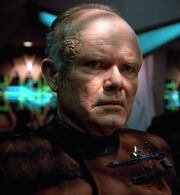
Annorax of the Krenim Imperium
A perfect day on a class M planet . An advanced civilization lives here, evidenced by a sprawling and technologically advanced metropolis. Suddenly, in the sky above, a tremendously large weapon appears. It fires a beam of energy at the city. The beam spreads out over the city and beyond. Every trace of civilization disappears, replaced by virgin land, as if the planet had not been populated.
Aboard the ship that fired the beam, a young officer checks computer displays and reports to the ship's commander that the temporal incursion is complete and all organisms on the planet have been eradicated. The commander asks if their target event has been achieved. The officer reports that it has not. The commander speculates that more definitive action is necessary and orders a course laid in for the homeworld of the Zahl . The entire species, he decides, must be erased from time .
Act One [ ]
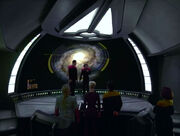
Voyager 's new astrometrics lab
Aboard the USS Voyager , the senior staff is gathered together in the new astrometrics lab to celebrate its completion. Seven of Nine is placed in charge of the lab. She and the co-designer of the lab, Ensign Harry Kim , demonstrate its abilities by showing them a projection of a new course to Earth they have plotted that by Seven's estimate will trim five years from their decades-long journey. Lieutenant jg B'Elanna Torres observes that they are entering a region of space with many class M planets. Seven informs that the territory is claimed by the Zahl , a species the Borg have assigned a low resistance quotient .
The Doctor then begins a long, drawn-out speech he has prepared, much to the chagrin of those assembled. As it becomes obvious that his speech will not be brief, he is interrupted when the bridge hails Captain Kathryn Janeway , informing her of an incoming hail from an approaching ship. The crew, glad to be spared the speech, quickly disperse and ignore The Doctor's invitation to meet up later.
The hailing ship is now firing on Voyager but causing no damage. On the bridge, Lieutenant Commander Tuvok scans the vessel and reports that it is no threat due to its limited weapons, and low warp capacity . Janeway orders an on-screen answer to the hail. It is a Krenim vessel . The hailer, a Krenim commandant , appears. Furious, he informs Janeway that they are trespassing in Krenim space and orders her to reverse course or face destruction, though his vessel is completely unable to harm Voyager . Janeway, having been told that this space actually belongs to the Zahl, dismisses his threat with a disparaging comment about his needing more than is in his torpedo tubes . The commandant angrily closes the channel. Janeway orders Voyager 's course maintained but also orders yellow alert , just in case.
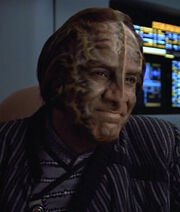
The Zahl official
Voyager has entered Zahl space. The ship is stationary with two large, Zahl ships nearby. In the briefing room , a friendly and engaging Zahl official assures Janeway that there is nothing to fear from the Krenim, who were defeated by the Zahl over a generation ago despite their formidable temporal weapons. Their ships, he tells her, still wander Zahl territory claiming the space as their own but are no more than a nuisance. Janeway acknowledges this appraisal with a smile. However, as the ambassador begins inquiring about their lengthy journey, Kim hails Janeway from the bridge and informs her the vessel has returned.
Janeway and the Zahl enter the bridge. The vessel hails and Janeway orders an on-screen answer. It is the same Krenim commandant who, upon noticing the Zahl official, accuses Janeway of consorting with their enemy. The Zahl angrily warns the commandant to disengage, threating to seize his ship and ship him home in a cargo container. As Janeway interjects, Kim reports a huge spatial distortion heading for them, five light years across and expanding. Tuvok scans it and, to the Zahl's shock, reports it to be a spacetime shock wave originating from a vessel near the Zahl homeworld. Flight control officer Tom Paris tries to take the ship to warp in an attempt to get away from the buildup of temporal energy , but the wave destabilizes the warp field , making escape impossible.

The Krenim vessel transformed
The wave overtakes all the vessels and everything quickly changes. The Zahl ships vanish. The modest Krenim vessel is transformed into a Krenim warship . On Voyager 's bridge, the Zahl official vanishes. The bridge goes from pristine to red alert condition with significant damage; lights are flickering and gases leaking. Janeway and the other officers go from being relaxed but alert to being tense and disheveled. A crewmember lies dead on the floor. None of the crew are aware that any kind of change occurred.
The ship shudders from the warship's fire. Tuvok reports their shields are at seventeen percent. Before the wave, they were at full strength. The Krenim vessel hails. The Krenim commandant appears, but instead of being impotently angry, he is deadly confident. He offers to forgo the execution of Janeway's crew if she will surrender her ship. When she coldly refuses, he warns her to prepare to be boarded and closes the channel. Janeway orders battle stations , remarking to Chakotay that " this is turning into the week of hell ."
Act Two [ ]
Voyager is pummeled by the Krenim warship, its torpedoes easily penetrating the ship's deflector shields . Chakotay cannot understand why, but Tuvok answers that the torpedoes are not photonic but chronitonic ; they are getting through their shields because they are in a state of temporal flux , slightly out of phase with space-time, simultaneously there and yet not there. Her ship defenseless, Janeway gives the order to flee at warp speed. Once out of immediate danger, she asks for a damage report. Tuvok tells her that 15 crewmembers were wounded during the battle, main power was down, environmental controls on decks 7 and 8 were non-functional, and the main computer core was offline. She asks Ensign Kim if any of the sensors were still functioning. He replies that only the short range ones were working. Janeway then orders a 24-hour tactical alert and orders Tuvok to find a way to modify the shields against the Krenim torpedoes.
The ship that caused the change in the timeline is a Krenim temporal weapon ship . The Krenim weapon revised the timeline so that the Zahl never existed, hence the Krenim were never defeated, and the entire region has again become Krenim-controlled space. The commander, Annorax , is in his chambers aboard his ship. He holds a sealed glass pyramid containing a small lock of red hair. He gazes at it with evident grief. The young officer previously on the bridge, named Obrist , enters and with dignified excitement reports that the erasure of the Zahl from history has restored the Krenim Imperium to 98% of the power it once had; 849 worlds over 5,000 parsecs . However, Annorax asks him whether or not a certain colony at Kyana Prime was restored.
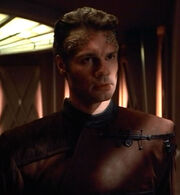
Obrist, reporting to Annorax
Obrist tells him that in this timeline, the Imperium's territory does not extend far enough to encompass Kyana Prime. He does so in a voice that shows he has been asked this question before and has always had the same answer. Disappointed by this news, Annorax responds that they have failed and orders Obrist to start calculations for another temporal incursion. Frustrated, Obrist hangs his head and shakes it. He earnestly pleads that, in two hundred years of attempts, they have never ever achieved this level of restoration and that even a minor incursion could jeopardize this unprecedented success. Clearly having no interest in entertaining his officer's objections, Annorax sternly orders him to obey his order. Resigned, Obrist acknowledges and leaves.
Voyager is chased by a Krenim warship. A torpedo slams into the junction between the saucer section and the stardrive . The bridge looks in worse condition than before as Voyager has been suffering constant Krenim attacks. Tuvok's attempts to modify the shields against the Krenim chroniton torpedoes have failed. However, Chakotay notices the warship's aft shields are down but Voyager 's own weapons are non-functional. Meanwhile, The Doctor hails from sickbay and informs them that a power overload is occurring there. Kim tries to stop it but his attempts fail, and the power overload quickly spreads throughout Deck 5. Chakotay immediately orders a complete evacuation of the deck.
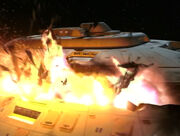
A deck on Voyager explodes
Janeway orders Tuvok to arm four of their eleven remaining photon torpedoes and deploy them like mines . She also gives orders to Paris to let the Krenim get within 5,000 meters of them in order for her plan to work. Tuvok arms the torpedoes and Paris informs Janeway that the Krenim ship is within range. She then tells Tuvok to "do it" as Voyager deploys the torpedoes toward the Krenim Warship which in turn destroys the Warship. Their victory is short-lived as Kim reports that the conduits on Deck 5 are overloading and moments away from exploding. The Doctor hurries his patients and other crewmembers into a Jefferies tube , where they will be safe from the impending explosion. But as he is about to seal himself and the others in the tube he sees two crewmembers, Emmanuel and Strickler , running desperately toward the hatch. He waits for them until the computer counts the last second before the deck blows. Seeing that they cannot make it to the Jefferies tube in time, he seals the hatch. Much of the deck explodes outward in a huge line of flame and debris along the top of the saucer section.
The ship is so violently shaken by the explosion that all officers on the bridge are knocked off their feet or out of their seats. Kim reports that sections 10 through 53 on Deck 5 were obliterated. Tuvok gives a casualty report, which includes the deaths of the two crewmembers who did not make it to the Jefferies tube. Janeway ends the red alert as she orders Tuvok to survey the ship deck by deck with a security team to assess the amount of damage Voyager has sustained. Tuvok nods and exits as Janeway looks around at the damage on the bridge. Most of the lights are out, console displays flicker and debris is strewn everywhere. She leaves Chakotay with the bridge and goes to her ready room .
Janeway's ready room is in even worse condition than the bridge. All lights are out and debris covers almost the entire floor and her desk. Her desktop monitor is completely destroyed. Chakotay enters, and advises her that the crew should abandon ship as their strategy of trying to modify the shields is not working and the ship is being decimated. Janeway disagrees stating that if they separate, they will be unable to pool their talents and will be even more vulnerable to the Krenim; They will stay on the ship as long as the ship remains in one piece. Chakotay accepts this as Paris hails them from the bridge and informs them of yet another attack.
Act Three [ ]
Kim and an injured Torres are trapped in a dark, debris-strewn turbolift car. Already stuck there for six hours, they continue passing the time by playing guessing games. Despite her increasing pain, Torres stubbornly tries to think of the answer to Kim's latest puzzle when Seven of Nine pries the door open and frees them. Seven answers Kim's final question about the name of Zefram Cochrane 's ship – the Phoenix – and tells them the Borg were present during the events . When she informs them that the latest attack disabled the entire turbolift system, Torres wants to go to the Jefferies tubes on Deck 11 to try to repair the EPS relays but Kim insists that she go to sickbay. She realizes he's right and Seven goes to Deck 11 instead.
Meanwhile on the bridge, Janeway, Chakotay, and Paris discuss a plan conceived by Paris: using transverse bulkheads to seal off sections of the ship in the event of a breach. Inspired by a similar technology on the RMS Titanic (which the Captain points out ultimately sank), Paris' plan is approved by Janeway. The Doctor hails Paris from the mess hall ( Voyager 's new medical facility due to sickbay's destruction) asking for his assistance in his capacity as medic.
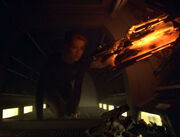
Seven finds an undetonated Krenim chroniton torpedo
On Deck 11, Seven opens a Jefferies tube hatch but just as she is about to climb in, she sees an object lodged in the tube's wall. She climbs in, moves close to it and scans it with a tricorder . It is an undetonated Krenim chroniton torpedo with the warhead still armed and ready to go off. She urgently hails Tuvok and informs him of her discovery. He orders her to hold position and not attempt disarming it. When Tuvok arrives, he decides that the safest option is to cordon off the tube with a level 10 force field in order to contain the imminent explosion of the destabilizing warhead. But Seven wants to complete this unique opportunity to scan one of the torpedoes and ascertain its exact temporal variance , which can be used to correctly modify the deflector shields. Tuvok objects and attempts to drag her toward the hatch. Struggling against him to finish, Seven finally succeeds in finding the variance – 1.47 microseconds – but the torpedo detonates before they reach the hatch. Tuvok shields her and the explosion catches him in the face.
Act Four [ ]
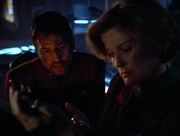
Janeway mulls over her birthday present
Voyager is in a terrible state. Janeway records in her log that the replicator system was severely damaged in the latest attack, forcing the crew to survive on emergency rations . Environmental controls are failing and seven decks are now uninhabitable. The weary crew, having relocated from their quarters and sleeping in bunks, are struggling on. The bridge is now totally wrecked as Janeway attempts to repair the science station. Chakotay, reminding her of the date (her birthday) offers her a gift: a silver pocket watch he replicated for her months earlier. But in their current condition, non-essentials are a luxury they cannot afford and she tells him to recycle it.
Tuvok, now completely blind from the chroniton torpedo blast in the Deck 11 Jefferies tube, shaves with a straight-edge razor in the remains of his quarters . Seven of Nine enters and says that she is "reporting for duty" to lead him on his morning rounds. She has devoted herself to helping Tuvok after sacrificing his sight to shield her from harm. She notes that he has cut himself shaving, having previously offered to help him with personal grooming. Tuvok rejects the notion. Before they leave his quarters, she informs him of an idea she has developed on how to modify the deflector shields to defend against the Krenim torpedoes, using the temporal variance she measured from the torpedo. He decides that they should forgo his rounds and proceed to deflector control.
As they make their way along the darkened, debris-strewn corridors, the two bemoan Human personal habits after Seven crosses paths with her new bunk mate. Chakotay's voice comes through the com system, warning of another incoming attack and ordering all hands to battle stations. Tuvok orders Seven to go to deflector control and bring the modified shields on-line, essentially testing them in battle, while he attempts to make his way to the bridge, feeling along the walls to get there.
Upon arriving at the bridge, Tuvok goes to his tactical station. Blind, he has the computer initiate a tactile interface , allowing him to operate the controls and read the displays by touch. Chakotay requests a weapons status as Tuvok reports that phasers are still working, but the torpedo launchers were offline. Janeway orders an on-screen view of the approaching Krenim warship. Ordering evasive maneuvers, Chakotay and she pester Seven to engage the newly-modified shields. Kim tells the Bridge crew that they're targeting the bridge as Seven succeeds in bringing them on-line. Chakotay orders full port thrusters to evade as the warship fires on them once more. The first torpedo misses due to Paris' piloting skills, but the second hits. This time the torpedo causes no damage; Seven's modifications work perfectly. Janeway orders Tuvok to hail the warship. She advises them to stand down, as Voyager is no longer defenseless against them. They do not answer. She orders Paris to maintain course through Krenim space.
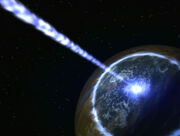
The Garenor are erased from history
Elsewhere, the temporal weapon ship approaches another planet, home to a race called the Garenor . Annorax orders the ship taken into orbit and the weapon to be fully powered and fired. It has the same effect as seen on the Zahl colony: every trace of civilization vanishes, as if it never existed, and the space-time shock wave created radiates outward away from the planet.
Back on Voyager , the Krenim warship is still in pursuit but has ceased firing, unsure how to respond to the recent development; this newfound advantage over the warship is Voyager 's first in months. Kim soon reports the approach of a temporal wave from 20 light-years away. Even before this timeline the ship could not outrun it, so it has absolutely no chance in its dilapidated state. The wave hits. But the new shields protect the ship from the wave's temporal changes for the same reasons they protected against the Krenim's temporal torpedoes.
However, the Krenim warship has no such protection. The shocked bridge crew watch as it is reduced from a mighty warship to a once again modest ship with limited armaments that would pose no threat to an undamaged Voyager . A baffled Kim reports that the ship is definitely Krenim but it is no longer the warship they were just facing. Janeway then asks where the Warship went as Paris tells her that long range sensors aren't picking it up either. Chakotay scans the region from the command console and reports that the region has suddenly changed: before the wave, the area was filled with Krenim colonies and warships, but now there are no colonies and only a few small ships. History appears to have been changed so that the Kremim Imperium never existed. Janeway orders Kim to route any data about the wave to astrometrics where she is headed, but Chakotay informs her that astrometrics was offline due to taking heavy damage from the Krenim attacks a few days ago as Janeway tells him to bringing it back online, commenting that their troubles might suddenly be over and finding out why this was the case.
Aboard the temporal weapon ship, Obrist notes the erasure of the Krenim Imperium with great consternation. He reports to Annorax that the incursion has gone terribly wrong. Annorax cannot believe it, insisting that their calculations were perfect. Obrist pores over the sensor data and finds the explanation: as a previously "inert" component, they had failed to account for Voyager 's new temporal shields in their calculations. Annorax orders a course be set to go to Voyager .
Act Five [ ]
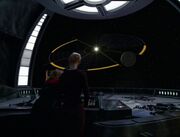
Janeway and Seven investigating the focal point of the spacetime shockwave
Astrometrics is as ruined as the rest of the ship but Seven manages to activate its sensors, finding the database intact. Janeway orders her to call up a previous scan of the area. It shows how the region was: under the boot of the Krenim Imperium, full of Krenim colonies. A new scan confirms what Chakotay found, that the Imperium does not currently exist; History has been changed by the wave. On Janeway's order, Seven tracks its source and finds that it originated from the Garenor homeworld. Janeway says they passed the Garenor just 3 weeks ago, but Seven responds with a strange discovery. She notes with confusion that the sensors show that the Garenor do not exist anymore, also erased from history by the wave. She theorizes that, because of their temporal weapons, the Krenim may also be responsible for the temporal wave. This makes no sense to Janeway, as the change has undermined their own species. She speculates that there is a "big piece of the puzzle still missing," and in the midst of ordering another scan, the ship is suddenly shaken.
Annorax's ship arrives. Aboard, Obrist confirms that Voyager is generating a temporal field. Annorax orders two of her crew collected as samples, along with a small piece of the hull. He also orders preparations for another temporal incursion, this time against Voyager . He cannot have this anomalous temporal component disrupting his calculations and intends to eliminate it.
On Voyager , Kim reports with surprise that the entire Krenim vessel is in a state of temporal flux and like the torpedoes, the ship actually exists outside of space-time. Chakotay rises and walks toward the viewscreen, studying the vessel. He stops at the conn console, beside Paris. Suddenly, both men vanish, transported away. Janeway immediately orders efforts to retrieve them. Kim tries but fails. A hail comes from the weapon ship. Janeway orders it answered on-screen. Annorax appears, calmly but sternly telling Janeway to identify herself and her ship, which she does. He reciprocates and observes that Voyager is not from the Delta Quadrant. Janeway confirms, telling him of their origin from Earth, which was 65,000 light years away, but when she asks about the change in history—emphasizing the erasure of the Krenim Imperium—he curtly responds that it is none of her business. When he tells her that she has diverted him from his mission, she realizes that he is responsible for the change in the timeline. Without denying this, he assures her it is nothing personal but that Voyager must be erased as well, informing her that this will "restore the lives of countless millions." With a curt apology, he closes the channel.
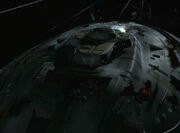
The Voyager losing its outer hull
The ship fires its temporal weapon on Voyager . So great is its power that the temporal shields are quickly degraded as Seven reports that the shields were weakening from the beam's intensity. Kim reports tensely that the beam is pushing Voyager out of the space-time continuum; they are being erased from history. However, Seven scans the weapon ship and reports that its mass prevents it from achieving speeds in excess of warp 6 . Voyager , whose normal top warp speed is in excess of warp 9.9, can escape. But Tuvok cautions that damage to the ship's structural integrity means that warp speed will cause extreme damage.
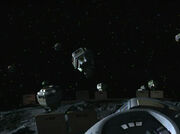
Voyager 's crew abandons ship
Despite Tuvok's concerns and having to leave Chakotay and Paris behind, Janeway feels that right now they have no choice. She orders all hands to clear the outer sections of the hull and for wide scale breaches. She also orders Paris' transverse bulkheads be brought online. Seven reports that the temporal shields are failing as Janeway engages the warp drive, getting away at warp 7. They escape the temporal beam, but Voyager sustains additional damage to its already severely damaged state as large, jagged pieces of the outer hull peel off and break away.
Janeway calls a meeting of surviving crewmembers in the remains of the mess hall. She sadly but sternly informs them of the ship's inability to sustain the crew any longer. She is now forced to make the decision Chakotay had suggested weeks before: to abandon ship. The senior staff, she announces, will stay behind with her and attempt to rescue Chakotay and Paris. She gives the departing crew some inspiring words before dismissing them.
Escape pod hatches open and the pods, carrying most of the crew, emerge from the remains of the hull and fall away from the ship.
Log entry [ ]
- " Captain's log, Stardate 51268.4. This morning's attack destroyed the power grid on deck 11 . No casualties this time but the replicator system was badly damaged. We've gone to emergency rations. As a result, the situation has gotten a little worse. Environmental controls continue to fail, seven decks have been rendered uninhabitable and we've had to relocate the crew. Quarters are close, nerves are frayed, and I'm not sure what's more difficult to maintain – Voyager 's systems or the crew's morale. What's important… is that we're together, working towards a single goal – survival. "
Memorable quotes [ ]
" Who would've thought that this eclectic group of voyagers could actually become a family? Starfleet, Maquis, Klingon, Talaxian, hologram, Borg… even Mr. Paris. "
" This is turning into the week of hell. "
" You have the bridge… what's left of it. "
" I don't respond well to threats. "
" With all due respect… unless you've got something a little bigger in your torpedo tubes, I'm not turning around. "
" Sir, you were correct. The Zahl homeworld was the focal point. Its erasure has produced a complete temporal restoration. " " 'Complete'? " " Yes, sir. " " If I told you to count the stars in the cosmos, would the task ever be complete? " " Sir? " " Our attempts may be sufficient; they may even be relatively successful, but they will never be complete. Choose your words with more precision. " " My apologies. "
" The Titanic? As I recall, it sank. " " Let's just say I've made a few improvements. "
" Happy birthday. " " Happy what ? "
" Shaving is hardly a life-threatening activity. "
" We're just about done rebuilding the internal security sensors and we are ready to program the audio signal. Do you want it to say 'Intruder alert' or should we try something a little more dramatic like 'Warning, intruder alert', or 'Intruders among us. Danger! Danger! Intruders among us.' " " Intruder alert' will suffice. "
" Krenim vessels, this is the captain of Voyager. You may have noticed we have a defense against your torpedoes now. I suggest you stand down. " " No response. " " Their mistake. Bring the ship about. We're going through their space whether they like it or not. "
" He's trying to erase us from history. "
" Each of you has done your best, but determination alone isn't going to hold this ship together. It's time we faced reality. We've lost nine decks, more than half this ship has been destroyed. Life support is nearly gone; Voyager can no longer sustain its crew. I promised myself that I would never give this order, that I would never break up this family; but asking you to stay… would be asking you to die. "
Background information [ ]
Production history [ ].
- Production number: 011-40840-176
- Final draft script: 5 August 1997 [1]
- Day 1 – 7 August 1997 , Thursday – Paramount Stage 8 : Bridge , damaged bridge, briefing room
- Day 2 – 8 August 1997 , Friday – Paramount Stage 8: Tuvok 's bathroom , damaged mess hall
- Day 3 – 11 August 1997 , Monday – Paramount Stage 8: Damaged bridge; Paramount Stage 9 : Corridor
- Day 4 – 12 August 1997 , Tuesday – Paramount Stage 9: Corridors, turbolift ; Paramount Stage 8: Damaged ready room
- Day 5 – 13 August 1997 , Wednesday – Paramount Stage 9: Horizontal and vertical Jefferies tubes , int. Krenim patrol ship / Krenim warship ; Paramount Stage 8: Damaged bridge
- Day 6 – 14 August 1997 , Thursday – Paramount Stage 9: Damaged corridors, damaged crew quarters ; Paramount Stage 8: Damaged bridge
- Day 7 – 15 August 1997 , Friday – Paramount Stage 9: Int. Krenim weapon ship ( temporal chamber / Annorax 's ready room)
- Day 8 – 18 August 1997 , Monday – Paramount Stage 16 : Astrometrics , damaged Astrometrics
- 2nd Unit – 22 September 1997 , Monday – Paramount Stage 8: Bridge, ready room, Krenim weapon ship (temporal chamber)
- Airdate: 5 November 1997
Story and script [ ]
- This episode's plot was primarily influenced by " Before and After ", a third season installment of Star Trek: Voyager that gives a preview of this episode by featuring both the Krenim and hints of a timeline in which Voyager undergoes the " Year of Hell ", becoming badly damaged in the process. Episode co-writer Brannon Braga explained, " Although I don't like to do episodes that rely on other episodes for exposition, I loved the phrase 'Year of Hell' that Ken Biller came up with for that episode. I loved the look of the show. I loved the look of a destroyed Voyager . I wanted to do a whole two-parter like that. " This episode's other co-writer, Joe Menosky , remembered, " This started with the phrase 'Year of Hell' which came out of 'Before and After'. Brannon loved the image […] The optical of the hull of the ship messed up in 'Before and After' because we were being attacked by the Krenim […] stayed, especially in Brannon's mind. He kept saying, 'I just want to wreck the ship.' " ( Cinefantastique , Vol. 30, No. 9/10, p. 108) Menosky also related, " What Brannon often does is come up with an image before there's even a story idea […] The imagistic inspiration for 'Year of Hell', without which it wouldn't have been created as an episode, was the ship all wrecked, a great look. " ( Cinefantastique , Vol. 30, No. 9/10, p. 75)
- The Voyager writers initially came up with the idea that "Year of Hell" would actually be an entire year (season) of the show in which the ship was constantly under attack for the whole season, and the story of Annorax and the timeship would would recur intermittently throughout the season. But when Brannon Braga met with Rick Berman, Berman rejected the idea of serializing Voyager and "Year of Hell" was limited to a two-parter. The decision was disappointing to the writers who had become excited about the possibilities that serial storytelling would have opened up. [2]
- The reuse of the phrase "Year of Hell" suggested other elements, such as having the two-parter span a year. Brannon Braga remembered, " The notion of having a story that took place over the course of a year […] I thought was a very fresh structural approach. " The event also implied a reuse of the time-meddling Krenim. Joe Menosky commented, " We tend to do one big time thing a year, we're thinking should it be time travel? Despite the fact that it wasn't time travel the Krenim used some kind of temporal thing in their torpedoes. " ( Cinefantastique , Vol. 30, No. 9/10, p. 108)
- Indeed, considering the Krenim's destructive temporal capabilities led the writers to explore time travel in an unusual way. Joe Menosky recollected, " Brannon said, 'Time is a weapon. What does that mean?' I said, 'What if there was this big Death Star-like weapon, and you target a planet, and it blows it out of the time continuum? What you have done is erased a thread from the time continuum, everything resets, and suddenly the present is different.' " ( Cinefantastique , Vol. 30, No. 9/10, p. 108) Braga was ultimately of the opinion that Annorax's meddling with time was analogous to an example of alternate history . " If you can imagine, to use an analogy, that the Nazis , after losing the Second World War , invented something like [Annorax's time ship] to erase the Americans from history so that they never existed. It would change the outcome of things, " Braga speculated. " But what the Nazis don't realize is that the Americans provided a crucial antibody that helped the Germans fight off a deadly virus, and so they realize they've got to do something else to history. But that doesn't work either. When you pull one thread, another comes undone. " ( Star Trek Monthly issue 34 , p. 15) By having the time continuum messed around in such a way but without departing from the present, the writers managed to come up with a method of doing a time travel story without actually doing time travel. " That was enough for us to start running with this as an episode, " Menosky recalled. ( Cinefantastique , Vol. 30, No. 9/10, p. 108)
- Tuvok was originally to have been more badly wounded in this episode rather than losing only his eyesight. " We were actually going to have him blind and missing a leg, " Brannon Braga remembered, " and we were going to do a Forrest Gump -type of digital effect. He was going to have many physical problems, but for production reasons, we ended up with just blindness. " ( Cinefantastique , Vol. 30, No. 9/10, p. 100)
- This episode was originally to have been Star Trek: Voyager 's third season finale. ( Star Trek Monthly issue 34 , p. 12; Delta Quadrant , p. 207)
- The writing of this episode proved to be generally easier than what would follow: the development of most of the two-parter's conclusion. ( Cinefantastique , Vol. 30, No. 9/10, p. 108)
Cast and characters [ ]
- Brannon Braga believed that the concept embodied in the character of Annorax – a villain who uses time as a weapon – was (in common with the idea of spanning the episode's duology over the course of a year) "a very fresh […] approach." ( Cinefantastique , Vol. 30, No. 9/10, p. 108)
- Before portraying Annorax in this episode's two-parter, Kurtwood Smith previously played the Efrosian Federation President in Star Trek VI: The Undiscovered Country and Thrax in the Star Trek: Deep Space Nine episode " Things Past ". He believed his DS9 role was somewhat responsible for his casting here. " I guess the producers liked what I did on Deep Space Nine , " he said, " and asked me to come back, which was fine with me. " Ultimately, he enjoyed playing Annorax more than he had liked portraying his DS9 character. The actor stated, " Because Thrax was actually in the imagination of another character […] he wasn't quite as interesting to play as Annorax. He didn't have nearly as much to do. " ( The Official Star Trek: Voyager Magazine issue 18 )
- Kurtwood Smith was not a regular viewer of the Star Trek spin-off series but found himself watching Voyager to prepare for his role in this episode and the next. Shortly after completing work on the "Year of Hell" two-parter, Smith admitted, " Lately, I watched more of Voyager [than usual] because I was preparing to do my episodes and wanted to get a feel for what they do, how they do it, [and] what's expected of the guest actors. " ( The Official Star Trek: Voyager Magazine issue 18 )
- Both Joe Menosky and executive producer Jeri Taylor were extremely pleased with the performance that – for this episode and the next – Kurtwood Smith delivered, Menosky later describing Smith as "incredible." ( Cinefantastique , Vol. 30, No. 9/10, p. 108) Taylor appreciatively stated, " We got a wonderful performance from Kurtwood Smith. " ( Star Trek Monthly issue 36 , p. 13)
- Brannon Braga observed that the cast of this episode seemed to be enjoying the process of working on the episode. He reckoned, " The actors I think had a lot of fun with it. " ( Cinefantastique , Vol. 30, No. 9/10, p. 109)
- Tuvok actor Tim Russ found that performing a blind Tuvok was somewhat challenging, despite also being refreshingly different from how he usually played the character. The reason he found it difficult was that his instincts, which he could not – on this occasion – allow, were normally to look another performer in the eye when they were speaking to him and to look straight at a member of the production crew if they had called to him from off-camera. " I had to reshoot it or do another take because I looked where I shouldn't have been looking, at the other actors, " remembered Russ. He expected that his task of playing this role could have been aided, artificially. " I would almost rather have played it with something covering my eyes, rather than to pretend, because it would have been even more real for me, " the actor admitted. " I think it would have changed the performance, if I could not see where I was going. I would have loved to have had that handicap somehow. " ( Cinefantastique , Vol. 30, No. 9/10, p. 100) Russ had very nearly played another blind character on Star Trek a decade earlier, having auditioned for the role of Geordi La Forge on Star Trek: The Next Generation .
- Tim Russ also believed that this episode's two-parter contains an insightful exploration of the relationship between Tuvok and Seven of Nine. " You see how this bond could have occurred, " he noted. ( Cinefantastique , Vol. 30, No. 9/10, p. 101)
- Actor Robert Picardo was impressed by the visuals in this episode's two-parter. He enthused, " The 'Year in Hell' [ sic ] two-parter was really like a movie. The opticals were just as exciting as those you see on the big screen. " ( The Official Star Trek: Voyager Magazine issue 18 )
Production and effects [ ]
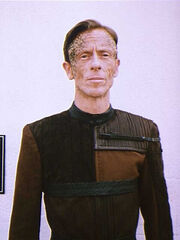
Background actor Bob Shuttleworth behind the scenes as a Krenim officer
- Kurtwood Smith found the production schedule of this episode to be somewhat overwhelming. " Because of the way the schedule worked, " he recalled, " all of my scenes in the first part [of the two-parter] were compressed into one day. That was a little intense. We also shot the biggest, heaviest scenes at the day's end, so it was hard to have much energy by the time we got to them. Otherwise, it was great. The crew is wonderful. " ( The Official Star Trek: Voyager Magazine issue 18 )
- While the second scene in this episode was being shot, the principal cast members required for the filming became hysterically amused. " Everyone was there [on the set of Voyager 's astrometrics lab] late and we were all a bit punchy, " related Seven of Nine actress Jeri Ryan . " All I can remember is, oh, God , Robert Beltran , Tim Russ and Ethan Phillips hopping around the set doing their impressions of Michael Flatley , the Lord of the Dance guy. They were totally out of control. I was laughing so hard that I had tears running down my face. " ( TV Zone , Special #29, p. 20)
- One of the shots from the scene where Seven of Nine and Tuvok try to crawl away from the unstable chroniton torpedo on deck 11 has been sped up, to make it seem like Seven and Tuvok are crawling faster.
- Joe Menosky was delighted with Allan Kroeker 's work on this episode and said of both parts of the "Year of the Hell" two-parter (despite each of the two episodes having been helmed by a different director) that they "were amazingly well directed." ( Cinefantastique , Vol. 30, No. 9/10, p. 108) Similarly, Brannon Braga enthused about this episode, " The production team really, really pulled it off. " ( Cinefantastique , Vol. 30, No. 9/10, pp. 108 & 109)
- Joe Menosky was also thrilled by the chronological subtitles that are used in this episode and the next, which he once referred to as "great." ( Cinefantastique , Vol. 30, No. 9/10, p. 108)
- The CGI effects of this episode's two-parter were provided by CGI supplier Foundation Imaging during an extremely busy period for the company; Foundation was also working on effects for DS9 : " Sacrifice of Angels " and several other projects. CGI Effects Director Ron Thornton remarked, " We were absolutely hammering it out. " ( The Official Star Trek: Voyager Magazine issue 16 ) Visual effects supervisor Ronald B. Moore and coordinator Elizabeth Castro were also instrumental in the creation of effects for this episode (as opposed to supervisor Mitch Suskin and coordinator Arthur Codron , who worked on the second half of the "Year of Hell" two-parter). ( Cinefantastique , Vol. 30, No. 9/10, p. 108) The look of this episode was added to in the compositing bay, by animation effects artist Greg Rainoff (who did likewise for the concluding half of the "Year of Hell" two-parter). ( Cinefantastique , Vol. 30, No. 9/10, pp. 108-109)
- Creating the look of Voyager as it becomes more and more badly damaged, in this episode and the next, was a process that involved many steps. Ron Moore explained, " We got a lot of drawings from [senior illustrator] Rick Sternbach of different ways we could damage the Voyager . Then we made our plans all the way through the script. " ( Cinefantastique , Vol. 30, No. 9/10, p. 108) Ron Thornton commented, " Fred Kuramura worked for several weeks building the different versions of Voyager that go through [various stages of destruction]. There were about four different stages of Voyager , in varying levels of disrepair. That took quite a lot of time, but it's one of those things that you never really see. " ( The Official Star Trek: Voyager Magazine issue 16 )
- The elements of this episode that Ron Moore and Elizabeth Castro established included the look of the Krenim weapon ship, the temporal change wave and Voyager 's astrometrics lab. ( Cinefantastique , Vol. 30, No. 9/10, p. 108)
- On the third day of production, Monday 11 August 1997 , an additional scene for the episode " Revulsion " was filmed. According to the call sheet, Paramount Stage 8 housed the set for this scene, Chakotay 's office , and Robert Beltran and Garrett Wang were filmed.
Costumes and props [ ]
- The wall decoration in Annorax 's ready room was previously seen as wall decoration in Proconsul Neral 's office in the Star Trek: The Next Generation fifth season episodes " Unification I " and " Unification II ", in the barbershop aboard the USS Enterprise -D in the sixth season episode " Schisms ", in the reception area at Arkaria Base in the episode " Starship Mine ", in the observation lounge in the seventh season episode " Parallels ", in Minister Kray 's office in the first season episode " Ex Post Facto ", and in Neelix's quarters in the episode " Jetrel ".
- Also present in Annorax's ready room are two bird statues which were turned around. These statues were previously seen in Marla Aster 's home in the TNG third season episode " The Bonding ", in the reception area at Arkaria Base in the sixth season episode " Starship Mine ", and in the conference room of the Maquis in the seventh season episode " Preemptive Strike ". They can also be seen in several scenes in " Year of Hell, Part II ".
- Several costumes from this episode were sold off on the It's A Wrap! sale and auction on eBay, including John Austin 's costume which was later re-used by Eric Hunter in the episode " Tsunkatse " and the costumes of John Thaddeus , Adrian Tafoya , Bob Shuttleworth , Peter Slutsker , Kurtwood Smith , and John Loprieno as well as Keith Rayve 's distressed Starfleet uniform. [3] [4] [5] [6] [7] [8] [9] [10]
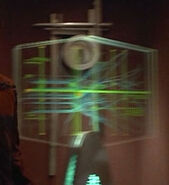
Continuity [ ]
- Day 65 is stated to occur on May 20th (Janeway's birthday). Using this, it is possible to date all the events of this episode; Day 1 occurs on March 17 while Day 73 (the final day depicted in this episode) occurs on May 28th , 2374 . This makes this episode and the next the only instalments of Star Trek in which every scene can be precisely dated on the Gregorian calendar.
- The stuck turbolift in the turboshaft footage in this episode was re-used from the Star Trek: The Next Generation fifth season episode " Disaster ".
- In the scene where Kim and Torres play a trivia game (category: Interstellar History), there is a question concerning Zefram Cochrane who launched his first warp -driven starship and resulted to First Contact with the Vulcans ; however Torres takes some time to recall the name of the ship ( Phoenix ). The dialogue is a clear acknowledgment to the events of Star Trek: First Contact .
- In a later scene, Seven of Nine tells Harry Kim and B'Elanna Torres that the Borg were present during that event. She claims it is "complicated" when they ask her to elaborate, as the Borg traveled through time to assimilate Humans and remove their resistance, similar to what the Krenim did to the Zahl . This reference to First Contact is also somewhat of an in-joke , as Brannon Braga co-wrote both this episode and that film. Having initially intended to insert an in-joke reference to First Contact in " Scorpion, Part II " (yet another Star Trek production that Brannon Braga co-wrote), Braga thereafter wrote the similar reference into this episode, doing so in a way that he later described as "a lighter fashion." Braga also said of the in-joke in this episode, " It's not a plot nod […] It's just a little nod to the fans, who'll get a kick out of it. " ( Star Trek Monthly issue 34 , p. 15)
- This episode establishes that Kathryn Janeway's birthday is May 20th.
- This episode also establishes that Voyager is 65,000 light years away from home.
- Astrometrics is unveiled for the first time in this episode, along with Captain Janeway's new shorter hairstyle worn loose, which she maintains for the remaining duration of the show.
- The Doctor states that he was first activated on stardate 48315. This is consistent with the events of the pilot episode " Caretaker ", in which Captain Janeway makes a log entry for stardate 48315, on the same day that The Doctor is activated.
The episode "Before and After" [ ]
- Some of the events of this episode are consistent with the season 3 episode " Before and After ", in which Kes experiences a future Voyager , including its time in the "Year of Hell". Although the future shown in "Before and After" are a part of an alternate future that does not come to pass, some major events do nonetheless still occur. These include the Year of Hell itself, with the encounter with the Krenim, and the destruction of Sickbay. Notable events that do not occur as depicted in "Before and After" are the absence of Kes, presence of Seven of Nine, The Doctor becoming inoperable for a number of months, the death of Captain Janeway and B'Elanna Torres , and the kidnapping of Paris and Chakotay.
- Although "Before and After"'s depiction of the "Year of Hell" is seen from the viewpoint of Kes – as she travels through time – her timeline in that episode is not related to any timeline seen in this episode, as Kes is obviously no longer aboard the ship at this point (having left in the earlier fourth season installment " The Gift "). Despite the differences between the timeline featured in "Before and After" and the one shown in this episode, Brannon Braga believed that fans would nonetheless understand that this episode shows an event first depicted in "Before and After". " The fans will recognize that that's what this is, " Braga predicted. When asked whether Kes' absence from this episode's two-parter was problematic, Braga replied, " Not at all, because the episode also deals with [Annorax's extremely powerful influence on time]. " ( Star Trek Monthly issue 34 , p. 15)
- At the end of "Before and After", Janeway asks Kes to reveal any information on the Krenim that Kes learned during her time jumps and Kes agrees to file a report. Even though the dialogue from "Year of Hell" doesn't directly reflect on any of the knowledge Kes shared, Tuvok picks up on the Krenim torpedo being in temporal flux as soon as the first torpedo hits, thus proving that Kes' report was indeed put to good use even though it wasn't officially acknowledged. However, it is unclear why the report that Kes was supposed to file wouldn't have included the precise chroniton frequency which would have enabled Voyager to implement their own time-flux shielding. This information was needed to fix Kes' condition in "Before and After". In this timeline, however, the frequency of the torpedo is still 1.47 microseconds, as it was in the earlier episode, with Seven of Nine crawling through the Jefferies tube rather than Kes.
- In Kes's alternate timeline, she does not become an advanced version of her species, this could be the result of the Year Of Hell somehow stunting her mental growth.
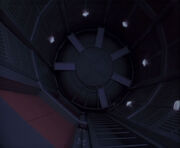
The stuck turbolift
Reception [ ]
- This episode achieved a Nielsen rating of 4.7 million homes, and a 7% share. [11] (X)
- Midway through the fourth season of Star Trek: Voyager , Brannon Braga was particularly excited about this episode's two-parter and promised, " It will be fun. " ( Star Trek Monthly issue 34 , p. 12) He later stated, " I was very pleased with 'Year of Hell'. It was very tight […] It was one of those rare episodes, and even rarer two-parters, where all of the elements came together. " ( Cinefantastique , Vol. 30, No. 9/10, p. 109)
- This episode's two-parter proved unforgettable for Star Trek author Kirsten Beyer . Having started pitching stories to the producers by the time this installment was broadcast, she had heard about the idea of this episode from one of the producers. " One of them had been telling me about this concept they were working on… this 'Year of Hell' that would strip the ship down to its bare bones, " Beyer reflected. " I was all for it. I was expecting it to last an entire season, which was one of the early discussions. " Beyer was pleased with the first part of the duology, which she defined as "fabulous." [12]
- Cinefantastique rated this episode 3 and a half out of 4 stars. ( Cinefantastique , Vol. 30, No. 9/10, p. 88)
- Star Trek Magazine scored this episode 5 out of 5 stars. ( Star Trek Monthly issue 39 , p. 62)
- The unauthorized reference book Delta Quadrant (p. 209) gives the installment a rating of 9 out of 10.
- The book Star Trek 101 (p. 175), by Terry J. Erdmann and Paula M. Block , lists this episode and the concluding part of its two-parter as being, together, one of the "Ten Essential Episodes" from Star Trek: Voyager .
Video and DVD releases [ ]
- UK VHS release (two-episode tapes, CIC Video ): Volume 4.4, catalog number VHR 4625, 4 May 1998
- In feature-length form, as part of the UK VHS collection Star Trek: Voyager - Movies : Volume 2 (with "Scorpion"), catalog number VHR 5072, 18 September 2000
- As part of the VOY Season 4 DVD collection
- As part of the Star Trek: Fan Collective - Time Travel collection
Links and references [ ]
Starring [ ].
- Kate Mulgrew as Captain Kathryn Janeway
Also starring [ ]
- Robert Beltran as Chakotay
- Roxann Dawson as B'Elanna Torres
- Robert Duncan McNeill as Tom Paris
- Ethan Phillips as Neelix
- Robert Picardo as The Doctor
- Tim Russ as Tuvok
- Jeri Ryan as Seven of Nine
- Garrett Wang as Harry Kim
Guest star [ ]
- John Loprieno as Obrist
Special guest star [ ]
- Kurtwood Smith as Annorax
Co-stars [ ]
- Peter Slutsker as Krenim Commandant
- Rick Fitts as Zahl
- Deborah Levin as Ensign Lang
- Sue Henley as Ensign Brooks
- Majel Barrett as Computer Voice
Uncredited co-stars [ ]
- John Austin as Krenim officer
- Cameron as command officer
- Steve Carnahan as operations officer
- Cullen Chambers as operation officer
- John Copage as sciences officer
- Damaris Cordelia as Foster
- Carrie Dolin as operations officer
- Patrick Emery as command officer
- Tarik Ergin as Ayala
- Kevin Finister as operations officer
- Holiday Freeman as operations officer
- Caroline Gibson as operations officer
- Kerry Hoyt as Fitzpatrick
- Alicia Lewis as sciences officer
- Susan Lewis as operations officer
- Rad Milo as operations officer
- Heather Rattray as operations officer
- Keith Rayve as command officer
- Jennifer Riley as sciences officer
- Joey Sakata as sciences officer
- Richard Sarstedt as William McKenzie
- Lydia Shiferaw as command officer
- Bob Shuttleworth as Krenim officer
- Pablo Soriano as operations ensign
- Noriko Suzuki as operations officer
- Adrian Tafoya as Krenim officer
- John Tampoya as Kashimuro Nozawa
- John Thaddeus as Krenim officer
- Bridge officer (voice)
- Sciences officer
Stand-ins [ ]
- Cameron – stand-in for Jeri Ryan
- Sylvester Foster – stand-in for Rick Fitts
- Mike Fujimoto – stand-in for Garrett Wang
- Sue Henley – stand-in for Kate Mulgrew
- Susan Lewis – stand-in for Roxann Dawson and Kate Mulgrew
- Lemuel Perry – stand-in for Tim Russ
- J.R. Quinonez – stand-in for Robert Picardo and Kurtwood Smith
- Keith Rayve – stand-in for Robert Duncan McNeill , John Loprieno , and Peter Slutsker
- Jennifer Riley – stand-in for Deborah Levin
- Richard Sarstedt – stand-in for Robert Beltran
- Simon Stotler – stand-in for Ethan Phillips
- John Tampoya – stand-in for Garrett Wang
- Hand double for Robert Beltran
- Hand double for John Loprieno
References [ ]
19th century ; 20th century ; 2174 ; 2342 ; 2371 ; 47 ; ability ; adage ; aft ; " all hands "; Alpha Quadrant ; annexation ; antibody ; astrometric database ; Astrometrics ; athlete ; athletics ; bark ; battle stations ; birthday ; birthday gift ; bite ; blindness ; blood ; boot ; Borg ; bow ; " brace for impact "; British Navy ; cargo container ; cat burglar ; category ; Cat's Eye Nebula ; causality paradox ; Championship Finals ; chroniton ; chroniton torpedo ; chronometer ; class M ; Cochrane, Zefram ; Cray ; Cray's crew ; Cray's ship ; crew quarters ; cup ; damage ; damage report ; deck ; Deflector Control ; Delta Quadrant ; Eagle Nebula ; Earth ; emergency hand actuator ; emergency power ; emergency ration ; entertainment ; environmental control ; EPS manifold ; execution ; generation ; escape pod ; evasive maneuvers ; Federation ; First Contact ; fixation ; force field ; Gable, Clark ; general court martial ; Garenor ; Garenor homeworld ; Garenor homeworld primary ; Garenor homeworld system ; gift ; globe ; Grant, Cary ; Grid 005 ; harbor ; hatch ; honeycomb ; hull breach ; inanimate object ; inaprovaline ; initials ; internal bleeding ; Intrepid -class ; Intrepid class decks ; intruder alert ; Jefferies tube ; Kelly, Grace ; Klingon ; Krenim ; Krenim Imperium ; Krenim patrol ship ; Krenim space ; Krenim weapon ship ; Krenim warship ; Kyana Prime ; laceration ; lung ; man-made object ; Maquis ; mariner ; mess hall ; meter ; Milky Way Galaxy ; military forces ; mirror ; Mister Vulcan ; Montana ; offline ; organism ; parrises squares ; parsec ; phenomenon ; Phoenix ; plank ; pocket watch ; port ; power grid ; pre-warp civilization / pre-warp state ; purée ; RADAR ; razor ; R'Cho, M'Kota ; red alert ; referee ; replicator system ; resistance quotient ; Rilnar ; Riviera ; sail ; Saturn ; security team ; sensor ; shaving ; sickbay ; sink ; spacetime continuum ; square meter ; star ; Starfleet Academy ; steamship ; structural integrity ; structural integrity field ; subspace ; subspace beacon ; surrender ; tactile interface ; Talaxian ; temporal disruption ; temporal energy ; temporal incursion ; temporal shield ; temporal science ; tissue ; Titanic , RMS ; To Catch a Thief ; towel ; trace element ; transverse bulkhead ; triage ; tricorder ; turbolift ; turbolift system ; Veil Nebula ; vertebra ; vessel ; Vulcan ; " Year of Hell "; yellow alert ; Zahl ; Zahl colony ; Zahl starship ; Zahl homeworld ; Zahl territory
Meta references [ ]
External links [ ].
- " Year of Hell " at Memory Beta , the wiki for licensed Star Trek works
- " Year of Hell " at Wikipedia
- " Year of Hell " at the Internet Movie Database
- " Year of Hell, Parts 1 & 2 " at MissionLogPodcast.com , a Roddenberry Star Trek podcast
- 1 Daniels (Crewman)
- Cast & crew
- User reviews
Year of Hell, Part II
- Episode aired Nov 12, 1997

A year after Voyager encounters the Krenim time ship, a badly damaged Voyager with a skeleton crew leads an armada of interplanetary ships against them. A year after Voyager encounters the Krenim time ship, a badly damaged Voyager with a skeleton crew leads an armada of interplanetary ships against them. A year after Voyager encounters the Krenim time ship, a badly damaged Voyager with a skeleton crew leads an armada of interplanetary ships against them.
- Michael Vejar
- Gene Roddenberry
- Rick Berman
- Michael Piller
- Kate Mulgrew
- Robert Beltran
- Roxann Dawson
- 11 User reviews
- 5 Critic reviews

- Capt. Kathryn Janeway

- Cmdr. Chakotay

- Lt. B'Elanna Torres

- Lt. Tom Paris

- Seven of Nine

- Ensign Harry Kim

- Krenim Commandant
- (as Peter Slutsker)
- Annorax's Wife

- Voyager Computer
- Krenim Officer
- (uncredited)

- All cast & crew
- Production, box office & more at IMDbPro
Did you know
- Trivia Voyager is depicted as being severely damaged in this show. To achieve that effect without lasting damage to any of the permanent sets, acrylic sheets similar to those used when the sets are in storage was draped over most of the "clean" bulkheads, and were then sprayed with charcoal dust to simulate the effects of multiple explosions. Unfortunately this resulted in many surfaces having a "wrinkled" appearance.
- Goofs The Doctor tells Captain Janeway that there are seven people aboard Voyager other than her. However, there are only six: the Doctor himself, Tuvok, B'Elanna Torres, Seven of Nine, Neelix and Harry Kim.
B'Elanna Torres : [crew raises coffee mugs] To distant friends.
Captain Kathryn Janeway : Hear, hear.
Harry Kim : Cheers.
Seven of Nine : Yes.
[cut to Kim taking a sip]
Neelix : [anxious] Well?
Tuvok : [pauses] Interesting.
Harry Kim : Not bad. Not bad at all!
B'Elanna Torres : What is it, exactly?
Neelix : I call it "the Elixir of Endurance." It's loaded with amino acids, carbohydrates, all the nutrients necessary for the crew to withstand these stressful conditions.
B'Elanna Torres : Ration cubes...
Neelix : Well, yes, yes. But this time, pureed and mixed with water and enhanced with Talaxian spices.
Seven of Nine : It is offensive. Fortunately taste is irrelevant.
- Connections Featured in Troldspejlet: Episode #35.4 (2006)
- Soundtracks Star Trek: Voyager - Main Title (uncredited) Written by Jerry Goldsmith Performed by Jay Chattaway
User reviews 11
- tomsly-40015
- Dec 26, 2023
- November 12, 1997 (United States)
- United States
- Official site
- Paramount Studios - 5555 Melrose Avenue, Hollywood, Los Angeles, California, USA (Studio)
- Paramount Network Television
- See more company credits at IMDbPro
Technical specs
- Runtime 46 minutes
- Dolby Digital
Related news
Contribute to this page.
- IMDb Answers: Help fill gaps in our data
- Learn more about contributing
More to explore
Recently viewed.
- Show Spoilers
- Night Vision
- Sticky Header
- Highlight Links

Follow TV Tropes
http://tvtropes.org/pmwiki/pmwiki.php/Recap/StarTrekVoyagerS4E8YearOfHell
Recap / Star Trek: Voyager S4 E8: "Year of Hell"
Edit locked.

This is one year I'd like to forget.
This two-part episode provides examples of
- 2-D Space : Averted with the creation of the Astrometrics lab , so Voyager 's course no longer has to be represented on flat screens. Annorax's vessel plays the trope straight.
- A Million Is a Statistic : Annorax and his crew are willing to erase billions of people from existence, simply to get a few percentage points closer to their ideal timeline.
- Abandon Ship : Averted at first; Chakotay suggests they abandon Voyager and use the shuttles to sneak through Krenim space. Janeway refuses to consider the idea until the cliffhanger end of Part One. " I’m not breaking up the family , Chakotay. We’re stronger as a team — one crew, one ship."
- The temporal shields make Voyager immune to the changes caused by the Timeship when the crew didn't even know that was a threat they needed to be protected from.
- Unfortunately, the temporal shield also prevents the damage to Voyager and her crew from being "healed" from the reset.
- Affectionate Gesture to the Head : When saying goodbye to a blind Tuvok, Janeway cups his face in both hands.
- Brought up by Janeway when the Doctor tries to relieve her of duty due to her potential PTSD, as she forces him to acknowledge that the ship doesn’t have the resources to keep her confined even if they would go through with that order.
- Janeway also asks this when Chakotay first suggests the idea of abandoning the ship - sure, a bunch of escape pods and shuttles could probably sneak through Krenim space much easier than the starship itself, but those pods and shuttles would have a distinct disadvantage with weapons and shields, and, even if they did make it through to the other side, what would they do without Voyager 's resources going forward in their journey home? Even Chakotay acknowledges that he didn't like the idea, but he had a duty to suggest it all the same.
- Anyone Can Die : Surprisingly averted despite the inbuilt Reset Button , and the alternate timeline of "Before And After" in which both Janeway and B'Elanna were killed during the Year of Hell. At most, two Nihydron vessels are erased during the climactic battle, but it's unclear whether the two crewmembers (B'Elanna and Harry) assigned to work with the Nihydron are actually on-board those ships.
- Apologetic Attacker : Annorax has the grace to apologize before trying to wipe Voyager from existence.
- Artistic License – Ships : Contrary to what Paris seems to think, compartmentalizing a ship via transverse bulkheads did not originate with the Titanic , having been invented in China in the 5th century AD and having become near-universal in Western ships as well a century before Titanic . It's also ridiculous that Starfleet vessels wouldn't already have such compartmentalization.
- Attack Pattern Alpha : In this case, Janeway orders Attack Pattern Omega.
- Beard of Sorrow : Chakotay gets pretty scruffy on the damaged Voyager .
- Beauty Equals Goodness : Inverted with the Krenim and the Zahl—the latter look less like humans but are friendlier to Voyager .
- Beauty Is Never Tarnished : Averted when Janeway gets a severe burn scar on one side of her face, though strangely her famous red hair is unsinged. Meanwhile Seven's face is pristine as always.
- A Birthday, Not a Break : Janeway's birthday means little on a half-destroyed ship.
- Bomb Disposal : Seven finds an unexploded chronoton torpedo lodged in the hull. She can't defuse it as it's about to explode, but she can scan it for the exact temporal variance which will enable them to create effective shields.
- Book Ends : The two-parter started with Voyager coming across an aggressive but underpowered Krenim ship trying to bully Voyager while lacking any sort of weaponry to back it up . After Annorax restores most of the Krenim Imperium, the timeline shift has Voyager being pounded on by a much more powerful ship, and the same commander is now a full-on Jerkass who casually threatens to have the crew executed, with Janeway commenting that they have been dealing with these attacks for weeks now. After the timeship is destroyed the timeline resets to Day One where Voyager comes across the original, smaller Krenim ship, whose commander is now much more reasonable and politely requests that they divert around the area, which Janeway agrees to do.
- The Bore : The Doctor insists on giving a speech at the opening of the Astrometrics Lab, despite the ill-concealed impatience of his fellow crew, who take the first excuse available to leave the room en masse.
- Brutal Honesty : Janeway says they need to leave the nebula before their repairs are complete. Only Seven voices what everyone's thinking , and is told off for it later by Tuvok. Seven: As a Borg, I submitted to a single authority: the Collective. Over the past several months I've been encouraged to think and act as an individual. It is difficult to know when to restrain myself. Tuvok: Remember this guideline. The Captain is always right. Seven: Even when you know her logic is flawed? Tuvok: ( Beat ) Perhaps...
- Bullying a Dragon : Subverted; a fifteen-man, lightly-armed Krenim vessel makes a pathetic attempt to scare off Voyager ... until a time shift turns it into a powerful warship with torpedoes that can pass right through their shields.
- A time distortion passes over the bridge; when it clears, Janeway is still standing in center frame, except the ship is now on Red Alert . This shot is very similar to one from TNG’s " Yesterday’s Enterprise ".
- Seven hints at the events of Star Trek: First Contact , in which the Borg also tried to remove a troublesome enemy by changing the timeline.
- A tea cup falling from the table and shattering is from Star Trek VI: The Undiscovered Country .
- Captain Nemo Copy : A man of culture who isolates himself and his crew from the outside world, driven by a quest that wrecks destruction on them all.
- The Chains of Commanding : The Doctor diagnoses Janeway as suffering from traumatic stress syndrome. It's not a stretch to guess Annorax is under similar strain, though his is largely self-induced.
- Many of the events depicted in "Year of Hell" were foreshadowed in " Before & After ", e.g. Neelix becoming a security officer and the torpedo stuck in the hull. This despite the fact that the character used to foreshadow the events (Kes) is no longer on board.
- Paris' transverse bulkheads idea comes in handy when Voyager needs to pull a Hyperspeed Escape and loses part of the outer hull.
- Cliffhanger : At the end of Part One, Tom and Chakotay have been abducted by Annorax, and Voyager’s crew takes to the Escape Pods .
- Close-Enough Timeline : Defied; Annorax achieves this at the start of the episode, with the erasure of the Zahl restoring the Krenim Imperium to 98% of its original scale. However, because his wife's colony has not been restored to him, he is determined to keep trying.
- Cold Equation : The Doctor leaves a hatch open as long as he can, but eventually has to close the door on two crewmen who wouldn’t make it before an explosion destroys most of that deck.
- Companion Cube : Janeway gives a moving speech on behalf of Voyager. Tuvok: Curious. I have never understood the human compulsion to emotionally bond with inanimate objects. This vessel has done nothing. It is an assemblage of bulkheads, conduits, tritanium, nothing more. Janeway: Oh, you're wrong. It's much more than that. This ship has been our home. It's kept us together. It's been part of our family. As illogical as this might sound, I feel as close to Voyager as I do to any other member of my crew. It's carried us, Tuvok, even nurtured us. And right now it needs one of us.
- The Krenim timeship is immune to conventional weapons fire because its shields keep it outside the space-time continuum, an Outside-Context Problem . When the time core is disabled, the ship becomes a Glass Cannon .
- The Wave-Motion Gun on the ship has no other setting besides "erase from existence," which means no matter how precise their target the results are always taking a sledgehammer to the timeline. In fairness, it has to be said that Annorax is perfectly aware of this, hence his rigorous attention to detail and trying to take every outside factor into account when making the temporal calculations.
- Critical Staffing Shortage : With several dozen crewmembers dead already from the Krenim attacks, Part 1 ends with significant damage to Voyager 's basic systems to where it can't support everyone anymore. Janeway orders most of the crew to escape pods to find help.
- Curb-Stomp Battle : When the timeship's conventional weapons open fire, they cripple the attacking fleet in seconds.
- Damage Control : With only a skeleton crew on board, their entire time is spent fixing repairs.
- Death Seeker : Janeway chooses to remain on Voyager for the final battle even though it's almost certainly too damaged to survive combat.
- Deflector Shields : Voyager is getting hammered because the Krenim torpedoes use temporal technology that can pass right through Voyager ’s shields. Thanks to Seven's analysis of the chronoton torpedo, they develop temporal shields that have the unexpected side-effect of leaving them unaffected whenever Annorax changes the timeline, which previously they hadn't even been aware of.
- The Determinator : Janeway and Annorax are each, in their way, determined to protect their people, but Janeway's actions are all defensive and focused on a clear threat where Annorax is consumed by an obsession that drives him to eliminate innocents in the name of restoring one specific person.
- Distinction Without a Difference : Tuvok: It is inappropriate to contradict the captain in front of the crew. Seven: That was not my intention. I simply pointed out that her decision was wrong.
- Doctor's Orders : Averted — using a precedent well-established in Star Trek continuity, the Doctor tries to relieve Janeway on medical grounds, but Janeway counters that he has no way to enforce that order.
- Dramatic Shattering = Portent of Doom : Janeway finds her lucky coffee cup has survived the destruction of the Ready Room. Just then the Krenim attack and the cup is knocked off the table and smashes .
- Enemy Mine : Annorax tries to make an ally out of Chakotay in order to solve their common problems. Tom and Janeway are more successful in gaining allies to oppose him.
- The End... Or Is It? : After the timeship is destroyed, history gets a Reset Button back to 'normal' and we see Annorax in a happy moment at home with his wife whom he'd previously wiped from existence. She convinces him to put his work aside and join her, and the camera finishes on a shot of his table, on which lie the plans for the timeship. Even then, the Point of Divergence condition still applies. Even if Annorax builds a "second" (original) timeship, the complexities of the time-line do not guarantee a repeat of the past events.
- Exact Time to Failure : The Doctor gets angry at Janeway for spending more than the time he recommended breathing a Deadly Gas , though it's justified in this case as him trying to minimize Janeway's exposure. EMH: I told you eight minutes on that deck, not eight-and-a-half, not nine, and certainly not twelve!
- Fake Better Alternate Timeline : Double example. A Krenim named Annorax had previously tried to win the Krenim war against the Rilnar by removing the latter from history. This caused a plague that would have been averted by the presence of Rilnar DNA in the Krenim genome. Annorax attempted to fix that with another temporal incursion, causing the disappearance of his home colony and his wife.
- Final Solution : Annorax isn’t just trying to make the Krenim Imperium greater than its rivals, but to destroy those rivals from ever having existed (as well as restore the colony planet where his wife lived). He's at least humane enough to realise what he's doing is wrong, but not enough to stop .
- First-Name Ultimatum : Chakotay calls his captain “Kathryn” when she rejects his birthday present. She ignores him .
- Fixed Forward-Facing Weapon : The Krenim timeship’s temporal disruption beam. Makes you wonder why any of the ships of Janeway’s fleet would willingly fly in front of it during the final battle ...
- Forever War : The crew of Annorax’s vessel have been trying to change history for over two hundred years as no-one can age inside the temporal field. When Annorax tells his Number Two they have all of eternity to get it right, he doesn't look happy .
- Going Down with the Ship : Janeway even invokes the trope.
- Hair Memento : All Annorax has left of his wife is a lock of her hair.
- Hand of Death : The Krenim all wear black gloves.
- Heel Realization : Chakotay gets this when he sees Annorax wipe out another civilization, simply to see what will happen.
- Heroic Sacrifice : Janeway crashes Voyager into the timeship in the hope that the destruction of the ship will cause the timeline to revert to normal. Luckily, it works.
- He's Dead, Jim : Time changing for the worst is immediately marked by a dead ensign on the bridge.
- After achieving a 98% restoration, a result they had never witnessed in 200 years of trying, Obrist argues that they should dismantle the weapon and return to their people. But Annorax is determined to keep going until his homeworld is restored.
- Hyperspeed Escape : Krenim warships can only do Warp Six, so Voyager (with a maximum cruising velocity of Warp 9.975) at least has the option of outrunning them. The last time Janeway tries this, however, large parts of the hull come flying off due to the structural damage it has sustained so far.
- I Ate WHAT?! : Annorax makes a meal for Chakotay and Paris . They seem to enjoy the food until they find out where it came from. Each dish that Annorax has had prepared is the last remnants of a civilization he has completely removed from history with his temporal weapon. There are about 20 different items on the table, showing the scale of what he has done. Chakotay and Paris' horror is palpable. "This bottle is the only component left of the once powerful Malkoth race. Everything else about them, cities, culture, the very species itself never existed, because of me. Every dish you see here comes from a civilisation that has been erased from time. Mister Paris, you're devouring the last remnants of the Alsuran Empire."
- Immortality Field : The timeship is clearly protected by one, considering that Annorax and his crew haven't aged a day in over 200 years.
- Internal Retcon : Implicit for every Series Continuity Error up to that point.
- Ironic Echo Cut : From Annorax and Chakotay toasting their alliance with crystal wineglasses to the crew of Voyager toasting their absent friends with the Elixir of Endurance in battered metal cups.
- It's All About Me : Annorax claims his time-alterations are to restore the Krenim Imperium to its former glory. But it's obvious he only really cares about bringing back his wife and homeworld, especially after he declares a 98% restored Imperium (with his wife's colony in the missing 2%) isn't good enough. Paris even notes that Annorax has reached a point where he appears to basically believe that Time itself has a grudge against him and is punishing him for his hubris by 'withholding' his wife.
- It's a Long Story : Seven knows about Zephram Cochrane's vessel The Phoenix because the Borg were present during those events . “It’s a complicated story.” Since this episode took place before Voyager had re-established contact with the Federation, it's understandable that they wouldn't be aware of those events.
- Jumping Off the Slippery Slope : Annorax reflects on how easy it was to use the temporal weapon the first time, and how easily he's continued to justify it.
- Krenim chroniton torpedoes generate a field which pushes them out of normal space-time until the moment of impact, rendering all defensive measures worthless against them until Voyager can generate a similar field of its own.
- Annorax's ship has a temporal core which has the same effect, rendering the entire ship immune to changes in the timeline and somehow making the entire crew immortal as long as it's active.
- Karma Houdini : Annorax ends the episode living happily with his wife on their home colony, with no memory of his 200+ year campaign of temporal genocide. Of course, technically he never committed those crimes in this new timeline...
- Lethal Chef : Voyager 's crew drink a toast to absent friends, only to pull disgusted expressions at Neelix's latest concoction. At least this time the limited resources give him a good excuse. Neelix: I call it the Elixir of Endurance. It's loaded with amino acids, carbohydrates; all the nutrients necessary for the crew to withstand these stressful conditions. Torres: Ration cubes. Neelix: Well...yes, but this time, pureed and mixed with water and enhanced with Talaxian spices. Seven: It is offensive. Fortunately, taste is irrelevant.
- The Lost Lenore : Annorax is obsessed with tweaking the timeline until his wife is brought back to him.
- The Main Characters Do Everything : An egregious example, as Tom goes straight from showing off his modifications to Voyager's hull to assisting the Doctor with triage. This is literally the case when the crew Abandon Ship except for a scratch crew made up of the main characters.
- Mike Nelson, Destroyer of Worlds : Chakotay suggests using the weapon ship to erase a comet, which would prevent Voyager from entering Krenim space. Annorax has him run a simulation that demonstrates what the actual result of this would be — namely the eradication of all life within 50 light years, as fragments from the comet had landed on a planet billions of years in the past and helped create life on it, which eventually gave rise to a spacefaring species.
- Minion with an F in Evil : Obrist helps Tom sabotage the timeship because he wants their ordeal to end .
- My Friends... and Zoidberg are True Companions The Doctor: Who would have thought this group of voyagers could actually become a family: Starfleet, Maquis, Klingon, Talaxian, Hologram, Borg, even Mr. Paris.
- Necromantic : The reason Annorax keeps aiming for the perfect result is because he erased his wife from existence, and they lived on a colony that only exists in the original timeline.
- Nice Job Breaking It, Hero : Voyager's temporal shields are enough to throw off Annorax's calculations, causing him to come after them when his latest incursion reverts the Krenim to a pre-warp status.
- Never Trust a Title : The final date subtitle is Day 257 as they engage in the final confrontations with the Timeship. This makes the span of the episode closer to 9 months. Day 1 with the first temporal incursion Janeway comments that their Krenim attacks have been going on for several weeks at that point, so there is some wiggle room but still not a full year. That said, it came from the previous Voyager episode "Before and After" as the term used by the crew to describe the Krenim encounter, and such nicknames are rarely precise.
- No-Sell : As long as the temporal core is active, Annorax's ship is immune to enemy attacks.
- "Not So Different" Remark : Annorax compares his attempts to restore his original timeline to Voyager's journey home, in an attempt to sway Chakotay. Chakotay : You've been at this for 200 years, Annorax. What makes you think you're ever going to succeed? Annorax : What makes you think Voyager will ever reach Earth? The odds against you are astronomical. Yet you keep trying.
- Nothing Personal : Annorax tells Janeway that he bears her no malice; she's just an obstacle he needs to get rid of.
- O.O.C. Is Serious Business : When the Doctor tries to relieve Janeway on medical grounds, she threatens to shut down his program. He points out that threat alone is proof that she's not thinking rationally. To her credit, she apologizes.
- Open Air Driver : In the final battle, the Voyager has it's bridge opened up and a makeshift forcefield keeping Janeway inside. Janeway decides to ram the timeship, which causes time to revert to before the ship came to be in the first place.
- The Krenim, and specifically the timeship and their temporal-based weapons. Janeway and the Voyager crew have no idea what is causing the temporal shockwaves, let alone that they are a weapon, and have no defenses against the Krenim’s temporal torpedoes until near the end of Part I.
- The timeshield they developed ended up protecting them from another timeline alteration from Annorax, which in turn throws off all their calculations to where the Krenim fleet are cargo transports instead of warships. This serves to attract Annorax to target Voyager for temporal destruction...
- The Perfectionist : Annorax. After being told that they've achieved a 98% restoration, he orders another temporal incursion and makes it clear he won't stop until "every colony, every individual, every blade of grass is restored."
- Plot Armor : Tuvok is only a few feet away from an exploding torpedo, and while he's permanently injured, his only injury is blindness. Seven, who he shielded with his body, is uninjured.
- Plot Parallel : As noted under The Determinator , Annorax and Janeway are both facing the annihilation of everything they hold dear, with the viewer getting a ringside seat to how well they handle it (or don't) and what means they are willing to justify to achieve their desired ends. Janeway is proven willing to give up everything , even her own life , while Annorax will sacrifice everyone but himself (and his power). This is even represented symbolically by their Tragic Keepsakes : Janeway, though touched by the watch Chakotay gives her, insists that it should be recycled because its components would be better used helping everyone on the ship, while Annorax refuses to "recycle" the lock of his wife's hair, instead retaining it in a stasis field to keep him focused on his goal. * And ironically, it may be his refusal to sacrifice, to let this piece of her go, that is preventing him from achieving what he seeks, thanks to the way the timeshield and Ripple Effect Indicator works.
- Point Defenseless : Averted. The timeship has gatling gun like conventional weapons on the sides of its hull.
- Annorax gains a 98% restoration of the Krenim Imperium which his Number Two insists is a Close-Enough Timeline , but Annorax continues with his quest to change the timeline because he's obsessed with getting the perfect result (his wife is part of the unrestored 2%). The second time he tries, Voyager ’s new temporal shields are enough to throw off his calculations and revert the entire Imperium to a pre-warp state.
- In Part 2 Annorax demonstrates why such precision is important. Chakotay tells him Voyager made a course correction eight months ago to avoid a comet, putting them on a heading into Krenim space, so he suggests erasing the comet from time. Annorax says that would destroy almost 8000 civilizations . Annorax: Four billion years ago fragments from that comet impacted a planet. Hydrocarbons from those fragments gave rise to several species of plant life which in turn sustained more complex organisms. Ultimately several space-faring civilisations evolved and colonised the entire sector. Chakotay: By erasing the comet I altered all evolution in this region. Annorax: Past, present and future. They exist as one. They breathe together. You're not the only person to make this mistake. When I first constructed this weapon ship I turned it against our greatest enemy, the Rilnar. The result was miraculous. With the Rilnar gone from history, my people, in an instant, became powerful again. But there were problems. A rare disease broke out among our colonies. Within a year, fifty million were dead. I had failed to realise that the Rilnar had introduced a crucial antibody into the Krenim genome and my weapon had eliminated that antibody as well . Chakotay: And you've been trying to undo that damage ever since, but each time you pull out a new thread, another one begins to unravel.
- Pre-Mortem One-Liner : Just before crashing Voyager into the timeship , Janeway declaims rhetorically, "Time's up!"
- Ramming Always Works : Janeway rams Voyager straight into the timeship, causing all history to reset to the beginning of the year .
- Red Alert : Newly-promoted security officer Neelix consults Tuvok on what the audio warning should be. “Do you want it to say, ‘Intruder alert’ or do you want it to say something more dramatic like ‘Warning – intruder alert’ or ‘Intruders among us! Danger! Danger! Intruders among us!’?
- Real Men Get Shot : Tuvok takes getting blinded with the expected Vulcan poise. Janeway shows this trope applies to women too. Janeway: Tell the Doctor I'll be coming back with severe burns.
- Invoking this trope, to restore the lost greatness of Annorax's society, is the timeship's entire purpose.
- Destruction of the timeship undoes two centuries of Annorax's timeline tweaks and returns the timeline to its original form with a single difference; Annorax never built the timeship.
- Retcon : "Year of Hell" was originally meant to be all of season 4, and wasn't going to involve a Reset Button , and would have involved a more general conflict with the Krenim, rather than a single time-ship. The departure of Kes also means that it's Seven who deals with the chronoton torpedo; neither is there any mention of Kes' warning about the Krenim. Although the former, at least, is explainable by Kes altering the timeline. What is not, however, is how, the Year of Hell went from Constant attacks by the Krenim as stated in Before and After, to dealing with a single timeship (although that could be explained by the fact that, without Seven around, Voyager likely never devised the temporal shield in that timeline — meaning that Annorax's calculations were never thrown off, the Krenim just got stronger with each incursion and Annorax himself never had any reason to go after Voyager ).
- Ret-Gone : Essentially what the Krenim timeship is designed to do in-universe, and what it ultimately does to itself when Janeway rams it.
- Retro Upgrade : Paris comes up with transverse bulkheads to seal off Voyager ’s sections in case of a hull breach. He got the idea from the Titanic . Janeway: As I recall, it sank. Paris: I admit I’ve improved on the design.
- Ridiculously Difficult Route : Janeway doesn't take the first warning seriously as the Krenim commander is hardly a threat, and she's never been the type to back down from casual bullying. Suddenly they're inside the territory of an aggressive species, but it's not revealed how they got there in this alternate timeline (it's possible they got in the path of a Krenim offensive). Averted when Janeway accepts the polite warning of the Krenim commander at the end, and avoids the 'disputed' region.
- The weaselly Krenim subcommander who cringed in the presence of Voyager becomes very smug indeed when his guns outmatch theirs. At the end of the episode, he's a little cool, but respectful.
- Subverted with the lock of hair belonging to Annorax's wife , which is not only on the timeship but kept preserved in a stasis crystal, so it can never be affected by any of the changes in the timeline he causes. It's entirely possible that this is why he can't ever get 100% recovery, because time can never fully change or reset to bring her back so long as a piece of an erased timeline still exists; his smile when the crystal is broken and it vanishes could suggest he's realized this. See the YMMV tab for more details.
- Rousing Speech : Janeway to her crew before they abandon ship.
- The first time, he's a xenophobic but pathetic nuisance, trying to assert his will over a ship ten times larger than his. Janeway all but laughs at him.
- When the timeline changes, he becomes a Smug Snake , calmly and heartlessly discussing the wholesale slaughter of Voyager 's crew.
- And, finally, after the Reset Button , he shows a professional demeanor, firmly yet politely requesting Voyager avoid this area of space, and wishing them safe travels when they comply.
- Rule of Symbolism : Chakotay gives Janeway a watch for her birthday in an episode about time. Counts as an In-Universe version too, as it's a replicated reproduction of a watch belonging to a 19th-century captain who brought his ruined ship home against all odds. Janeway originally refuses to accept the gift, as they have limited replicator supplies. Later, she finds it again and attaches it to her belt.
- Serious Business : What's the first thing Janeway retrieves from the trashed Ready Room? Her coffee pot, of course!
- She's Dead, Jim : The first temporal shift reveals a ruined bridge and a dead female crewman. Chakotay: She's dead...
- Paris sarcastically calls Annorax 'Captain Bligh', referencing the Mutiny on the Bounty .
- His anthropomorphism of time as a ruthless, cunning foe is straight out of Moby-Dick .
- Janeway demands trioxin to treat her injuries. The Doctor refuses, perhaps because it has a habit of turning people into zombies .
- Small Name, Big Ego : The initial Krenim attack on Voyager is brushed off because the Krenim in that timeline have limited warp and weapons capability, despite his arrogant posturing, but that timeline only lasts a few days before Annorax's next major temporal incursion.
- Something That Begins with "Boring" : Stuck in a turbolift, Harry and B’Elanna play a quiz game. Most fanfic writers would make them have sex instead, but B’Elanna has internal injuries.
- Space Clouds : A crippled Voyager hides inside a nebula so dense that it produces a visible fog inside the ship's corridors. Captain Janeway even orders the hull breaches sealed to avoid having an "indoor nebula." One would think she'd be more concerned about all the air escaping...
- Spanner in the Works : Voyager is able to rig up temporal shields; however, this leaves it unaffected by the temporal shift, while at the same time upsetting all the changes that Annorax is trying to make.
- Standard Female Grab Area : Averted; the Doctor grabs Janeway's upper arm to stop her leaving Sickbay. She responds with a Death Glare and a threat to shut down his program.
- Swivel-Chair Antics : The Krenim captain after the time shift lets him take a level in arrogance.
- Taking the Bullet : Tuvok shields Seven from an explosion, permanently blinding him.
- Janeway gripes that this is turning into the Week of Hell. A year later, things have gone From Bad to Worse .
- Tuvok to Seven when she stays to calculate the temporal variance of the torpedo, enabling Voyager to construct a shield against them...and delaying Tuvok so he gets blinded by the exploding torpedo.
- The Doctor insists the captain give him time to treat her injuries, whereas Janeway just wants a hypo of trioxin to keep her going. EMH: Trioxin is used in emergency situations as a stop-gap measure. Your lungs have suffered serious damage. They need to be treated properly. Doctor's orders. Janeway: Captain's orders. Trioxin. Now. EMH: Aye, aye. It's your body. Who am I to judge? I'm only the Chief Medical officer.
- Chakotay ordering Tom to not do anything against Annorax. Not that Tom seems inclined to obey that order.
- Time Is Dangerous : Obviously Annorax's weapon is one of the most horrific ever shown in the franchise, but his obsession with it has led him to think of himself as less of an engineer confronted with a problem so much as a profiler chasing an UnSub . Annorax: When I tell that Time has moods, a disposition to be intuited, I'm not speaking metaphorically. Chakotay: What do you mean? Annorax: Anger is one of its moods. Anger and the desire for retribution, vengeance. Time itself has tried to punish me for my arrogance. It has kept me from my wife, denied me my future.
- Time-Passage Beard : Chakotay starts growing at least a Time-Passage Mustache when he is first seen in Part 2 on board Annorax's time ship. It is soon shaved off when he is brought out of his holding cell to meet with Annorax.
- The Time Traveller's Dilemma : Invoked and played to its obvious conclusion; the best thing to do with a time machine is un-invent it.
- The Title Drop actually occurred in "Before and After"
- To Absent Friends : Well, "distant" friends, actually, but the sentiment is close enough.
- Too Dumb to Live : During the final battle, two of Voyager's allies fly directly in front of the weapon ship after making an attack pass, leaving them open for a full temporal burst that erases them from time.
- Annorax keeps a lock of the hair of the wife he accidentally erased from time in a special container that shields it from dissipating into nothing because it can't exist in the world he created. As his vessel is destroyed, he watches helplessly as the container breaks and the hair vanishes from existence... and then he smiles as he realizes he's about to get exactly what he's wanted; the weapon backfiring erases itself from history, restoring all of his victims — including his wife.
- Janeway is quite moved when she finds Chakotay disobeyed orders to recycle the watch, and wears it from then on.
- Trash the Set Janeway: You have the Bridge...what’s left of it.
- Unperson : In a sad moment, Obrist admits that he stopped celebrating his family's birthdays because they probably died centuries ago. Or worse, they may have been erased from history altogether.
- Vestigial Empire : When Annorax first built the weapon ship, the glory days of the Krenim were long behind them and he used it on their greatest enemy in an attempt to restore the Imperium to power.
- Villainous BSoD : Annorax has been frustrated in his quest for so long, he believes that Time itself is somehow punishing him for trying to change it.
- Voodoo Shark : Annorax and his crew are ageless due to their ship's temporal shields, which protect them from the flow of time. It doesn't stop them from eating and breathing.
- The Watchmaker : Janeway realizes that she's starting to lose track of time. Chakotay chirps that he has a remedy for that, and presents her with a pocket-watch. She later finds the watch again while rooting through Voyager 's wrecked upper decks. It also symbolizes Chakotay's newfound power as an apprentice onboard Annorax's timeship.
- Wave-Motion Gun : An unusual one in that it doesn't just destroy its targets; it erases them from history.
- We Come in Peace — Shoot to Kill : The Krenim Imperium's response to Voyager trying to negotiate a way through their space is just to shoot at them.
- What the Hell, Hero? : Tom tells off Chakotay for working with Annorax, and various crewmembers question Janeway on her recklessness.
- Who Wants to Live Forever? : Annorax may be content to spend eternity rewriting history, but his crew sure isn't...
- Whole-Plot Reference : At least the portion set aboard the Krenim temporal weapon ship is this to 20,000 Leagues Under the Sea . Referenced in the name Annorax — a version of Arronax, The Narrator of the aforementioned novel.
- Wild Card : Voyager for Annorax; because she arrived unexpectedly from such a faraway sector and is generating her own temporal field, it's impossible to predict her effect on the timeline. Annorax initially considered the ship to be a minor element, but when the temporal shields throw off his latest incursion, he decides to take a closer look.
- With All Due Respect : As per usual for this trope, Janeway uses it on someone she obviously doesn’t respect at all. Krenim subcommander: Reverse course, or be destroyed! Captain Janeway: With all due respect, unless you’ve got something a little bigger in your torpedo tubes I'm not turning around.
- You Can't Go Home Again : Annorax can't, because his home no longer exists — he accidentally Ret Goned it two hundred years ago, along with his wife and children. He's been desperately trying to correct that mistake ever since, without success. note And even if he somehow managed it, he still wouldn't have a family to go back to, as they'd be long dead by now. Whether he would retire satisfied that they got to live out their lives, or continue to rant and rave at time for keeping them from him, we'll never know. In the end, however, history is changed so that he never left home in the first place.
Video Example(s):
Throughout its seven seasons, the series "Star Trek: Voyager" became notorious for pushing the reset button. One moment, however, will likely always stand out in the minds of fans: when Captain Janeway declared "Time's up," ramming the starship Voyager into the Krenim weapon ship and negating the alternate timeline known as the "Year of Hell."
Example of: Reset Button
- Star Trek Voyager S 4 E 7 Scientific Method
- Recap/Star Trek: Voyager
- Star Trek Voyager S 4 E 9 Random Thoughts
Important Links
- Action Adventure
- Commercials
- Crime & Punishment
- Professional Wrestling
- Speculative Fiction
- Sports Story
- Animation (Western)
- Music And Sound Effects
- Print Media
- Sequential Art
- Tabletop Games
- Applied Phlebotinum
- Characterization
- Characters As Device
- Narrative Devices
- British Telly
- The Contributors
- Creator Speak
- Derivative Works
- Laws And Formulas
- Show Business
- Split Personality
- Truth And Lies
- Truth In Television
- Fate And Prophecy
- Edit Reasons
- Isolated Pages
- Images List
- Recent Videos
- Crowner Activity
- Un-typed Pages
- Recent Page Type Changes
- Trope Entry
- Character Sheet
- Playing With
- Creating New Redirects
- Cross Wicking
- Tips for Editing
- Text Formatting Rules
- Handling Spoilers
- Administrivia
- Trope Repair Shop
- Image Pickin'
Advertisement:
How well does it match the trope?
Example of:
Media sources:
11,241--> Report
- More to Explore
- Series & Movies
Published May 20, 2021
Remembering our Year of Hell
Captain Janeway’s birthday is on May 20th. We’ll remember our pandemic birthdays, but do we really want to?

StarTrek.com
When we learn that Captain Kathryn Janeway’s birthday is on May 20th, 315 years from now in the year 2336, it’s during an alternative timeline — Janeway won’t remember that birthday.
Birthdays mark the passage of time, so if it feels like nothing much happened, does that mean your birthday didn’t really happen either? Or to put it a different way, should we really be counting years that are lost to us? Janeway has no idea what she’s missing because the timeline in “Year of Hell” was reset — it literally never happened. But as much as we might like to call a do-over, we have no choice but to remember everything that’s happened during our own pandemic hell year.
Janeway initially rejects her birthday gift from Chakotay when he gives it to her. “It’s beautiful,” she tells him politely, before asking him to recycle the pocket watch back into the replicator to save resources. They are hunted by a mad scientist named Annorax, who’s determined to erase them from history as he chases his dream of restoring “every blade of grass” of his people’s lost empire. Voyager is under constant attack and the ship is falling apart, and Janeway’s pragmatism doesn’t allow for the excess of birthday presents.
There’s always a dark undercurrent to Voyager : they’re alone, there’s no backup, and the odds are against them. Either Janeway and her crew find a way out of whatever predicament they’re facing that week, or they will die in the cold of space, far from home. Janeway knows how to get the job done: stick together, lean on your values, and make allies. But this is the “Year of Hell”, the season four two-parter where Voyager is so constantly under siege that Janeway has forgotten what month it is, let alone that it’s her birthday.
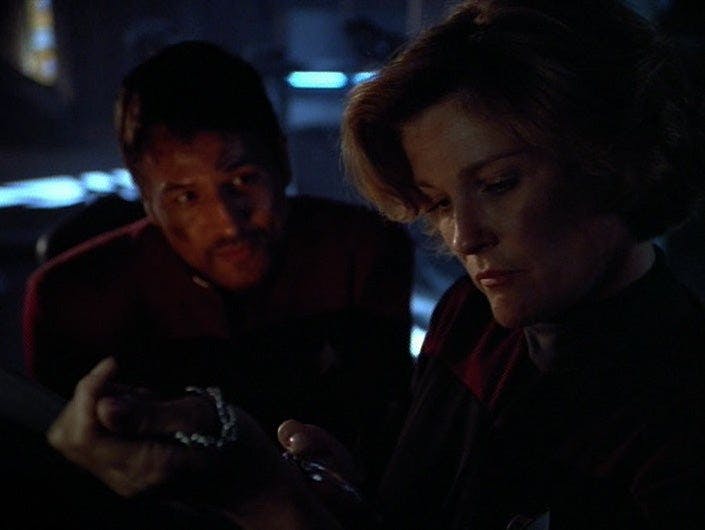
After 200 years, Annorax has pushed past the barrier of pain and reached the philosophical stage of his strange existence: "Anger is one of [time’s] moods — anger, and the desire for retribution, vengeance. Time itself has tried to punish me for my arrogance,” he complains, paranoid. “It has kept me from my wife, denied me my future!” If you’ve been among the luckier ones this year and remained healthy, spending the pandemic being “only” stressed and bored, maybe you’ve had time to ponder the “moods of time” too. We have all lost so much this year. Were it not for the fact that this experience is entirely communal, we too might have been tempted to feel like it was a personal slight.
The Voyager crew are no strangers to difficulty, but as what Janeway initially calls a week of hell looks to be turning into a year, morale starts to tank; the replicators and environmental controls are on the fritz, and the ship is barely habitable. It’s hard enough being separated from your loved ones with no idea when you can see them, but even the most resilient person starts to crack when you can’t shower and have to eat emergency rations for months with no end in sight. We need things to look forward to, or time starts to feel like a threat.
Janeway never actually recycles the pocket watch, instead tying it to her waistband after Chakotay is taken captive. It becomes a symbol of hope on this now dark and broken ship. After she exposes herself to burns to save the ship, Janeway is covered in scars and the Doctor diagnoses her with trauma. But Janeway never has to resolve this damage: when the solution comes, it’s by destroying Voyager and resetting the timeline. The Year of Hell never actually happened.
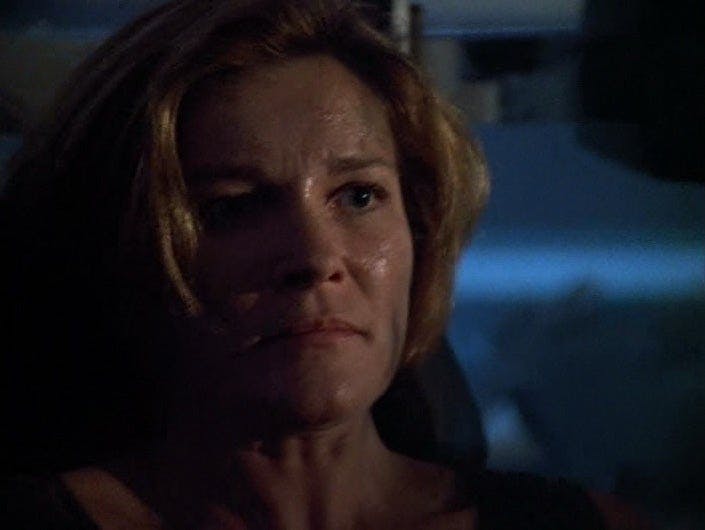
“This is a year I’d like to forget,” says Janeway as she sets Voyager for its final run — and she does forget. When it’s her birthday again, Chakotay will give her that same pocket watch. But even though Janeway doesn’t remember that birthday, it still counts, doesn’t it? Star Trek is full of timelines that never were, or that only some people remember. In “Shattered”, Chakotay retains the memories of the alternate timeline but Janeway doesn’t. “Strange,” she says to him, “a piece of your life you don’t know anything about.”
As neat as it is to watch the ship snap back to its perfect self at the end of the episode, it feels strange to watch that now, after the pandemic year. This experience has changed us, and the idea of not having to deal with the consequences feels too innocent. We’ve just watched the Voyager crew go through fire, but without reflection, that year delivered no growth, only trauma.
In the real world, there won’t be a clean ending to our pandemic year of hell — we have to live with everything that happened this year. Even if it felt like our lives were on hold, the birthdays we had during the pandemic year still counted. We need time to reflect on how this year has changed us, and unlike on Voyager , we will get that chance. For better or worse we will remember our year of hell, and at some point in the future, the moods of time will shift.
Jessica Furseth (she/her) is a journalist living in London, UK. She writes about culture, how technology is changing the way we live, agency around health, and urbanism. She’s on Twitter @jessicafurseth.
Get Updates By Email

Search this site
Star Trek: Voyager
“Year of Hell, Part I”

Air date: 10/5/1997 Written by Brannon Braga & Joe Menosky Directed by Allan Kroeker
Review by Jamahl Epsicokhan
"If I told you to count the stars in the cosmos, would the task ever be complete?" — Annorax
Review Text
Nutshell: A solid, entertaining hour ... but I'm extremely leery of the obvious "RESET" that's surely coming next week.
Part one of "Year of Hell" has some solid stuff. In a word, it's entertaining. But there are two fundamental problems that keep this from being a standout offering:
- There are a lot of elements about this show that remind me of the " Basics " plot setup. Big events build a situation of an impossibly large scale of consequences, but with enough loose ends that it's obvious we're being toyed with and that part two will reverse everything by conveniently utilizing those loose ends.
- The emotional impact is somewhat undercut by the fact that this is a story last season's " Before and After " already successfully tackled. The difference (and what could be the two-parter's undoing) is that this chain of events comes purported as existing in "real" Voyager experience, rather than as one person's artificial experience. And since the effects will be wiped clean next week, I'm not so sure where that leaves us.
So, what we have both despite and because of these facts is a refreshing "what if" premise. Anyone who thinks these events will have lasting consequences in the terms they're given is either truly gullible or fooling themselves. This show is what it is: an interesting mix of slick sci-fi and good characterizations (if not completely engrossing) resulting from the "what if" aspect.
The episode's format is fresh, beginning with the ominous "Day 1" appearing on the screen as the story begins. By the time the show ends we've covered nearly 2 1/2 months in some very hard times of the Voyager crew. On day one, the crew arrives on the border of space occupied by a race called the Krenim, a group first alluded to in last season's "Before and After." In that episode we were foreshadowed this "year of hell" by Kes, who was jumping through time and discovering facts in a "what if" premise of its own.
Now the "what if" is really happening—or so it seems. The Krenim don't initially appear very threatening. But after a mysterious change in the timeline (which we'll deal with in a moment), the Krenim ships promptly open fire. Their weapons have a "temporal" quality that allows them to pass through Voyager' s shields, putting the Federation starship at a distinct disadvantage.
Question of the week: Didn't Kes tell Janeway and the crew about the future Krenim attackers in "Before and After"? I thought so, but apparently that's no longer the case. I thought the first time the word "Krenim" was uttered here the crew would be stricken with a mortal fear and would do everything possible to avoid a confrontation. Nope. But, then again, the changes in the timeline caused by the first "incursion" that wipes out the friendly Zaal alien race makes any number of alternate realities possible.
One complaint I have about the Krenim attackers is that they're a little too ... well, boring. In "Before and After" they were faceless, fearsome enemies with neat ships; here they're typical humanoids with neat ships. I didn't fear them the way I did in "Before and After." And the situation that pits the Krenim against Voyager is a little forced. The Krenim are the usual xenophobes who will hear nothing about a starship crossing their territory. They're aggressive and arrogant; and in the altered timeline they abuse their power and beat up on anyone incapable of defending themselves from the temporal weapons. That's okay, though. I can live with this premise even though it wasn't built upon the most interesting enemy civilization. What makes this episode work in the end are the effects the premise has on the crew and the slick subplot involving the Krenim time ship.
Yes, that's right—I said time ship. Commanded by an obsessed Krenim man named Annorax (Kurtwood Smith), the crew of this ship has separated itself from society and is protected from the effects of time. They have technology that can alter the timeline in any number of ways. Annorax's intent is to rebuild the Krenim empire by wiping its conquerors out of existence. Precise calculations are necessary for the time ship to alter history to the desired effect. Annorax has been trying to perfect his restoration of the Krenim empire for centuries ... and he has all eternity to get it right.
The time-alteration stuff isn't particularly new (though it benefits from some neat visuals), but what makes this work is Annorax's interesting, obsessed character and especially Kurtwood Smith's engaging portrayal of him. Smith has always been an actor that I've found extremely watchable (his appearance as President of the Federation in Star Trek VI was welcome), and here he's wielding a low-key obsession that is nearly always kept reserved. He's a patient, determined man; and although the episode doesn't say it in so many words, it's obvious he lost a family or someone else important to him at the hands of his enemies centuries ago—enemies he now wants to erase from the space-time continuum.
There's a really good scene where Annorax's first officer remarks that the Krenim empire in the altered timeline is thriving at 98 percent of what it "should" be. Annorax isn't satisfied (probably because the colony he's personally interested in restoring was part of the two percent that didn't return). He quietly announces that it's a failure, and orders his first officer to begin the calculations anew. When his first officer objects, Annorax remains calm and determined, and convinces his first officer to follow his orders again. Just how many times they've had this conversation is an interesting issue in itself. Annorax has an aura of conviction, a power of personality that motivates his crew to continue, even in a hopeless plight for perfection. It's affecting through Smith's performance, which is one of the best aspects of this episode.
This plot has relatively little to do with Voyager' s dilemma (other than the timeline machinations and the ending of the episode). Most of the story focuses on Voyager extreme troubles over a 73-day period. The ship takes severe damage. The production crew does a great job of ripping the ship apart for this episode; it's quite convincing. The episode also benefits from believable special effects. The exterior view of an explosion of an entire deck made me wince, and the battered Voyager hull in the exterior shots supplied a striking visual difference.
Most important in this episode, however, is the effect this has on the crew. If there's one sense that "Year of Hell" exhibits, it's that the crew is a pack of survivors. Everyone manages to do their job well even throughout the constant hull breaches, crew losses, and other hopelessness. That's not to say there's no change, because there is, most notably in Janeway. She's determined with every fiber of her being to see to it her crew survives these attacks, but she has also become grim, sullen, and almost hatefully adversarial toward the Krenim aggressors. This is one no-nonsense Janeway.
This isn't , as Chakotay once said, "business as usual"—and for once, it truly feels that way. It's the little details that make the big difference in "Year of Hell." Such details include a promoted Neelix; a blind Tuvok; Harry and B'Elanna playing a trivia game while waiting for rescue in a stuck turbolift (The first warp ship at First Contact was the Phoenix , answers Seven of Nine—the Borg were present during those events. The reviewer grins.); and the shattering of Janeway's lucky teacup (read: in-your-face symbol of the week). There are interesting dynamics to be found in the character relationships, especially the teaming of Tuvok and Seven, which works particularly well. A lot of the good stuff in the episode comes down to little bits of dialog here and there—though I don't feel the need to discuss them all, much of the Janeway/Chakotay interaction worked (especially Chakotay's symbolic birthday gift to Janeway), in addition to a good scene between Doc and Paris.
The only thing I don't fully understand is why it is Voyager is in this situation in the first place. After the first attack, one would think there was the option to turn around and go another direction. If Voyager did turn around, why would the Krenim follow? The episode never really makes it clear how it is Voyager got so deep in over its head in the first place. Perhaps the change in the timeline made Krenim space extend far beyond where Voyager had initially entered it, trapping them well inside hostile borders.
Never mind. After more than two months of gathering data from the attacks, the crew finally finds a way to defend itself from the Krenim's temporal weapons. Unfortunately, using such technology interferes with Annorax's time-alteration calculations, leading him to promptly track down Voyager and attempt to erase it from existence. I especially appreciated Annorax's regret that he had to neutralize Voyager. He realizes that Voyager is an innocent victim, but it doesn't matter—he has a mission to accomplish, and he's going to do it.
Voyager is miraculously able to escape, but not before Annorax beams away Tom and Chakotay (and it's loose ends like this that are certainly going to drive the plot next week—I just hope it's not as transparent as "Federation crewman gains unauthorized access to the time ship controls"). With the Voyager in shambles, however, Janeway orders what she hoped would never happen—the evacuation of the ship and separation of the crew. Only a skeleton crew will remain on Voyager — everyone else will take escape pods and shuttles in different directions, hopefully to be reunited on the other side of Krenim space.
Without a doubt, the theme of the week is the Voyager family. The writers have really been pushing the crew as a unified family this season so far. From " Scorpion II " and " The Gift " to " The Raven " and now "Year of Hell," it looks like the new direction of Voyager is one that centers on interesting sci-fi discovery (like the time ship in this episode) by one big family trying to get home. I can certainly live with that as a mission statement; I just hope the sci-fi interest can be interesting , like this episode manages—rather than hokey like last week's " Scientific Method " turned out to be. Janeway's speech about the subdivision of the family is heartfelt, though a little too stilted toward the end.
One thing I'd better make clear is that "Year of Hell" didn't rivet me to the screen the way I expected it to. I was interested, yet, surprisingly enough, I wasn't really moved much emotionally by the plight of Voyager' s desperation. A better word for my state of mind might be "intrigued." That's too bad considering the richness of the material. I think a big part of the problem is that I'm worried not only about the inconsequence resulting from wiping of the slate next week, but that the crew won't even remember what it's been through—which would render all of this virtually pointless. That's a problem I'll have to tackle next week, though. For now, I'll try to push it out of my mind and enjoy the "what if" premise on its own terms.
Next week: The mother of all reset button plots? I'm guessing so. Or, to quote Garak, "I always hope for the best. Experience, unfortunately, has taught me to expect the worst."
Note: In trying to show off Voyager's action and special effects for next week, the wonderful preview people have screwed up again. Anyone paying remotely close attention can figure out generally what's going to happen at the climax of part two's plot (and don't read on unless you want to read speculations that could turn out to be spoilers). Janeway's going to ram her battered starship Voyager into the Krenim's time ship (shortly after saying "Time's up" as a tagline), causing a major explosion and a temporal anomaly that will reset everything to ground zero. Mark my words: It will happen. But, then, what else could you expect? We certainly can't have the Voyager lying in ruins.
Previous episode: Scientific Method Next episode: Year of Hell, Part II
Like this site? Support it by buying Jammer a coffee .
◄ Season Index
Comment Section
66 comments on this post.
If you take away the plot of the guy changing history this episode represent what Voyager should had been. I enjoyed Voyager but I can't help but think what could had been if the show was done properly.
I read that there was a scene at the beginning of the episode where Janeway remembered Kes's warnings about the Krenim, but it was cut out of the final episode. If they cut a scene that blatantly important to continuity, it makes me think that all of Voyager's problems might have been cause by "The Guy Who Decides Which Scenes to Cut Every Week". Just think about it, what other scenes might have been cut? There might've been scenes where they showed the Borg baby dying, revisited the Doctor's holographic family, or showed Tom actually talking to his father in "Endgame", Starfleet dealing with the Maquis in Season 7, Unimatrix Zero actually hurting the Borg collective and becoming relevant, explaining the tractor beam in "Voyager Conspiracy", Kes actually getting some character development...maybe even a scene where Harry Kim didn't act like an idiot for once. It could've been a completely different series if not for that cutting room guy.
It took me a long time to warm up to this two-parter but it eventually became one of the episodes I go back and watch the most. I think I didn't like it because it ruined what I thought would be an excellent story line: A real "year of hell". An entire season of Voyager crossing through Krenim space, the periodic attacks, the ship in ruins, making new allies to help repairs or combat the Krenim...Maybe even forcing everybody but the senior officers to abandon ship for a few episodes. That would have been something. But once I got over the fact that storyline was never gonna happen, I warmed to this episode.
For someone who claims to dislike time travel & time paradoxes, Janeway sure manages to encounter them quite a bit, doesn't she?
Ah, Tim! Now you've made me realize just how much this idea could have done for Voyager! I've always liked this episode, but now I can't help wishing they'd done the season!
Was that suder I saw during Janeway's farewell speech at the end?
Despite the always-watchable Kurtwood Smith, this two-parter doesn't hold a candle to the Krenim's brief appearance in "Before and After" (with a reset button ending I saw coming a mile away). Am I also alone in thinking that Doc's speech at the beginning was irksome and seemed like something an irritating character like Neelix would say?
It's a fun episode for what it is, but it's hard to believe that the Q would tolerate meddling of this magnitude, or at the least, not undo everything as he does it.
I don't think they could have sustained this storyline for an entire season, for the simple fact taht as Jammer mentioned the Krenim aren't interesting enough villains. If they wanted to destroy Voyager, they probably could have done it, so you have to assume the reason they constantly attack and let them survive is out of pure sadism. I have to say Janeway's decision at the end doesn't make sense. Even a very damaged Voyager would be safer than a tiny little escape pod with no warp drive. And all those faceless crew members could surely help conduct repairs? Especially given the fact that the Krenim Imperium is no longer a threat. It's still a pretty riveting episode, though. I didn't guess on first viewing that the timeline would be reset (in my defense I was eleven years old at the time) which made it much more enjoyable.
I LOOOOVE this two-parter, one of my favourite Voyager episodes ever, primarily because of the Annorax character- probably one of Trek's most effective and sympathetic villains.
Cail Corishev
Nic, I was thinking the same thing when Voyager was hiding in the nebula, apparently safe as bugs in a rug. Surely the crew would have preferred to have been there helping B'elanna make repairs, rather than floating through hostile space waiting to be used for target practice.
I'm with Nic & Cail...escape pods are meant to get yourself off a ship in danger and to some stable haven like a space station or another vessel. They aren't meant for general space travel...I would think the occupants would go insane in short order by the cramped quarters and the lack of something to do.
I also thought I spotted Suder in the farewell speech. And how is Kim an expert quiz master on 20th century film when professed his disdain for passive viewing entertainment in Future's End? Knowing there was a huge reset button waiting at the end of part II took the tension out of what could have been an interesting story. The ship all banged up should have been what Voyager had become if the writers and producers actually gave a toss.
The Krenim have supposedly been at this for two centuries, but it only now occurred to them to aim their weapon at the Zahl homeworld, right when Voyager is coming into the situation?
The escape pod dilemma always bugged me; even when I first saw it. I would have appreciated a throwaway line saying that they were in a star system with a habitable planet; and that Voyager's life-support systems were so badly damaged that they no longer could support a full crew. Janeway kinda sorta states that in the end; but doesn't fully. @Jay: They probably already wiped them out, then wiped out another species which brought them back, rinse and repeat. This cycle is explicitly mentioned in part II. Overall, this is a depressing two-parter for all the wrong reasons. First and foremost this really should have been the entire premise of Voyager. At the end of the series the ship should have looked the way it did in this episode. If they had to have a fixed-up ship; I would have gone for Borg tech fixing the damage. Just imagine; Borg armor filling in hull-breaches (The Gift has a neat visual of what this might look like) and Borg technology all throughout the ship. Borg panels, Borg conduits, ect. Would have been awesome and more consistent given what we know about Borg technology automatic regeneration compared to regular Federation metal. I do agree that this could never have been a full season with how insanely dull the Krenim are. Drop the standard humanoid appearance and give true depth and a good reason for why they are stuck in their territory and maybe it could have worked.
The concept of a 'Year of Hell' was not necessarily created based on the Krenim being antagonists throughout, but possibly on that of Voyager being kicked from pillar to post over the course of a season. In fact I suspect the time aspect may have been added specifically to make the idea work in the short term. I could be wrong, but the trouble here is that such a scenario is entirely believable due to the writers tendency to take the easy road with Voyager.
What I would like to have explained is how, after last season Kes explained the Krenim, the kronoton torpedoes and the time-shift factor of 1.47 seconds, how did they not have pre-knowledge of this and how were they not prepared in advance with counter measures? I was very confused by this, and I guess I'll have to re-watch "Before and After" again to get the answers. Did anybody else figure this out?
I, too, specifically remember Kes warning the crew of the Krenim. And it does count, because after they restore Kes to her proper timeline, Tuvok advises that she keep most of what she saw to herself as he does not want to risk tampering with a possible future, but he also suggests that she SHOULD tell them about the Krenim, given the extensive damage they would inflict on Voyager. They should already know about the Krenim. Tuvok should have recognized that torpedo in the Jeffries tube and known about the temporal fluctuation. But now it's like they don't even remember anything. No one reacts to the name of the Krenim species, the torpedoes in temporal flux, the temporal variance of the chronitron torpedo. All of this is information that Kes passed on to them, at the end of Before and After. My guess is that the crew doesn't know about any of that, because Annorax and his ship wiped it from their memory in one of their many attempts to reset history to something they like. Voyager was, as he says, temporally inert and thus fully subjected to the changes in time, which probably included any knowledge of the Krenim and the Year of Hell events Kes previously warned them about. Voyager lights up like a christmas tree on the Krenim radar the moment their temportal shields interfere with their calculations and throw the whole thing off. Any time before that, Annorax and his crew weren't interested in them. It is entirely possible that Before and After happened in between two changes made by Annorax and that the future Kes saw in that episode never came to pass. Or only came to pass in an alternate reality, if you really want to make it complicated. At any rate, the information she passed on to Tuvok and the crew seems to have been lost completely. That's the best I can come up with. I'm beginning to understand why Janeway wants to stay away from any timetravel BS. It's headache inducing.
Scubabadger
Tell me this - Kes experienced the Krenim in her possible future and warned the captain about the danger they would face passing through Krenim space in a year or something like that. But then in the gift, that timeline changes, Kes leaves the ship, meaning she won't ever experience that time line for real. So be it - the warning could still be valid as the krenim are still out there. HOWEVER - at the end of the gift she throws them 9500 light years closer to home. Surely that would throw them past the point where they would have met the krenim, unless somehow in the possible alternate future they'd also managed to jump the same distance some other way.
Xylar, Scubabadger... You two are labouring under the assumption that Voyager writers gave a toss about continuity or the fans. They didn't.
@DLPB "Hey," say the writers, "we picked up a reference from a past episode. What more continuity do you want? Get a life!"
Did they rebuild the escape pods somehow? Because otherwise they should be all gone from when the Kazon used them to flee Voyager at the ends of Basics II.
Well, the writers REALLY blew it here. She not only discovered the variance, she told it to the EMH!! "EMH: I beg your pardon? KES: It's a long story. The important thing is, the temporal variance of the chroniton torpedo was one point four seven microseconds. " eeeeesh...... but then we wouldn't have had YOH would we? ... Voyager would have been able to defend against their torpedoes and they could have just warped out of there. From Chakotay.net: "(The torpedo explodes. Tuvok shields Seven with his body as the flames rush down the Jefferies tube. Now we know why Kes is being ignored. It is so Seven can take the credit for saving the ship.)" lol... Scubabadger, my take is that she did experience it in the 'Before and After' timeline, but her timeline changed because she "evolved". It's iffy no matter how you look at it... I don't have as big a problem with the whole escape pod thing. I think it was a matter of feeding and housing the crew as well. They'd lost 9 decks... life support was spotty at best... The remaining crew were barely surviving on rationed MRE's and all. My biggest issue was her telling the soon to be ejected crew "Along the way, try to find allies. Secure faster ships, if you can. Anything to get home". It should be a survival speech, not a "get home" speech. Find a planet! :-) Jack, escape pods must be like shuttle craft... easy peasy to rebuild :-) But hey, aside from that stuff this episode was fantastic. As with most trek stories, its the story and how ir affect our heroes. We just have to forget about Kes. Annorax was a great. Very interesting, again Star Trek time travel is about ONE timeline and the affects change have on IT. Just like the new movies. Tuvok and 7's scenes were top notch and moving. Harry and B'Elanna scenes were good because B'Elanna was in them. All the "Yoyager must be beat up" folks are given candy and still complain. I love how Chakotay DOES HIS JOB by countering his Captain. Presenting all options. Then I love how he didn't want to abandon ship at that time. Good #1. All the nit-pic stuff aside, it still was moving when Janeway gave the abandon ship order... it just was. I'll go 3 stars because of the writers Kes gaff.
I'm getting really sick of Chakotay and his hippie "let's just surrender" speeches. He makes the same speech in that second season episode when he and Janeway are infected with a virus and are stranded on their very own planet. Then in Scorpion he tells Janeway to get Voyager out of harm's way and settle on a Delta Quadrant planet. Here, he tells her to abandon Voyager. I really want to punch this hippie Indian in the face! How was he ever a Maquis soldier? Where is his testosterone? "Even the eagle has to sleep," blah, blah, shut the fuck up! By the way, do those escape pods have toilets?
Diamond Dave
I haven't been as taken by an idea like the year of hell when it appeared in 'Before and After' since the Borg universe Enterprise way back in 'Parallels'. So this should have been an absolute slam dunk classic - and yet it just isn't. Even accepting the fact that there is no acknowledgement of the events of 'Before and After', that the 10 years journey time saved in The Gift should have put them beyond Krenim space, and the lingering suspicion (evidenced by Janeway's hair?) that we're in a different timeline somehow anyway, this fails in its choice of antagonist. The Krenim were enough of a black canvas to come up with something really cool - instead we get a bunch of preening space Nazis right out of a 1970s Doctor Who show. We do get some destruction porn as the Voyager gets increasingly torn up - and awesome work it is too - but as exciting as elements of it are this should have been so much better. 3 stars.
Janeway's "abandon ship" speech to the crew at the end was one of the best dramatic performances in the Trek universe. And it kinda made me love her.
In rewatching this episode, it bugs me that Janeway mentions to Annorax that Earth is 65000 light-years away. What?
sleep inducing. Once again Janeway is an idiot. She should have blown the first attack ship to bits. when someone is attacking you you don't give them a chance to win. from there we get Mortal Kombat. Round 1. Fight! Round 2. Fight! sleep inducing
George Monet
This was a huge waste of the Year of Hell concept because we didn't get a Year of Hell. We didn't get a week of hell, we got nothing. The whole point was seeing the slow buildup, was seeing Voyager go from its normal pristine state to damage and limping. To see how the crew responded. To see the drama. But we got nothing of that. Voyager went from pristine to damage at the snap of a finger. That isn't interesting, it is the journey from pristine to damage that was interesting and we were denied that story. There is also a problem with the timeline. Since this ship has been in space for 200 years, that means everyone and everything they were trying to bring back died off 160 years ago. So it will never be back irregardless because those people died. Plus it is impossible to restore everything because those things only arose as a result of the strife and hardship which led inevitably to the death of this idiot's wife. Without those chain of events neither he nor his wife would have ever been born and lived in the first place. We are also left to question what happens or what it means for something to be removed from time. If those are removed from time, then wouldn't they still not exist when the next temporal incursion is brought about? So this ship is permanently destroying matter and if it continued for infinity there would be no matter left in the universe. But there is still the time paradox problem that no shielding is going to save you from as this regards the very existence of the ship itself. If the ship was never built it would immediately cease to exist and so the shielding it has in the future would not serve as protection against it ceasing to exist in the past. The Voyager writers should stay away from time travel because they don't understand how it would work. Also, what happened to that temporal shielding that Kes was going to help them create 2 years ago? What about the warning Kes gave about the Krenim and the torpedoes? Why did Janeway decide to continue through Krenim space despite the clear indication that the Krenim were hostile and didn't want Voyager in their territory? Continuing through Krenim space was just clear boneheaded idiocy and even Janeway wasn't enough of an idiot to decide to enter Krenim space despite lacking the ability to defend against the Krenim ships. This was another episode where nothing worked for me because the writers put too little effort into figuring out how everything should logically work and then trying to make each character act how they should act and make events progress the way they should progress. I also hate being cheated out the real Year of Hell.
A final thought, everyone on the Krenim ship died 140 years ago from old age. Since the people on the ship are mortal and the people on the ship don't exist in a state of temporal stasis as they are moving around the ship, talking to one another, eating, shitting, sleeping, then they are still moving forward in time otherwise they would not be moving. Since they are clearly moving forward in time and 200 years have clearly passed inside the Krenim ship, then everyone on the Krenim ship is 200 years older than they were when the ship was launched. Furthermore, the Krenim ship isn't cloaked and is visible to every other ship in the region. This means that time on the Krenim ship is the same as the time outside the ship. Otherwise light from the suns would not be reflecting off the Krenim ship. The Krenim ship would be unable to scan outside the Krenim ship. So the Krenim ship is not in a state of temporal stasis within the ship and it isn't outside the timeline outside the ship. Everything on the ship must age the same as everything outside the ship because everything on the ship is part of the same timeline as everything off the ship. The writers are incompetent and believed they could have their cake and eat too because they have absolutely no idea how their world must work.
Voyager ignoring Kes's warning from the earlier episode makes even less sense considering Year of Hell was supposed to be aired at the end of season 3 (closer to Before and After) but was shelved for the two-part season finale introducing Seven of Nine.
Jumping around willy-nilly through various VOY episodes I've never seen I watched this two parter last night. I thought this was a really solid couple of shows but even my wife who was half-watching and knows almost zero about Trek knew it was going to be one giant 'It never really happened' story. Another great Chakotay causes interesting friction (this time with Paris) only to change his mind about 3 minutes later, more or less :( I'm curious about the final scene- Did Annorax change his tune completely by going off with his wife or is it just a replaying of what's already happened before and will happen again?
Del_Duio, I think it was meant to convey he had "changed his tune" because of what Annorax had stated during the episode. (something to the fact that he hadn't spent enough time with his wife because he worked too much). But you're right, it's left up to the viewers interpretation.
I had always interpreted the ending as implying that the final change in the timeline didn't quite reset it *exactly* to how it had been in the first place, but rather to a state very similar. Based on how the scene is shot it looks like they're trying to show that all those years of torment somehow had an affect on the past-version of Annorax and that going to his wife was in some loose sense guided by subconscious avoidance of that terrible possible future. I don't know how this would be possible, but anyhow it seems like the result is that things are more or less reset, but not quite. As Voyager wasn't in that part of space yet, the timeline changes likely wouldn't affect them either way.
I took the ending INCREDIBLY literally. "The core is destabilising. It's going to cause a temporal incursion within the ship." Temporal incursion has, until this point, meant erasing something from existence. I take it to mean that the time ship was erased from existence. That the Krenim never built it. And so all of the things they erased were restored. I felt that was the paradox of the entire thing. Annorax accidentally destroyed his home colony during his second incursion. The only way to fix it was to stop himself. To destroy his own ship. Like Dorothy and the slippers, he could have clicked his heals 3 times and gotten home anytime he wanted, he just couldn't see it.
@ Robert, Maybe I'm remembering the ending incorrectly, but wasn't the event of him going to his wife rather than working later supposed to be prior to the invention of the time ship? In other words, what happened was that in this timeline that one moment was crucial as to whether or not he'd ever finish the work, and he didn't. I guess it could also be interpreted as just being some random timeline very much like the original one, but where the coincidentally didn't complete the project. My comment above was only to say that I felt there was an implication that it was more than mere coincidence that kept him from going back to his work.
Thanks, guys. It does look like he'd change his mind up until then pan the camera at his PADD which looks like he's still working on the Time Ship afterall. So maybe his best case scenario would be the creation of the Time Ship eventually but he was able to still spend more time with his wife and family in the process?
"Maybe I'm remembering the ending incorrectly, but wasn't the event of him going to his wife rather than working later supposed to be prior to the invention of the time ship? In other words, what happened was that in this timeline that one moment was crucial as to whether or not he'd ever finish the work, and he didn't." I agree! But not because he remembers anything/learned his lesson. But because the time ship is not meant to exist anymore. Because it's been erased. It's nice to say I "erased you from existence" but that doesn't explain anything. Did I make your conception not occur? Do you have a "sibling" now that was born instead of you? Did your parents not meet? Was one of them killed as a child? I think that's the idea. The timeship was "erased" because time was altered so that he never built it. The incursion is what caused him to not go back to his work. That's how I take it anyway.
james alexander
this is one of my favourites, when I'm looking for a good couple of hours of television. we have a Voyager at war, people are dying, anything that can go wrong will, and the action scenes of Voyager getting battered are still really cool. the walking reset button aspect of it turns it into more of an experiment than a nightmare that's going to haunt the ship and crew, however. how much damage can we do? how many crew members can we kill? how will Janeway behave when she's subjected to a Year of Hell? the way I see it, something this devastating ought to have been used as the final story-arc before the ship somehow makes it home. there was potential for a several episode arc, but instead it was a two-part episode with a reset, that simply turns it into a hypothetical scenario.
I do get a kick out of any episode that goes as far as to trash the USS Voyager, such as this one or even Deadlock.
"I think that's the idea. The timeship was "erased" because time was altered so that he never built it. The incursion is what caused him to not go back to his work. That's how I take it anyway." Does the time ship alter time by removing objects from reality or by mind controlling people in the past? How can the ship mind control Annorax by making him put down his starship blueprints when the only thing that happened to the ship was that its time core exploded? The whole two part series makes zero sense. It doesn't even explain how something can be removed from time space because an object isn't an object, it is a collection of objects which just exist as a thing we interpret as an object in that moment in time. But a comet might have once been a piece of a star, and might become part of a planet or split into two. The comet itself is just a bunch of atoms. So how exactly would you remove a comet from time? Pushing the comet out of time couldn't possibly push all the atoms from the sun that would produce the comet out of time. It could only push the thing as it existed at that point in time out of time. So it is impossible for the timeship to cause Annorax to not build the timeship as the timeship does not have past mind controlling powers. Many of the problems with Star Trek: Voyager stem from the writers not understanding how the tech is supposed to work and not wanting to deal with the tech they have. Thus we so often see teleporters and sensors not working for completely bogus reasons. We see a failure to make use of medical technology which can sometimes bring someone back from the dead and sometimes can't save someone who has just been shot and is still alive even though Neelix was kept alive for days despite not having any lungs...The use of technology is completely arbitrary. They use it when using it furthers the plot but then either completely forget about it or shut it down when they want to just phone the episode in.
Overall a good hour of Trek with an interesting villain in the Krenim and their temporal weapon. From "Before and After" I have to wonder why the Voyager crew know nothing of the Krenim after what Kes told them before -- perhaps it's because of prior uses of the Krenim temporal weapon, but precisely because we're dealing with altering timelines, some things may fall between the cracks. The best part of the episode is seeing Voyager absolutely battered and how the crew have to go about their work under extremely difficult circumstances. "Year of Hell" is an appropriate title. Definitely plenty of good scenes with the crew members helping each other, trying to stay positive etc. Using the escape pods is the ultimate in desperation. Can't say I give much chance of survival for them. But for some reason, "Year of Hell" is nowhere near as enthralling as "Scorpion" was for me. Even with an interesting villain and development of character for Annorax, the plot isn't as compelling. I have no idea what happens in Part II but if there is just a reset based on changing the timeline or something, that will be very disappointing. The temporal weapon to wipe out a species is a tad far-fetched for me, even within the paradigm of Trek sci-fi. Kind of reminds me of the Genesis weapon in Wrath of Khan, which was more believable and had some pseudo-science behind it. "Year of Hell, Part I" deserves a 3-star rating. We'll see what happens with Part II but there's definitely enough good stuff here although there are a few issues like why no reference to "Before and After" and trying to keep things straight after Kes's departure and flinging Voyager X light years away (possibly past the Krenim) etc.
One of the best episodes of Voyager and of the spinoffs, pretty much everyone at the top of their game. Certainly reminiscent of some earlier episodes but still quite fresh and even more impressive for being both.
They built an astrometrics lab, that has 10 times the mapping accuracy they had before. What does that even mean? They didn't know where they were before? And they plot a new course home, that will save them 5 years. Wut? What course were they taking before? I would assume they pointed towards Earth and flew there in as straight a line as possible. How could they have been off by 5 years? Silly. And the whole premise of this episode is dumb. Like Jammer said, why wouldn't they have just left immediately and gone around this area? Why did that one chick on the bridge die when the timewave or whatever it is went through Voyager? Everyone else was fine. How was Voyager not destroyed long before they came up with temporal shields? And the whole ignoring Kes thing annoyed me greatly. The time ship and the alterations it makes to the timeline make no sense whatsoever as other people mentioned. This could have been way way better. 2 1/2 stars.
I have a question regarding 7's statement that "The Borg were present during [First Contact]". Obviously it wasn't meant to be looked at in depth, but how would she know that they were present during the events. From my understanding (and recollection), all of the Borg involved were destroyed, and obviously they failed at their objective to inform the rest of the Borg from that time of Earth's presence, or it would have been destroyed. Is the collective able to know what's happening to each other despite being out of their own time?
@jamnjon Frankly, I don't think Voyager's writers thought too hard when they decided to throw in a reference to "First Contact". The only reading of that line I can make sense of is that the Borg have a record of sending a sphere back in time to stop Earth's first contact and Seven knows about that. But you're right, it wouldn't make any sense if the Borg could communicate cross-time. That would eliminate any reason for them to travel back in time in the first place.
The writers did close that hole later. According to ENT's "Regeneration" a remanent of Borg did survive and was able to send a message to the Delta Quadrant, but it would take about 200 years (from ENT's time) for the message to arrive. IMHO, FTL communication is the real plot hole in Trek. Trek tends to assume the communication is instant, realtime and requiring very little 'power' compared to warp. We can guess how warp would be not physically impossible (even if the 'solutions' would require unreal materials and absurd amounts of energy), but how would realtime FTL communication work without at the very least massive violations of casualty?
The reset button was abused like a ginger orphan repeatedly during this show’s run and I agree with the broad consensus that it was pushed so often that it badly hobbled the series’ credibility. That being said it seems rather unfair to mark this one down for it. Firstly, since this is a review of Part One specifically, the reset button hasn’t been pushed yet. Of course it will be in part two, so any criticism should be aimed at that episode, not this one. Secondly, I really don’t have an issue with the reset button when it is built into the story as it is here. The whole plot of the episode revolves around a man pushing his giant reset button repeatedly in an ongoing aim to recover what he’s lost. The way the plot resolves is entirely consistent with what goes before and the reset makes perfect sense in-universe.
I always thought this episode sucked. Why? Well, for one simple reason; Why didn't Voyager just go around Krenim space? Seriously, these obvious hostile people don't want you in their territory so why risk it? After the second or third attack shouldn't they have considered just leaving Krenim territory and jusr going around it. Even if it adds a few years to their journey isn't it better than getting your ship destroyed and crew killed? I'm pretty sure there was nothing stopping them. Please correct me if I'm wrong. Also, assuming Voyager made it through Krenim space, assuming no reset button(because the character's don't know it's coming even though the audience does), what was Janeway's plan? The ship was irreparably damaged, most of it's crew killed, several decks obliterated, weapon systems barely working, and energy reserves mortally low, what was voyager going to do? Die? Why did Janeway keep pushing further into Krenim space after it should have become obvious that this was the worst course of action she could have taken? Did some part of the time travel plot explain it? Was she hunting the time ship(it's been some time since I've watched it sorry if I'm missing something.
Jesus, I just realized that it's 3 am and I'm typing entire essays about a show from 1997 in the comments section of a review from 2008. I need help
For the record, the review is also from 1997. The comments just weren't turned on until 2007.
Ah! Voyager is in shambles. Parts of it are blown to smithereens. All very well done. Blind Tuvok being led around by Seven was especially affecting. Caring isn't about emotion; it's about action. And the final scene, all those little ships, streaming forward like pods outta Hell. The ep asks some very important questions about what's most important. 98% restored? Not good enough? Why not? Because Family!! Home!! Life!! Death!! Things get way, way down to basics. The watch or food and boots? Die together or live apart?? Anxious for part 2.
Kurtwood Smith. Robocop. He had me there.
Sleeper Agent
I've said it before and I'll say it again: time distortion/alternative timeline-stories annoys the cr*p out of me. In this episode we get a shining example of how messed up it easily gets. On the positive side everything else is really good in "A Year of Hell Part 1". Mulgrew is on such a level that she alone makes it worth the watch. Bravo!
Todayshorse
Even with the inevitable reset, I quite enjoy this 2 parter. But where are the Q in all this? Or do the Q just not give a damn knowing the reset is coming eventually even after 2 centuries, which I guess to them, is like a brief second in time.
MusicalTurtle
Ah, Year of Hell, a.k.a. Voyager's writers have fun playing at DS9 but can't *quite* let go of the reset button. I liked blind Tuvok (hooray for correct guiding and accessibility tech! [tactile interface]) and the dynamic between him and Seven was just perfect. Neelix as security officer was a nice touch - you know things are bad when Neelix gets to put on a uniform! To be honest, the very first time I watched it was as a teenager and I was glued to the screen, I couldn't believe they'd survive it - at that point the ending was actually a relief. Now it's frustrating, though that is for the next part. To be honest I've seen it a couple of times since but I still didn't remember how everything reset so I didn't skip it, but I didn't pay close attention like I normally intend to for rewatching. It's a good couple of episodes to examine what happens character-wise under extreme circumstances, and for that alone I may rewatch with more attention next time. So it does have some merit as a standalone piece, but in terms of the overall canon it doesn't do very much (whereas if the DS9 writers had been in charge, it most certainly would have had some kind of effect on the overall canon, even if they did still reset. Glimmers of those characterisations in other circumstances, probably with specific echoes of happenings in the episode even if it didn't really happen.)
Sarjenka's Brother
Oh man. Tough crowd. This is three and three-quarters "Trek" to me -- just shy of a four-star classic. Loved the evacuation speech and pods leaving at the end. Surprised the Borg haven't tried to help themselves to Krenim technology. Of course, maybe the Borg have't been around at the right time!
Tannhaeuser
I used to hate alternative timeline stuff, but then I realized that it was just a way to reset things at the end of the day. Wow isn’t it exacting we beat up the ship with fires and spectacles and get a lot of important regulars killed, except we reset everything at the end by resetting the timeline. It is a modern day Deux ex machina.
@Skreeg ))They built an astrometrics lab, that has 10 times the mapping accuracy they had before. What does that even mean? They didn't know where they were before? And they plot a new course home, that will save them 5 years. Wut? What course were they taking before? I would assume they pointed towards Earth and flew there in as straight a line as possible. How could they have been off by 5 years? Silly.(( You're using a 9-inch world globe to navigate your way, by car, from San Francisco to Washington D.C. The globe is so low-resolution that you can barely make out a couple of major highways, rivers, and such. According to your calculations, you are going to need 8 days to reach D.C. Then you come into possession of a hoard of "old-style" filling station maps (one for each state in the Union) - with much greater detail! Suddenly, you see that there are plenty of shortcuts you can take advantage of! You suddenly see bridges, etc. that can shorten your trip. You also now see previously unseen barriers that you thus now know to avoid! Presto! You now calculate that you need only 4 days to reach D.C.!
@George Monet ))Since this ship has been in space for 200 years, that means everyone and everything they were trying to bring back died off 160 years ago.(( The Krenim are a very long-lived species. 200 years equates to a boring afternoon to them. So once Annorax restores the timeline (and thus revives his wife and children), they will be able to return to their home world and find their loved ones still alive. "Obrist" is upset and restless not because of the 200 years per se, but rather only because he sees that it might take millions of years.
EventualZen
@Yair >IMHO, FTL communication is the real plot hole in Trek. Trek tends to assume the communication is instant, In TOS “The Enterprise Incident” they say communication takes 3 weeks to Star Fleet from the Neutral Zone. I think this gets ret-conned in TNG because they seem to communicate without trouble over great distances.
It's been a while since I've seen this episode but I noted that Tuvok refuses help with shaving because of pride, isn't pride an emotion? Seems kind of un-Vulcan and therefore out of character. Overall score: 7/10, time paradoxes be damned.
Why would Tuvok need a mirror to shave if he's blind? LOL
After the chroniton torpedo blew up in his face, Tuvok was rendered blind. It’s unlikely that it would have helped, and apparently it didn’t, but they could have least mentioned the inner-eyelid thing.
))Why would Tuvok need a mirror to shave if he's blind?(( @STFan: The (cracked) mirror was already hanging there on his bathroom wall BEFORE he was blinded. Tuvok didn't "need" the mirror - it just happened to still be there.
Michael Miller
How exactly are the Krenim "scanning" the continuum? It's unreasonable to believe they just magically know the timeline of every particle in the galaxy or universe for that matter, much less that Chakotay can start mastering doing these calculations on a little pad. As I mentioned in my part 2 comment, the superman abilities and superman learning that these star fleet people are shown to have is laughably absurd. And this is something that is annoying across all the series. They can learn how to use alien technology, in a productive way, sometimes even more throughly than the aliens themselves can, after spending 10 minutes on their ship. The same is true in reverse, all these invading aliens that instantly know how to not only commandeer the ship, but repair stuff when the crew tries to slow them down by sabatoging systems. Take the episodes of cogenitor and displaced as examples of this. "I was watching you long enough I now can master flying an astropod around solar flares in the corona of a star in dazzling maneuvers even though I haven't even touched the controls yet." That would be like if a crop duster took me up for a 15 minute ride and now I know how to fly and master an F18, it's absurd. I'm also sick of the crap where the crew are suddenly super-human, like Janeway casually fixing the deflector control as the raging flames are burning 60% of her body and the whole deck is buried in smoke. I find this stuff more annoying because all the time stuff there is no logical way to analyze, it's not meant to, but they could at least make basic things make sense, like how warp 2 goes a few parsecs in seconds, yet warp 7.3 only goes 30 billion kilometers in that same time (Emergence), or actually make the people act like human beings and not some kind of advanced cyborgs with the learning and physical abilities of a borg or supercomputer. That's my main problem with star trek, how everyone is suddenly superman/superwoman in these action packed episodes. It's not realistic on any level.

Submit a comment

- May 31, 2024 | Podcast: All Access Says Farewell To ‘Star Trek: Discovery’ With “Life, Itself”
- May 30, 2024 | Alex Kurtzman Explains Why ‘Star Trek: Starfleet Academy’ Is Set In The ‘Discovery’ Era
- May 30, 2024 | Recap/Review: ‘Star Trek: Discovery’ Pulls It All Together For “Life, Itself”
- May 29, 2024 | ‘Star Trek: Strange New Worlds’ Season 4 Filming Set For 2025; Anson Mount Thanks Fans For Patience
- May 29, 2024 | Watch: Saru Has A Daring Plan To Save The Federation In Clip From ‘Star Trek: Discovery’ Season 5 Finale
Bryan Fuller Describes ‘Star Trek: Voyager’ Serialized “Year Of Hell” Season Rejected By Rick Berman
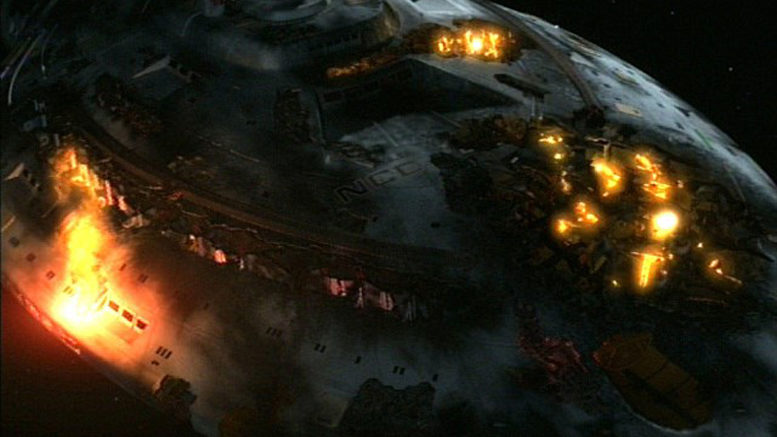
| May 29, 2020 | By: TrekMovie.com Staff 206 comments so far
Star Trek: Voyager was launched 25 years ago and continues to have a strong fan base, but it never achieved the same level of ratings as its predecessor, Star Trek: The Next Generation .
Bryan Fuller, who had worked on Deep Space Nine before writing for Voyager and eventually becoming a staff writer (then story editor, then co-producer), was the guest on the latest episode of the excellent Inglorious Treksperts podcast to celebrate Voyager ‘s 25th anniversary, where he revealed some of the show’s inside drama.
Voyager chasing The Next Generation
Fuller spoke about how from its start, Voyager was “very much a reaction” to the more serialized Star Trek: Deep Space Nine , which had premiered two years before, adding the show was “in some ways an antidote to the vision of Deep Space Nine .” Fuller talked about how Voyager was pulled in different directions, trying to recapture the magic of TNG, while differentiating itself from DS9:
I think Voyager initially was trying to be The Next Generation and finally decided what it was going to be around season four. I think part of that in a strange way is we lost very quickly the dynamics of the Maquis interacting with a Starfleet crew. They were terrorists and committed terrorist acts and everybody was like, “It’s okay, let’s all go together.”… That’s not good storytelling. You need to know these characters are coming from a place that is culturally different, so they can’t just be regular members of the crew which it fell into very quickly to solve the problem of Deep Space Nine .
The podcasters and Fuller acknowledged that eventually Voyager found its voice and delved into some high-concept science fiction ideas. Fuller gave a lot of credit to showrunner Brannon Braga and Braga’s writing partner Joe Menosky, while pointing out their struggles with Voyager co-creator and executive producer Rick Berman:
Brannon Braga should be given a lot of credit – Brannon Braga and Joe Menosky – and it really was their two voices more commonly than anybody else’s. I think what was interesting in the evolution of the show was you could sense the creative struggle. I witnessed the creative struggle when I was working there. There was an appetite for these bigger, bolder science fiction stories. And there was a lot of resistance from Rick Berman in embracing them because he was chasing The Next Generation and was not allowing Voyager to be the show that it could be.
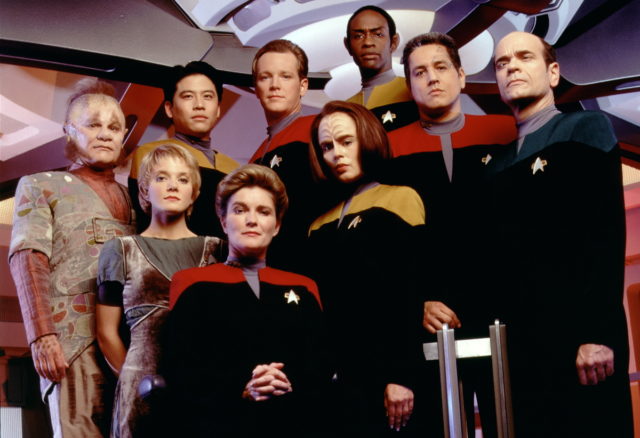
Season one publicity shot for Star Trek: Voyager
The “Year of Hell” season
The season four episode “Year of Hell,” written by Braga and Menosky, is considered one of the Voyager ‘s best. In the two-parter, the crew was split apart and facing its greatest threat yet, from Annorax (Kurtwood Smith) of the Krenim Imperium, who used time itself as a devastating weapon. During the podcast, Fuller talked about how the writers were originally hoping for the Krenim to form a much longer serialized arc, but the idea was rejected by Berman:
The “Year of Hell” and the behind-the-scenes drama not only to craft episode, but that season, was fascinating because we wanted “Year of Hell” to last the entire season. We wanted to see Voyager get its ass kicked every episode and through that season was going to be marbled the story of Annorax and the time ship that was changing things. So, we would go back to it every once in a while to remind the audience that is the larger story. But [it was rejected] because Deep Space Nine made Rick Berman allergic to serialized storytelling, violently so.
Fuller spoke enthusiastically about how the longer serialized arc “charged up” the writers:
We are really going to be on the outskirts of the galaxy and we are going to be fighting enemies that are kicking us when we are down. The crew is going to have to separate and we are going to be following episodes that are going to deal with people on shuttlecrafts with escape pods that are electrically buoyed together. There would be an episode where you never saw Janeway and never saw Voyager because you are with the people who are on the escape pods trying to find a new source of power or safety. It was like creative crack for the writers’ room, because all of a sudden there were so many opportunities.
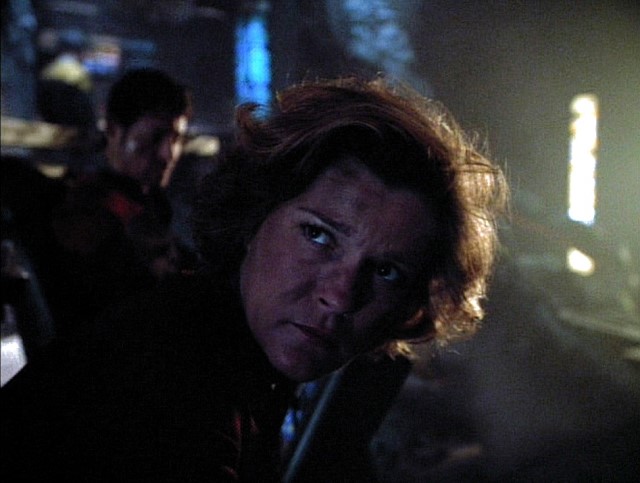
Kate Mulgrew as Captain Janeway in “Year of Hell”
Fuller then talked about the letdown when the “Year of Hell” season idea was rejected:
I remember Brannon going over to Rick’s office with all of this enthusiasm and coming back broken and his head hanging low and having to break it to the writing staff. We all felt like we were doing it, we are making great Star Trek. For him to come back and say we can’t and we can only do two episodes as opposed to twenty-two, it was heartbreaking. There was an interesting division between what Rick Berman wanted the show to be, which was episodic and for the syndicated audience, and how we wanted to be creative storytellers playing with the Star Trek toy box. “Year of Hell” is such a fascinating point in Voyager history.
As for why Deep Space Nine didn’t have the same struggle, Fuller explained that DS9’s showrunner, Ira Stephen Behr, “didn’t give a fuck what Rick Berman said.”
Ira was like, “I don’t care, this is what we are doing and if you don’t like what we are doing, fire me… If you are not behind it, then I suggest you find someone else to do my job.” He was kind of fearless about it. He was righteous creatively and knew that this was the right direction for Deep Space Nine.
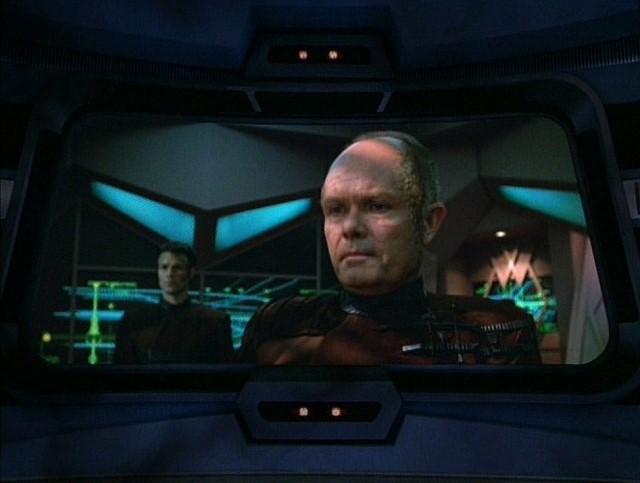
Kurtwood Smith as Annorax in “Year of Hell”
Listen to Fuller talk Voyager with the Treksperts
There is much more from Fuller about Voyager , so it is worth listening to the full episode. Inglorious Treksperts is available via Apple Podcasts , the Electric Now App , or your preferred place for podcasts. You can also listen to it below via Stitcher.
Keep up with all our stories involving Star Trek: Voyager here at TrekMovie.com .
Related Articles

Comics , DS9 , TNG , VOY
See B’Elanna Assimilated By Hugh To Fight Space Bugs In Preview Of ‘Star Trek: Defiant’ #15
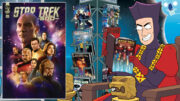
Comics , Star Trek Universe TV , Trek on TV
IDW Celebrating 500th Star Trek Comic With Big Era-Spanning Anthology
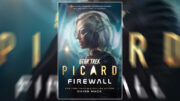
Books , Review , Star Trek: Picard , VOY
Review: Action-Packed ‘Star Trek: Picard: Firewall’ Reveals Seven’s Compelling Quest For Identity
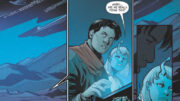
Comics , DS9 , VOY
All Eyes Are On Lieutenant Harry Kim In Preview Of ‘Star Trek’ #17
A full season Year of Hell would be interesting, only if there was no reset at the end of the season. Just like the reset at the end of the 2-parter.
Indeed the reset is the main reason why I don’t even think it’s a very good episode. UPN virtually telegraphed how it was ending (“Time’s up!”) in the Next Episode teaser.
Agreed. Year of Hell never happened to our characters — so why should I care? The two episodes are bad enough. A whole season of that would be unwatchable.
@plastics Only assuming there would be a reset button. I find it difficult to believe the show as Braga envisioned it would do that after a whole year and not have characters remember it all at the very least. The reset button was clearly there to appease Berman and probably UPN, wipe away any hint of a storyarc.
This is the first I’ve even heard of Braga actively pushing for more serialized storytelling. Prior accounts from Ron Moore seemed to portray Braga as being in lockstep with Berman. (Moore specifically felt betrayed by this during the brief time that he worked on VOY)
To defend Braga, Moore joined Voyager in Season 6, so by that point, I’m sure Braga would have been demoralized and acknowledged what would be approved and what wouldn’t.
@sam This is not the first time I’ve heard it mentioned that Year of Hell was meant to last longer, Braga has brought it up in the past.
He’s brought it up many times. And Moore was only briefly on the show toward the end of the run.
Well, “Dallas” did that and got away with it. (Pam waking up and finding Bobby in the shower. Entire previous season in which he was dead never happened.)
Younger people may not understand that reference!
Even Dallas watchers at the time, who were not too discerning, whined about it.
Hey! Some of us are moderately discerning. — I think I remember being disappointed with the, ‘it was all a dream’ shower scene because I wanted to know how they were going to get out of that. And what the fallout was going to be, and when it was ‘all a dream’, I got no satisfaction. — as other commenters have said about the year of hell, If it never happened, and they don’t learn anything and they don’t retain anything, then why do I care. And that’s a very disappointing and dissatisfying feeling.
There were many bad choices made in Voyager. I looked forward to them getting home (for the entire series!), and when they did, it just…ended. No epilogue, no anything. Very disappointing. Voyager was disappointing and pointless.
That was soo when Dallas jumped the shark…
@Ian Yes. We agree about the reset button being a critical factor to whether it would work.
It would have, however, if they were upfront about the plotline to the audience, I mean, if they openly made the plotline about Voyager trying to destroy the time machine in order to revert time to a pre destructive state, then it would be a watchable year.
We would all be hooked for a year wondering if and when Voyager would be able to destroy the time machine, and I think the audience would feel a sense of collective accomplishment when they succeeded after a year.
Albeit a bittersweet victory if there were no memories about what happened. Though a record of the events of “year of hell” could always be written in to the conclusion using some type scfi magic, like a subspace data stream that survived the revert, so the crew of Voyager might not remember the Year of Hell, but they could read about it in their own words, or see images. Just a thought….
I suspect the season would have concluded with something like ENT “Dead Stop,” where the ship gets repaired or even improved by advanced technology.
I would think that the very existence of the time weapon and the idea that Annorax was repeatedly altering the timeline would sufficiently predict and reveal to the audience that this was probably all going to be undone. Start killing off main characters, permanently wipe out Voyager’s Warp Drive at some point… I think Trek audiences are smart enough to go, “Hmmm.” ;)
Just my two cents.
Great ideas start with a thought….Now how did the borg evolve? Cellular Automata maybe?
Eh, I would have been fine with a rewind button, if that was what the crew set out to do. Like if fe. after half a season they had lost so much, so many people that they decided the only way to fix this is to make it all go away, even if we lose our memories of it, and then have them work the rest of the season to accomplish that.
I think it might have worked better if it were done in the final season.
I’m so glad you wrote this, Zaid. You’re absolutely right.
I think it shows Fuller’s deficiencies as a writer if he thinks you can gave a whole season only for the reset button to be hit at the end. At least Timeless had alternate Harry send a message back.
The more I read of Fuller, the more I think he’s a bit of a hack, who got lucky a couple of times early on and is dining out on that for his whole career. It explains why Discovery is such a mess.
Yeah I have to agree. I was bitterly disapointed with the reset button at the end of Year of Hell. I would have LOVED a season-long year of hell arc. But ending it with a reset button would have been terrible.
Good discussion here.
I didn’t mind the reset button after a two-parter, and I might have even enjoyed the situation running a few more episodes, but not for an entire season. It would probably have lost me and many others in the audience.
Whenever I hear this kind of either/or, I think about Farscape which was able to land multipart serialized episodes in the middle of a season and then revert to episodic with longer-term arcs. I’m not sure why this seems to be such a rare format, but that’s about as far as I would have been comfortable with for Voyager.
I mind it (in principle) because I’m a firm believer in the theory that a really good idea only works once. ST in general rarely seems to understand this.
Yesterday’s Enterprise was already Star Trek’s (and Berman Trek’s) “it happened but nobody really experienced it” time travel story. It’s no coincidence to me that no subsequent Berman Trek time travel story (except for some of the comedies) has rated as strongly, and certainly none of Berman Trek’s subsequent “reset” stories.
No one thing is ever an automatic deal-breaker, but Year of Hell ultimately did something that Berman Trek had already done on quite a few occasions, and they had already done it both better and worse. Not to mention UPN’s own advertising gave away how the second part was going to end.
For anything longer than a two-parter, I think they would definitely have needed to avoid the reset ending.
Interestingly, Farscape’s Season of Death (S3) was what came to mind while reading Fuller’s description of what Berman ultimately shot down.
There would have to be some sort of reset, you couldn’t leave voyager in the state it was.
The reset button ending for the two parter I think is a great dramatic irony and works really well thematically with what the story is about. Would that be as satisfying to reset a whole season? Probably not but I quite like it for the two parter ending.
I don’t mind the reset that much. In my head canon, since the Borg have some sort of temporal sixth sense, Seven becomes vaguely aware how much of a family or “collective” the Voyager crew is and is drawn a little closer to them. This being still early in her development.
Interesting division here between Ira Behrs and Brannon Braga’s reactions to Rick Berman. Would have been interesting to see Year of hell as a whole season.
Brannon was just out a few years out of college, and looked up to Rick, so he probably didn’t feel he could challenge him the way Ira could.
Imagine if Behr had run Voyager instead.
c d, uhh, no thanks. The talented writer folks on DS9 would not have gotten the opportunity to shine so brightly and bring their visions closer to fruition. I say closer because there was a lot they didn’t get to do, even with Behr, but he clearly made a huge dif, probably why DS9 is the only series that matters to me outside of the original 66-69 show.
maybe he could’ve run both and kicked berman off the staff!
Not a good idea. Behr would have had to split his attention between DS9 and VOY. Also he would have had to waste his time fighting with the network and DS9 most likely wouldn’t have been able to kind of fly below the radar and do what they did.
That’s why I said ‘imagine’. It did not appear to be possible in reality.
I find all of this rather typical and not surprising. Look fwd though to hearing the podcast though when there’s time.
At least Rick Berman’s Klingons were watchable! Honestly, I find it difficult to take Fuller’s criticism of anyone when he was fired from “his” Trek show for not giving it full attention.
Great point! He’s a mess of a show-runner and couldn’t plot his way out of his own house.
His career is mirroring Bob Orci’s…a lot a bling for a few years, then you find out he’s a bit nutty and his on-screen material is not all that good.
Interesting that Kurtzman, also with on-screen material not all that good, was able to pivot and take over all of Star Trek, especially after his failure at creating the Universal Dark Universe.
Kurtzman is kind of lowest-end form of Berman (who I thought was the lower end), mediocrity is king. The folks at Universal were smarter (slightly) than the CBS ones, they knew to torpedo that ship once it demonstrated its malformed keel was going to steer it into more and more trouble.
And yet, Rick give us a lot of years of good Star Trek. Fuller give us a crappy pilot with Klingons Orcs.
At least the actresses are being respected now
What did Berman do that was disrespectful? I’ve not heard any accusations?
Terry Farell has spoken out against Berman in multiple interviews, and Marina Sirtis and Patrick Stewart called him out on gender-based pay disparities. Those would be the two off the top of my head; the DS9 documentary and the fan wikis that cite recorded interviews are decent sources.
I posted a youtube link further down that goes much more in depth into Berman’s behavior, as well as his limitations as a creative force for Trek and his restrictions over more creative people. Doubt I could get away with posting it again in the same talkback.
He did not bring us a lot of years of good Trek. Middle-phase TNG with Mike Piller was when Rick was most in his element. That and his largely ignoring DS9 (and apparently allowing Behr to ignore him in turn).
Oh yeah I knew about that, he was a hard ass as far as being a show runner goes, hell he was probably a lot better than a lot of other producers at the time, he was a product of his era and I still think he did a solid job given how much work he had to do combined with the studio pressure.
I don’t think he ignored other creative forces either, just showed them why their ideas wouldn’t work for Trek, I agree though if they were going to take risks on a show it should’ve been Voyager not DS9. IMO Voyager should’ve been the darker show, DS9 should’ve remained the more Roddenberry’esque show because of where they were located.
Typical Disco fanboy reaction. Evreything that is not Disco is a rapist, misogynistic, bla bla bla.
For your information, Voyager put the firs FEMALE MAIN captain of a ship. It was not Disco.. it was VOYAGER under RICK BERMAN.
Yes, Marina earn less than the rest.. but guess what.. she was and still is a BAD ACTRESS.
And the issue with Terry was not about female or male, it was an issue of an actror or actress demanding more money from the studio and been rejacted.
Stop acussing and trying to ruin other ppl life with out any proof.
Maybe Voyager’s producers should have acted more like Ira Behr. It seems like the less involved Berman, the better the stories were.
I think VOY was the main reason Behr got away with what he did.
Behr has said as much. I don’t know if I read it somewhere or if he said it in What We Left Behind, but basically he’s of the opinion that once Voyager came along, no one paid attention to what DS9 was doing anymore, so they were able to get away with a lot of things.
Voyager was more scrutinized than DS9 from everyone. It was the number one show on a network rather than a syndicated show with no fixed time slot. Paramount and UPN had their say, so Berman was probably feeling that on top of his own preferences, good and bad, and as it’s been said, Braga appeasing him probably saved DS9 from his asserting more control. It also got him the job of co-creating Enterprise, a big notch on his resumé but another victim of network interference and the show where Rick Berman was then trying his hand at writing. Braga never had it easy after TNG.
Berman had his moments. The middle seasons of TNG were his, and those were outstanding. But he must have burnt out or something and just got stuck in “I want more of the same” pedestrian stories with Voyager and Enterprise.
This is a very interesting listen. I was actually very surprised by the overall tone of it, even though most of the purported facts agree with things that have been said before.
Renegade Cut channel — Berman Trek
https://www.youtube.com/watch?v=NeSz2gW8IsE
I always thought Michael Pillar had more of a hand in the middle seasons of TNG than Berman.
Creatively speaking, I think he did.
Berman had more authority, at the end of the day his was the final word, the combination of a good producer like Berman combined with a gun writers room and Pillar was a match made in heaven. Unfortunately Star Trek hasn’t been good since Season 4 of Enterprise
Berman’s input on those middle season (overrated IMO) was still mostly negative, writing on BROTHERS, making sure the music was creatively neutered and vetoing risky choices (Frakes wanted to have a male actor play opposite him in the Melinda Culea single-sex-race episode.)
Sounds like the Zindi storyline which I think ruined any possibility of Enterprise actually being an epic series. Just got tired of it dragging on and on and on….
Now, if that had been the Earth/Romulan War instead of the never-mentioned-before and mentioned only once since Xindi, we might have had something.
They were leading to that… Had they stuck around. According to Manny Coto.
That is not a common take on season 3 of Enterprise. The general consensus is that season 3 was a large improvement.
Seasons 3 and 4 of Enterprise were great, seasons 1 and 2 were good, they were probably more solid than TNG’s first 2 seasons.
No argument from me regarding S1 & 2 of Enterprise vs TNG’s 1 & 2. But I did like Enterprise from the start. Never warmed up to Bakula, however.
I must’ve been one of the few that liked him all the way through, it was an interesting character arc from naive explorer to troubled military hero then back to a blend of warrior/leader/explorer by Season 4.
I like what they did with the character. But I never like Bakula in the role. He always seemed forced to me. He never felt natural. He felt like he was acting.
Ehhh, agree to disagree I guess. I liked him as much as all the other Captains, Pike, Picard, Sisko, Janeway, Gerogiou.
Fair enough. I didn’t mind the character. In fact, I liked the character. Just felt that Bakula was not right for the role. Conversely, I never liked the Picard character. But Stewart held massive charisma and played the part brilliantly.
Xindi, not Zindi
Looking back, to the chagrin of the writers, based on the two episodes in question I am glad they didn’t get the go ahead to do the 22 episode Year of Hell story arc – although I have to admit, maybe the writers could have come up with some really great stories. We shall never know. Considering Fuller was one of the leads in creating Discovery, it’s not surprising that S1 was a serialized Klingon War year-long story arc. If Fuller was never brought on for Disco, I wonder if there ever was discussion of making Discovery episodic? In the end, fans now have multiple series to watch and it looks like SNW will be more episodic so I guess everything is turning out just fine, but I am sure they could have saved themselves a lot of heartache.
The way I heard it was that Discovery was never thought of being episodic, but more like an anthology series where every year there’d be a different crew or different part of Trek being focused on.
That was Fuller’s take on it. Different centuries, different crews.
and I believe fuller wanted to have uniforms more in keeping with TOS, so the visual change wasn’t rly his idea? I don’t know if it would’ve looked like SNW or not but it’s interesting to ponder.
These guys were amazing. Writing 22 episodes each Season!? That must be Hell! Very talented what they did with Voyager. I enjoyed the show very much. Timeless and Blink of an Eye are my favorite episodes.
Ahem, 26 episodes. :)
And this is what it has come to. People being impressed with what used to be the norm. It’s like thinking if a staring pitcher goes 5 innings and gives up 3 runs today it’s a “good outing”. When 30 years ago it would have been seen as not very good.
The high episode count is one of the main reasons for a lot of frustratingly average to mediocre episodes.
That has been proved to not be the case. There are a LOT of short season shows out there that are not very good in ANY episode. Most that I have encountered in fact.
And yet there are a lot of such shows that are consistently good. In fact I don’t know of any series in which a shorter season didn’t benefit the production.
I also don’t know of many FX-heavy genre shows that performed consistently at 22-plus episodes/season.
Farscape and Buffy both managed it, after a rocky couple of seasons. I don’t think BSG ever did, even at 20 eps (its 13-ep 1st season will always be the strongest).
And Star Trek? Outside of TOS season 1, not a change. For Berman Trek, the middle seasons of TNG and MAYBE DS9 come the closest, but still with plenty of weak episodes every season.
As for VOY and ENT, forget it. You were probably lucky if you found 12 good VOY episodes out of 24. Same with most of ENT, same with early/late TNG, and even very early DS9.
I’d say the Stargate shows did consistently well with having at least 20 episode seasons and those were especially FX heavy series.
Long seasons of episodic shows will always produce dog episodes. But shortening the season doesn’t help. In fact short season story arcs are HEAVILY relying on the story arc. They are essentially one giant episode. If that one story doesn’t work, then the entire season sucks. Perfect example… Star Trek Discovery. And I have seen some Netflix originals that were pretty darn bad from the beginning. And I’ve some others that were interesting. The fact is, short seasons do not increase the odds of good shows or even episodes. At all.
Star Trek has WAY too many “dog” episodes. When up to half a season (or more) can be dog episodes, its’ a problem. Having to churn out 26 episodes has rarely worked for ST; they’ve proven time and again they can’t do it. The writers’ room needs time to fracking breathe between coming up with stories — and without being told they’ve used up their seasons’ budget in two episodes and everything else has to be bottle shows.
Whether episode count encourages or discourages serialization is neither here nor there. So what if the overall arc doesn’t work? That’s going to blow the whole season no matter how many non-arc episodes you have. Yours sounds like an argument for not taking any risk at all (Safe Trek). STD’s a bad example because they’ve either got too many people in charge or just bad people (one of the two). There is nothing to show that giving them more episodes would produce better results when they can’t even manage what they have.
TOS didn’t have a lot of dog episodes until season 3. In fact, their good to bad ratio was pretty high. Do not confuse this with saying there were none in the first two seasons. Just saying the ratio was good. TNG is the show that had a lot of dog episodes. They did have some that shined but the majority were mediocre to bad.
I’m not saying don’t take chances. The concept of Secret Hideout to do different genres of Trek as well as the short Treks is a good idea and in theory should encourage new ideas. But in three seasons of short season shows they have not fared very well at all.
My point was not that traditional longer seasons will give you good shows. Only that shortening the season does not guarantee the shows will be good. It doesn’t even increase the chances any.
Where was Jeri Taylor during all of this? Wasn’t she still technically the showrunner in season 4?
I thought she was being mildly steamrollered out to accommodate Braga, though it was peddled as an early retirement. Hard for me to feel sympathy for her, I think that even for what she brought to the show in terms of female perspective, she still harmed trek with her cramming meat-eating throwaways into scripts and playing it safe and non-edgy a la Berman. She even helped trash GEN’s open by telling Berman you can’t go from one action scene directly to another, which scuttled the transition from century 23 to century 24 and instead landed us the lame boating scene.
honestly I consider myself an intersectional feminist and a lot of the opinions she pushed were pretty regressive, even back then. like the mother who tells you a short skirt is “inviting trouble”.
Kaitlyn, I was trying to be polite and not knock her too hard, she did write THE OUTCAST. Personally (well personally/professionally) I have issues with her because I wound up having to pitch to her instead of Piller when something came up with GR on TNG and I think she didn’t know her stuff yet (12/90.) Even the pitch I made that Ron Moore defended and championed (when the other guy in the room stayed quiet) just got ‘picard wouldn’t do that’ from her, without much in the way of elucidation.
that sucks, I’m sorry you had that experience. Also personally I hate The Outcast lol. It was trying to be “the gay episode” but it ended up being about gender instead, and very clumsily so I might add. Honestly Profit and Lace was closer to a trans experience, and that’s ALSO awful, lol. Such gems in The Outcast as “there’s no gender neutral pronoun in English” (hello, “they”), or conversion therapy actually working and being defended by the main guest star at the end.
Hey, on a series where SYMBIOSIS was supposed to be their AIDS metaphor show, THE OUTCAST reads like CRIME AND PUNISHMENT! Very good point about the conversion therapy aspect, I guess I was swayed by the show doing a downer ending (about the only good takeaway on SYMBIOSIS as well, and my giving passes to un-good TREKs with downer endings goes all the way back to TOS and A PRIVATE LITTLE WAR.)
I guess I’m one of those odd fans who never love the Year of Hell story line and was happy it was only two episodes. People talk so much about this story and it definitely is an interesting one but I can only imagine how messy that story line would’ve felt by the end of the season with so many alterations. But maybe it would’ve came out great. I just didn’t want an entire season of the Krenim being the villains because no offense they weren’t exactly at the level of the Dominion either. I think I would’ve got tired of them fast.
That said I agree with pretty much everything else he said. The ball was dropped hard between Starfleet and the Maquis where people always point out Chakotay as an example. Not five minutes he’s made first officer he’s become loyal as a puppy. Realistically he can’t be battling Janeway every episode or have the Maquis take over the ship because they are on the other side of the galaxy. But there should’ve been MUCH conflict and tension in those relationships besides just Seska.
And yeah Voyager should’ve been more serialized but I don’t think its Berman alone who was against it as the network people were also very much against the idea and an executive from Paramount on the What We Left Behind documentary said just that. They didn’t want the shows serialized at all because hey were afraid of losings audiences every week. DS9 only got away with it because it wasn’t on UPN and was allowed more freedom than Voyager. But yes it became a MUCH better show because of it as well.
I enjoyed the episode but an entire season on that storyline is unnecessary.
“I just didn’t want an entire season of the Krenim being the villains because no offense they weren’t exactly at the level of the Dominion”
That’s the whole problem with VOY’s premise: *nothing* can be at the level of the Dominion, because the lone Federation ship would be outgunned. So all antagonists need to be technologically unsophisticated (the Kazon) or implausibly neutered or magically defeated (the Borg).
I really fear we’re going to see a repeat of this problem in DIS season three. Thousand-year old technology is not going to be a match for anything. Even the Battle of Agincourt and the longbow was only 700 years ago; how would longbows compare to Civil War or WWI technology, much less today’s?
“Even the Battle of Agincourt and the longbow was only 700 years ago; how would longbows compare to Civil War or WWI technology, much less today’s?”
This is a fascinating analogy and I have frequently brought up these past comparisons to illustrate why there are too many “anachronisms” particularly in the new series, yet we have to admit that there is no guarantee that history always progresses upwards. As for what is happening (or rather, has happened) 930 years in the future of Discovery, the more apt historical comparison may be the 500 years between the retreat of the falling Roman Empire from Britain, and the (re)unification of Anglosaxon kingdoms. If the Federation has fallen and the galaxy has entered a dark age (especially if the nadir has been reached close to the 31st century, as other, unimpeded excursions into the future seem to suggest), all bets are off.
That is one of the reasons why that far in the future has often been depicted as dystonian or where a society has fallen apart. That way writers don’t have to come up with what tech might be around in a 1000 years. That is an awfully long time….
That was my one real beef with Voyager. That the Maquis merged so very well in with the star fleet crew so very quickly. It reminded me of how quickly Burnham when from pariah to beloved crew member in just 3 episodes. They started off with a few problems but they faded out pretty darn fast. I would have thought that the bad feelings might have stuck around a little longer. Although to play devil’s advocate here a bit… If they did that story element might get pretty old pretty fast. And if they wanted to survive they would have HAD to work together. But it would have been nice if it took a little time for the Maquis crew to learn that lesson.
The Maquis were made up of former starfleet officers, that was made clear from when they first appear in STNG. They were only against the Federation because of the deal they struck with Cardassia. As soon as that disappear their no reason why wouldn’t integrate back into being good officers. Many many people in starfleet was against the deal as well.
The Year of Hell was a good opportunity for the Marquis side to come out again, as they fight the newly restored Krenim empire, greatly expanded even beyond Annorax wildest dreams. As they have to teach their non Marquis friends to be rebels an terrorists. That could open up a lot of storylines.
wow that thought is so good i may actually watch Hell straight through to think about the Maquis angle. More of a V-miniseries feel.
@david knowles That is a lovely idea. A bit like Kira teaching Damar her techniques, but giving much needed development to what was supposed to be a core element of Voyager. After season 2, apart from the odd reminder like Worst Case Scenario, Hunters or Shattered, they just dumped that aspect of Chakotay and Torres and certainly never bothered to develop any new recurring guests. Chakotay going rogue to stop Seska in Maneuvers and Suder’s untimely demise were basically the last vestiges.
Year of Hell is a awesome episode.
Just commenting to say that I can’t believe these post-games on Inglorious Treksperts podcast eps don’t go up sooner. It’s essential listening for pre-2009 Trek fans.
Despite these restrictions that Berman enforced, he did eventually relent and I would still have Berman era Trek over what Kurtzman is doing
I wouldn’t. I’ve seen enough Safe Trek for one lifetime. I’ve mostly lost faith in Kurtzman, but he’s still required to succeed the Berman stuff if his is to be the only Trek game in town.
I agree with you bro.
Sadly I agree with you as well Captain Neil. I don’t hate Kurtzman and support him but funny 20+ years later I still watch all the Berman shows no problem and still really enjoy them. In fact I’m watching a Voyager episode as I type this. Maybe future seasons will bring more interest in the Kurtzman shows but so far none of them has been a huge draw after watching them the first time.
Ironically maybe because they are probably too serialized (and not very strong serialized stories so far).
Funny I feel the same way about most of season one of Discovery so even though the local SciFi channel was showing Choose Your Pain this week,I was going to pass on it. I relented of course and surprisingly it was actually quite good as a standalone episode. Same thing happened regarding the music, there is a new YT posting of a violinist playing the themes from all 7 tv series. She got to Discovery and Picard and surprisingly I have a newfound appreciation for Russo’s two themes – I really liked hearing them! I could take or leave them before – this pandemic must be making me soft haha!
Yes I saw that violinist video here and commented on it. I’m not in love with the Discovery and Picard themes but as you said listening to her play them made you appreciate them more.
As for rewatching the new shows, yeah for me its really first season of Discovery I have the least interest in rewatching. I have watched a few in the last few years but I have zero drive to watch them, but mostly because I just felt very let down by season one in general. Season two does fare a little better for sure and I actually forgot I rewatched Brother just recently, the day we found out Pike was getting his own show. I was so excited over the announcement I wanted to watch his first introduction again and its still VERY good. But generally speaking outside of a few episodes I don’t really feel the need to rewatch anything although I will try and rewatch all of season 2 before season 3 starts. But I said that about season 1 before season 2 startes and I never did.
At this point in time, Fuller sounds downright anachronistic, a broken record from the past… I saw what Fuller’s vision of “serialized grimdark Trek” looks like in Discovery; I say NO THANK YOU to that and welcome back escapist episodic storytelling in Strange New Worlds!
Ironically Fuller answered his own question. Voyager was not allowed to be serialized and dark because DS9 was. Even back then Berman was trying to strike a balance for a diverse audience, as Kurtzman is (belatedly) now!
VS, I really think that this is the key point.
To every “Oh, wouldn’t that have been cool” sentiment, I’d like to point out that a grim or even grimdark endless loop was not the premise/concept for Voyager.
With so many fans calling out for a return to episodic Trek where it doesn’t take an entire season of darkness to get to the optimistic/aspirational conclusion of a storyarc, can we not see why Berman would have said, NO this is not within the format for this show, especially when our other Trek offering is leaning into that format.
Voyager was promised to fans as a premise to get out and see the new and strange and to get out of complex political and diplomatic stories.
Let’s step back and think how the Trek audience would have felt to have Voyager move to week after week of hell, while DS9 was in its final seasons.
Or, let’s think of what it would be like if they did something like that with Strange New Worlds a few seasons in.
Fortunately, one thing that has come out clearly from Goldsman and Kurtzman is that they know what the format, concept and premise for each show is. There have been times when I’ve winced and thought that they were too locked into “this is what you have to do in a serialized story structure”, but if they give the same commitment to maintaining an episodic foundation for SNW, I won’t complain.
You know I will say while I was genuinely excited to see what Fuller would do with Discovery, I think it probably would’ve been even darker if he stayed on. I appreciated Voyager because it WASN’T overly dark and cynical. And now thinking about it that’s why I didn’t love Year of Hell so much. Yes, as a two part episode, fine, but I don’t know if I want see that brutal future for 20 episodes either. I think that’s why Fuller liked it, its kind of what attracts him looking at all the work he’s been doing since he left Star Trek. And its good work, I like both Hannibal and American Gods, but I don’t need Trek that dark either.
DS9 was a darker show but it was never bleak or cold like how I felt Discovery was in season one and thank Kahless they did much less of that in season two. If Frakes is right about season 3 and its suppose to be more upbeat and optimistic then that’s a big positive but I’m still guessing its going to be a bit dark.
The year of hell was an amazing episode. There was even a indication that they were going to meet such an enemy through a previous episode involving Kes when she went through that whole bizzare time/age jumping phase who remembers that at the end she wants to write down what she remembers about her experience. However disappointingly that part was never used. The Krenem story was very interesting, so unusual, using time as an actual weapon, the time ship looked incredible. Temporal weapons and shielding all were cool. But I agree with most others here that a reset at the end of an entire season would just have made it all seem pointless. Avoid that and it could have been aswesome.
This post should be a wakeup call for those folks calling for the Pike series to be episodic.
VOY is the only failed Star Trek series. It had some impressive acting from Mulgrew, Ryan, and Picardo (and mediocre acting from everyone else); it broke ground with a female lead; and it did have some high-concept episodes after Ryan joined. But on the whole, it suffered from very poor writing, and the militantly episodic nature of the series was a huge reason why.
An episodic SNW risks creating this situation on steroids: a cast with real chemistry squandered on pointless forehead-of-the-weak aliens and simplistic, 40-minute, commercial-friendly plotlines. Hell, throw in some 1980s cliches like an endless parade of divorcee characters-of-the-week portrayed by celebrity guest stars. This is not the recipe for success in the second Golden Age of Television.
SNW needs to be serialized. The excellent casting will not save it otherwise.
SNW fail from the start, another precuel from the same guys that did Discovery and Picard.
I would assume that they’ve leavened their lesson, furthermore Goldsman even stated that events will follow characters from episode to episode
He said it will be less serialized than DS9, which is already more episodic than I think most fans are willing to acknowledge. It will almost DEFINITELY be less serialized than, say, Buffy.
Buffy was the first time I saw a show be serialized all season long. Although about the first half to 2/3 of the season were mainly stand alones that contained small elements of the season’s arc. Towards the end of the season it become all about the overall story. Enterprise kinda worked that way too. A lot of stand alone stories up front but they were more in line with the overall arc than Buffy was.
Buffy I believe illustrates the ideal balance for a serialized episodic television show.
Yes, and I think the Xindi arc worked pretty well, too. You just have to find a way for a stand alone episode that has an element of the overall arc in it. Good writers are able to do that.
“VOY is the only failed Star Trek series.”
Stopped reading after this.
Yeah… That didn’t earn much respect from me, either.
Yeah. There are other failed Star Trek series.
It’s not even reflective of reality. One can only take the assertion as a statement of River Temarc’s personal opinion.
ToS lasted 3 seasons before cancellation, and much of the last season is pretty bad (due to the change in showrunner). But it’s remembered for its success in syndication.
Voyager is the most streamed on Netflix globally. It’s ratings in first run on UPN, a marginal network at best, weren’t great. Now however, it’s outperforming other Trek offerings.
We hear of fans, including physicist and Trek science consultant Dr Erin MacDonald, who were brought to the franchise by Voyager. I’ve reported here that for a long while, it was our kids favourite and one of them still goes back to rewatch Voyager again and again.
So, despite the inconsistent commitment to its original concept and format, there is something about Voyager that really works for many people. It’s it’s own thing. It filled it’s own niche in the menu.
Perhaps it was never fully appreciated even by its own writers room, but these ‘if only’ stories from creatives and fans who still don’t understand that Voyager was and is one of the most successful Trek offerings, is getting tiresome.
Yes, getting very tiresome indeed.
I think it’s fair to say VOY was the weakest of the ST shows prior to Kurtzman Trek, by virtue of being the most derivative ST series overall. Might even have remained the weakest if Kurtzman Trek could have retained the consistency of STD’s first eleven episodes.
TOS is balanced by one having one of ST’s all-time strongest seasons in its first. Overall its balance of great to terrible is about equal with TNG. Whereass VOY is the show that offers the least of what we didn’t already have from TNG.
I don’t claim to account for how well it performs in streaming. Except I’m more likely to stream it just because I already own almost every other ST on physical media.
Enterprise was much weaker, in my opinion.
ENT at least tried to be different. It was the NASA version of Berman Trek.
VOY was like a diluted version of TNG’s finally phase, the kind of bizarre “high concept” sci-fi that characterized Braga’s and Taylor’s rising influence over TNG. Only without the TNG chemistry.
“ENT at least tried to be different.”
I think the premise was meant to be different, but the show failed to be different. In the end the vast majority of episodes could have been told on TNG or VOY with very few changes. That’s not different, that is same ol’ same ol’. VOY was diluted TNG. ENT was diluted VOY.
There’s no such thing as diluted VOY. Such a statement would require that VOY and ENT share characteristics in common with each other that neither shares with TNG (they don’t). You’re literally attempting to one-up what I said using my words.
However you’ve highlighted the core problem with Berman Trek, which is that everything’s a copy of a copy. VOY was just a vehicle for making TNG-styled episodes. ENT started out as a vehicle for making more TNG-styled episodes. Even DS9 was originally intended as a vehicle for making TNG-styled episodes.
And don’t forget… TNG was trying to copy the lightning in the bottle that TOS captured.
My response is Discovery season 1 & 2 and Picard. Strong evidence Secret Hideout seems to have a problem mapping out even a short season story arc. There is no reason to think SNW would be better off being serialized. And every reason to think it may be bad no matter which direction it goes because the same staff is running this show that is running the others.
I really want to be wrong because Mount was a shining star in STD S2.
Akiva Goldsman will be heavily involved with SNW so I am not hopeful. Even Mount, Romijn, and Peck may not be enough to save it.
Way too bold for Rick Berman. Berman weirdly didn’t like DS9, and so with Voyager and Enterprise we got “TNG incrementalism” types of series instead. So this bold and creative concept was NEVER to going to happen under him. The latter Berman area was disappointing, to say the least, and eventually went down the shitter with Enterprise and those awful two final TNG movies.
I know it’s filmed and won’t happen, but sounds like a good season of Discovery… 900 years in the future, like a caveman with rocks and a club going up against Stealth bombers.
this is why i quit voyager and ds9 is my favorite show… i was just telling my friend who has been watching ds9 with me for the last year… (we only have 8 to go) and explained the premise of voyager then after all that i say none of it really maters they just want to be tng.
I liked what he said about Behr. That he didn’t care what Berman said. Classic.
Yeah, that was refreshing.
Ronald D Moore was annoyed with Voyager for the same reasons. He felt it should have treated its premise more honestly. He wanted photon torpedoes and shuttle craft counted and checked, for example.
Thankfully, he got to do what he wanted to do with Voyager on Battlestar Galactica.
Yeah BSG is very much Moore’s answer to Voyager. There are so many similarities on a surface level, but changed up where it counts.
Starfleet and Marquis having to coexist is very much Adama and Roslin for the first half of the show. Equinox is Pegasus. Deaths are common and the ship getting progressively more damaged are things he wanted in Voyager too. It’s even about a ship(fleet) trying to get home to earth.
BSG is my favorite sci fi show of all time.
BSG was a mess especially season 3 and 4. Great mini series, good season 1, went rapidly down hill from their when they realise they didn’t plan out a story and just through random crap onto our screens.
“Instant Shuttle: just add water.” >:>}
I have said and will always maintain that Berman and Pillar duohandedly tried to kill the franchise!
Pillar saved Star Trek. Without him the franchise would not have survived another year. It was barely hanging on after season 2. Everyone involved agrees Pillar saved the franchise by making show about the characters and story and not just high concept plot.
Incidentally, high concept plot and underdeveloped characters are what held back Voyager and especially Enterprise.
What? Michael Piller turned the ship around for TNG in season 3. There’s just too many stupid comments on here lately.
What are you saying? Pillar literally saved the whole franchise after he joined TNG and turned the show around during season 3.
No they didn’t try to kill the franchise. Paramount as a company did. Voyager did perfectly fine. It lasted seven seasons! A show doesn’t go that many seasons without doing something right. But there were always signs that the creative juices were running dry all throughout Voyagers lifetime, with glimmers of goodness, interspersed with a lot of tired stuff done over and again since TNG. Piller was there with Berman in S1 and S2 and it was basically a continuation of where TNG left off in S7 of that show. Personally I enjoy Voyager. It’s sometimes just nice dip in and out of show without having to watch entire seasons in order to understand what’s going on. These were the days before catch up and internet streaming. If you missed an episode on TV then it could be weeks or months until you might’ve been able to find that episode again. DS9 didnt go overboard with serialized tv, it sort of pushed the boundaries for it’s time. It’s still an overall episodic series.
Star Trek has suffered for the last few decades with bad producers, Berman and Braga previously and Kurtzman now. Could you imagine how good Star Trek could be with someone who knew what they were doing? I dare to dream.
I understand this guy opinion as an expert writer that wanted to make a name for himself. But he forgets what Star Trek stands for & for why it is loved my its many fans: original ideas of Rodenberry and Rick Bergman. The show is about hope and a bright future for humanity. So, Im going to stand as Ira Behr: this is Star Trek, if you want something else then leave! Why do you think DS9 failed? because it wasn’t ST. And I believe many things think the same way about ST.
I don’t think ds9 failed, it’s the only post TOS show that didn’t fail.
And I think you’re going to confuse a lot of people by suggesting Berman had any decent original ideas in his head, let alone that fans loved them.
Well there we have it again, proof that we need different formats of Trek shows for different tastes.
Why does this thread bring out such pronouncements of ‘This Failed’ or ‘That failed’ from so many on this board as opposed to ‘That series never engaged me, but I get that it has its audience?’
I won’t look to you kmart for any openmindness about new Trek offerings.
I loved ToS as a gradeschooler when it was in first-run, and as a teen when it was in early syndication, but are at least half the episodes that I find mostly unwatchable now (and I’ve been trying because of the kids).
For me TNG, and the Berman-era shows in general revived my interest, and I happily watch them again and again, with the exception of Enterprise.
But pronouncements about overall success or failure based on personal preferences doesn’t make for a conversation.
TG47 not sure if this ruins your op of me but BEYOND for all its faults (and act 3 is one big fault) is still the closest I’ve been to being entertained by a TREK feature in three decades.
It was wise not to make that story into a season. It was interesting, but too depressing and not in keeping with the optimism otherwise seen in the show.
This is exactly why Voyager failed as a show in my opinion. I don’t hate the show, but I can’t watch it again because I am constantly reminded of all the wasted potential. Voyager starts off with a decent premise and then throws it overboard within the first few episodes.
Does half the crew (that we see, anyway) being Marquis even matter beyond the first few episodes? There never is any sort of power struggle, not even the slightest tension aboard the ship. If you start watching the show a few episodes in you might not even notice that this isn’t a regulation starfleet crew.
Are the resources actually scarce, as the characters claim? The only consequence we see is that the use of replicators is rationed. But still, the ship has enough energy to spare to have the holodecks running 24/7 to give us an unholy amount of awful holo episodes that move us even further away from the premise and tend to not even develop the characters in the slightest. The endless supply of shuttlecraft and torpedoes are obvious and often mentioned (rightfully so), but it goes beyond that. Hull plating, technical components, hell even crewmembers … are never gone for good. At the start of the next episode, the ship will look like fresh out of the drydock.
Why even bother with the premise of Voyager being isolated, low on energy and supplies, incorporating the enemy into its crew to even barely function, if none of that really matters and the show desperately tries to be a clone of TNG? Nothing that happens in Voyager has any consequences due to its strictly episodic format. A more serialized approach would have helped the show tremendously.
The Podcasts have no meaning to me as long has there seems to be No ReRuns Anywhere …
Where are the ReRuns
I personally dislike serializing a story for a whole season, that is why I am not a fan of the new Star Trek Discovery.
One thing I never understood about the Year of Hell-two-parter was that they pretty much ignored the fact that Kes warned them about these upcoming events. In the “Kes-time-jump-episode”, Janeway approachs her at the end, saying “Tell me more.”, yet in Year of Hell, they all act like they never heard of this. Did Annorax erased the Ocampas?? That would be the only explaination I could think of.
@startrick Real world explanation is that there was a Kes line in Year of Hell that ended up getting cut, not sure if it was actually filmed.
argh i hate details like that getting cut. it’s less bad when stuff is formatted for streaming – though they presumably know where they will cut when they sell it to TV broadcasters in a couple of years – but even that has weird things, like a few seconds of narek getting re-jailed cut in the finale :/
@Ian Thanks for this, I never heard of that before. I have a feeling it was disregarded because they feared the audience who missed the previous episode would have been confused or something. Too bad, though – I always found the two-parter confusing just because of that. I wondered what I did miss.
(…and I just realised that erasing the Ocampas from the timeline wouldn’t have helped matters. After all, without them, no reason for the Cartetaker to warp the Voyager into the Delta Quadrant.)
@StarTrick Of course it would not have been an issue if they’d done their original plan and had Year of Hell be the season 3 finale/season 4 premiere. Making Scorpion was a relatively last-minute decision.
Lost interest in voyager.
I have never been a big fan of Rick Berman. Compared to Gene Rodenberry, Berman just doesn’t get it. He seems to be a typical Hollywood stereotype who lacks the vision necessary for a show like Star Trek. Star Trek under his oversight had thousands of star systems and planets to explore yet he seemed to be stuck in a search for self in way too many episodes.
And in hindsight DS9 is a cult hit that is still thematically relevant and watchable today, while Voyager is overall unmemorable.
Then years later the new Battlestar Galactica did not just a year of hell but four, with the exact premise of lost in space must find home, and is one of the best sci-fi series made.
I think a full “Year of Hell” would’ve been great. Only perhaps without the temporal plotline? Just going through an area of space that’s inhabited by “space pirate” types and being continuously attacked. Or if the temporal reset button plot was included, then later episodes could reveal “impossible” consequences to those events like Yesterday’s Enterprise did with Tasha Yar/Sela. It’s a shame because the last shot of part 2 revealed Annorax was still working on Temporal Mechanics. Could’ve been some good follow-up stories either way.
That was an extreme idea being considered there!
Having suffered through Season 3 of Enterprise I am glad a season long arc of Year of Hell was not green lit. I hate to think of the amazing single and double episode stories that would have been cut to make way for such a season. That said, it would have been good to have a 3 or 4 episode story arc as Year of Hell was ripe with potential. A season long story arc is not my idea of Trek as it is the diversity of stories that is a key element of TV Trek’s greatness.
Hm…? If you ask me, Enterprise’s 3rd season still had plenty of stand-alone episodes. DS9 wasn’t much different in that regard, so I don’t think it would have changed Voyager’s episodic approach as much as some people might fear.
I think what would have changed the most would be the impression that the Voyager is really all alone there, and the Delta Quadrant is a dangerous place. They have to think twice how to use all available ressources. The stakes would have been higher.
In the actual show you never really got the impression that the stakes are high, ressources are low – or that they were in any real danger – it just felt like TNG. “Set a course for starbase 177. They not only have coffee but also new crewmembers, new shuttles, new photon torpedos. We will be fine!”
I agree Richard Lutz.
2 episodes was a bit too little given the Year of Hell had been foreshadowed the previous season. A whole season would have lost me though.
Some seem to forget that what we got on discovery was Not what fuller would have done.
He left before and the treatment burnett mentioned sounded a lot different.
Discoverys wrong doings are not Fullers fault.
Unfortunately I think most fans like to gripe about the conceptual/pre-production design work (especially the Klingons) and just park there. So that everything bad = must be Fuller’s doing while everything good = must have been done afterward by the revolving hired-then-fired creative teams that “saved” the show.
I mean, I’ve even heard Nick Meyer’s contributions to the GOOD classic movies (you know, the even ones) trivialized, citing peoples’ idle speculation about whatever happened to him and his work (we don’t even know) on STD.
Nevermind that STD has been without a real identity since Fuller left, or that Kurtzman Trek in general (no matter who’s in the writing room) seems perpetually unable to block a fully-realized and meaningful story ever since 2/3 the way through STD’s season 1.
ST was ready for an overall retroactive facelift after DS9 (which I think at least benefited from being styled after TNG just because so many fans were already having trouble accepting it). And TNG’s by-then-tiresome “Ka-Pa-Cha!” Klingons were also already due for a retroactive facelift in my opinion.
Yeah its like blaming Alex Kurtzman for all the Writing of all of NeoTrek. People seem to not even know that there are a ton of writers included in these Shows.
Fuller has ruined shows wherever he’s gone — he a disorganized mess that always blows up the production budget. And he couldn’t plot his way out of his own house. His horrid Klingons re-design just stunk, and his handpicked special effects company had to be replaced to to subpar work, causing a 6 month delay. He creates good atmospherics, but that’s about it. He should go work on Westworld at HBO — that’s the perfect show for him — great looking, but makes no sense.
Thank goodness Moonvies stepped in with some adult supervision (Not that Moonvies was a good guy of course)
Methusalem. Thing is, your claims are pure speculation. You cant know the Les monves stepped in. Or that fullers “handpicked” vfx company created bad work. Or even if Fuller was fired. He said he left…. because he wasnt able to do what he wanted to do.
But still you judge, based on purely speculative claims.
And thats something so odd with fandom. This you jump on the train because of some stuff someone said and IT suits your needs for gossip. Regardless if true or Not.
Midnights Edge Syndrom
One thing is for certain though, Fuller seems to have trouble working within a studio system. He needs to have full control otherwise he just gets dismissed. He seems a bit egotistical in that regard. While his Hannibal and Dead Like Me were very good shows, I think him not being consistent in the business is not a good sign in general.
What became Discovery’s spore drive engineering annex was originally supposed to be a photon torpedo loading bay (!??) built at great expense. This and other preproduction decisions were taken fairly early on, so Fuller can fairly be critiqued for them.
Production Designer Tamara Deverell who was brought on board 4 episodes into season 1 has talked about being really surprised by the size of the bridge and how she needed to come up with ways to repurpose some of the original designs.
Whats the Problem with a Torpedo loading bay? I dont see the point. We dont know what excactly it would have been.
we only got what we got and dont know what could have been. So citisizing Fuller for something we dont know what it would have become is fairly odd.
We saw a version of the torpedo loading bay in Star Trek 2009.
You can seen the relationship in the design. The wall that held spore canisters was likely intended for munitions. Tamara Deverell made it clear that there was just a modest redressing of the set.
I found it bizarre to see 23rd century ships with manually loaded torpedoes. While I like thhe submarine warfare of older Trek, manual loading (except as a specialized adaptation or retrofit) in an age of robotics is darned anachronistic.
What we saw in 2009 was not a version of Fullers Torpedo loading bay. It was just a Torpedo loading bay.
I don’t think a season would have worked. Enterprise did this with the Xindi, and that was a failure. Today it makes more sense, but in the 90s?
I miss Voyager.
dont be sad. They will back back in some hundred years!
A year of hell series, or half series would have been awesome. I’m watching the DVDs now. And seeing them get attacked and 10 minutes later have a shiny new ship seems implausible.
There should have been Mark’s on the walls and carpets. Panels missing, damaged and not replaced. Broken doors. Everything none essential cosmetic should not have been replaced. The ship should have become utilitarian in nature.
So the year of hell series would have really shown voyager off as a starship very much far from home.
Voyager was great, but there was a lot that wasn’t right. The marquee members were too quick to join the crew. The ship remained too shiny and new. Where did all the shuttle craft and torpedoes come from? Why wasn’t there any damage marks on the ship’s hull?
It should have been so much better.
Don’t feel too bad for Braga. He got to screw Jeri Ryan.
OMG, seriously?? I never understood why fans needed to give him shit over that.
Same reason they read tabloid. They want to feel better about theire own lifes reading shit about others and judging the hell out of it.
DS9 was my least favorite of the Treks. It was ok, but no TNG, Voyager, or Enterprise. I am very happy with mini stories being done in 2 episodes. Maybe they could be stretched to a third episode, but after that I want a different thread. I’m SO glad they didn’t do the whole season on Year of Hell.
Doesn’t surprise me that Rick Berman was the biggest issue with Voyager. I wish Braga stood up to Berman the way Behr did. Voyager really could’ve been a great show.
Berman would’ve just demoted him, or had him let go. Never a fan of Braga’s nutty “high concept” sci-fi, but I think I’ve more sympathy for him now.
Rick Berman is an idiot if he didn’t like deep space 9. It ended up being one of the best of trek
In your view Ryan.
There are a lot of us here who like and appreciate DS9, but don’t agree that is the unequivocal best. Certainly most would agree it has among the best moments, but so do other series.
It’s also a matter of balance in Trek offerings though.
Both Voyager and Enterprise were conceived as responses for those fans who wanted to have ships that got out and explored, that bumped into new species and phenomena.
Many fans were weary of diplomacy, long mysteries (Odo, Dominion) and political arcs. They wanted less serialization. They wanted captains and crews who met situations beyond coping with in a civil Starfleet way. Once TNG was shifting to cinematic features, the chorus for “let’s get out there” became more shrill.
Presently, we see Strange New Worlds announced as an episodic show to balance the heavy serialization of Discovery and Picard. However, if Secret Hideout had started with an episodic series, there would have been derision from those who see serialized drama as the apex.
Since he created the thing he can’t hate it that much lol.
And what he was saying at the time WAS very true. Star Trek never really focused on war before. Yes, plenty of TALK about past wars but on the shows themselves it never went beyond showing a conflict over an episode or two and were usually wrapped up after that. DS9 changed the game in so many ways and why Discovery first season could be about the Klingon war.
And I think he was against serialization because frankly many producers, writers, network executives were at the time. Yeah it was starting to be done more in a few places and of course soap operas were always a given but for old school TV people it was still something you just don’t do because all it took was for someone to miss one episode and if they felt too lost they were probably not bothering the week after that. We just live in a very different time today. You don’t have to worry about missing episodes to anything anymore. But back then it was a risk.
But then of course by the time Enterprise came on the air things were changing more. Berman and Braga were the ones who decided to do a season long Xindi arc in third season. But that was nearly ten years later after DS9 first did it so clearly he was coming around to it and actually saw just what it did for DS9.
The funny thing now is if they remade Voyager that show wouldn’t get green lit UNLESS it was serialized from the start. It’s crazy on the 180 TV has done on this.
Voyager was always better than DS9. And more successful. Serialized storytelling is one of the things that are ruining Star Trek. Remember that God awful last part of Enterprise? I kept waiting for it to be over so it could return to some good episodic adventure, but it never did. The Xindi arc ended and the show was cancelled. So much more could have been said and done with that last season, so many adventures. Instead they beat that one story to death episode after episode, week after week. Berman was proven right in the end. While there was always an overall progression to the best Trek, it always worked best as an episodic show. If this week’s story or approach is not your cup of tea, no worries, there’s always next week. No need to be locked in to a particular concept for and entire season run. TOS and TNG are still the most popular, followed by Voyager. That says something. Most Trek fans never wanted it to be a space soap opera. Leave that to another show. Space Above and Beyond or something……..
As an aside,for the same reason, the comics industry is suffering. Not enough one-shot or short issue (3-6 installments) runs. They are obsessed with “arcs” that just go on, and on and on…..until they run out of gas. Or get cancelled. Sound familiar?
You Do know enterprise did Not ended with the xindi arc…. Right?
Just once I would’ve loved for Kurtwood to call one of his officers a Dunb-ass. Lol!
Voyager could have been so much more if Berman had been tossed aside. He was the worst thing about the 80’s-90’s Star Trek.
Pure speculation. could have been worse too… but we got what we got.
And as trek from the 80-90 is what defined trek…. Do you actually like trek? There is Not much more than what berman gave is.
I’ll bite this one.
I absolutely love ST. I love Classic Trek, I love Roddenberry Trek (especially The Motion Picture), I love Bennett~Meyer Trek (particularly Meyer’s Nautical Trek). I like Kelvin Trek (and even love the first movie).
I don’t love (or even “especially” like) Kurtzman Trek, so far, save for a few of the Short Treks and maybe the first 3/4 of STD season 1.
And I’ll never love Berman Trek, unless I can have my TNG (see Roddenberry Trek) and DS9 a-la-cart.
I don’t acknowledge Berman Trek as having any particular “authority” over how to do ST — any more so than any other version of ST I have just named. (And if you tell me some rule of quantity determines otherwise, I’m not listening).
“Really, seriously? We went from Nautical Trek to this? Homogenized Trek is to be the future from now on?” That became the frustrated experience over the years with Berman Trek.
I don’t mind being told I’m not a “real” fan because I don’t love Berman Trek. At that point I’ll choose to take it as a compliment.
Its just that basicly TNG,ds9, voy anf ent plus the TNG movies are berman trek. And thats the majority of trek.
Its not about being a real fan or not. It should never be about that. Every fan is a real fan.
Personally I have no big opinion on berman himself. I just think that under his eyes trek was defined and shaped the most.
Yeah only us fans makes these odd distinctions. For most people Star Trek is just Star Trek. I don’t know anyone personally who could tell you the difference since they only watched some of the shows or movies. They may know them by the characters and show names but that’s about it.
I don’t care who made what, I only care what I enjoy and I enjoy most of it. A lot of it comes from Berman but some of it doesn’t, who cares? I don’t love the new stuff that much now but I didn’t love all the old stuff that much in the beginning either, especially TNG and DS9, now my top two favorite shows.
Trek was defined under Berman the most for sure, but Star Trek will continue to grow and evolve, its never going to be about one show runner or director anyway. It’s all one beautiful universe (or multi-verse) and I’m happy all the characters and stories from the past moves on with new iterations and story tellers which is why I still like Picard even if the execution was a bit off (but just so happy to see this era and characters again) and I hope is done well with SNW. That’s what Berman did for a very long time, but as we are seeing now others are doing it. How successful it will be will be up in the air for awhile, but the beauty is there is SO MUCH Star Trek today there is plenty of something for everyone to enjoy.
A REAL fan just cares about Star Trek, period, and don’t spend time putting people in boxes of what Trek they like, which is sadly done here allll the fucking time.
I love nearly all of them and I appreciate Voyager so much more today than I did when it started. We’re all talking about the show like it just came on yesterday and clearly still has a big fanbase 25 years later that its still talked about, shown everywhere and plenty of cast events, specials and merchandise still being made. When the top 7 of the 10 most rewatched episodes on Netflix are from Voyager 20+ years later, it’s doing something right. ;)
But yeah it’s not everyone’s cup of black coffee either and completely understandable.
Rich berman is the reason Voyager was taken off.a big headed arse who was and is full of himself.he put great actors out if work,crew,series back workers.he needs to be taken down from anything in making a series.we fans of Voyager knew there was more material that could be in the show.but not with a Hitler that wants to destroy something that he doesn’t want to do.hateful hateful little man
Voyager ran 7 years – the same as TNG or DS9.
In fact, I believe that the expectation of a 7 year run was built into the contractual agreements of the creatives.
While I can agree that Voyager had the potential for a longer run, railing at Berman seems misplaced.
Paramount/UPN had its own bigger strategy and Voyager was sacrificed for that from the beginning, with a premature launch through significant meddling from network executives.
Berman would have had to have made a compelling strategic case to UPN to keep it going. Voyager’s ratings on UPN were not great (however much of the problem was UPN itself and it’s sluggish rollout beyond major metropolitan areas.
So, while I appreciate the irony of Voyager’s success in streaming (much like ToS’s in syndication), blaming Berman for not fighting Paramount to get an 8th season for Voyager when Roddenberry couldn’t keep ToS on network television for more than 3 seems unfair (and the tone of your post very certainly is).
What I love about you TG47 is how balanced you are about all of this, for every show. I wish I could be that way lol.
But I agree with your view about Voyager completely. It had its problems but that was mostly being on a network that wanted things done a certain way like all networks did. VOY and ENT were lesser shows than TNG and DS9 but because the demands were harder on them being flagships of a new network that never really thrived. It says a lot when it was basically gone a year after Enterprise left and barely last longer than a decade. I imagine if Voyager was syndicated it would’ve had more freedoms to do other things. I’m not saying it would’ve been better, but it could’ve been a different show in many ways UPN clearly was not allowing it to be.
Thanks for the cheer Tiger2.
I really do find things to like about all of the shows, but neither will I hold any of them up as perfect, or the ideal for every audience.
What I can say is more Trek has held more of my attention over more than five decades than anything else. So, all of the series have more than earned my respect.
I agree with that. I love all the Star Trek shows. The newer ones, not so much, but they are still very young and I’m still very excited to see where they go next.
I said this before but I treat all of Star Trek like my children, some are just better behaved than others. ;)
And its weird I love Voyager more today than I did back when it was airing. I always loved Voyager, but yes not at the level I do TNG, TOS or DS9.
Year of Hell Stardate: 51268.4 - 51252.3 Original Airdate: 5 + 12 November 1997
<Back to the episode listing
Star Trek ® is copyright of CBS Studios Inc . Copyright © 1966, Present. The Star Trek web pages on this site are for educational and entertainment purposes only. All other copyrights property of their respective holders.

10 Best Star Trek: Voyager Episodes, Ranked

Your changes have been saved
Email Is sent
Please verify your email address.
You’ve reached your account maximum for followed topics.
Everything about Star Trek: Voyager was a risk when the series debuted following the end of Star Trek: The Next Generation , an incredibly popular series. The flagship show of the nascent United Paramount Network, Captain Kathryn Janeway and her crew faced familiar struggles from fans. Their story, however, took the Star Trek universe to a new part of the galaxy. The Delta Quadrant hosted never-before-seen alien species and was the backyard of the Borg.
Through syndication and wide streaming access, Star Trek: Voyager is now regarded as a classic of this universe's second wave. Voyager finished its journey strong, and the addition of Seven of Nine -- a human drone rescued from the Borg collective -- changed the series for the better. Now in the third wave of the franchise, Seven of Nine is the captain of the USS Enterprise-G, and Janeway is now a Vice Admiral leading the young cadets of Star Trek: Prodigy . Below are the episodes that best showcase why Voyager is among Star Trek's most beloved series
10 'Distant Origin' Is the Kind of Social Allegory Star Trek Does Best
Voyager is caught up in a tale about scientific truth, immigration and acceptance, how did star trek: voyager become a tv series.
Star Trek: Voyager debuted after The Next Generation ended its historic run, but Captain Janeway's series was in development long before then.
The only episode on this list before Seven of Nine joined the crew, "Distant Origin" is representative of what Star Trek does best . It's a high-concept story about scientific exploration and the ways entrenched powers oppress the truth and those who seem "lesser" than them . The Voth are a superior race of intelligent beings that evolved tens of millions of years in Earth's past and took the stars.
The titular theory threatens the social order of the Voth, and the idea that they have a right to oppress others because they are "the first race" in their sector of space. Ironically, the episode spends much of its time away from the USS Voyager. It's not really their story, but rather the story of the Voth scientist facing punishment for violating "doctrine."
9 'Dark Frontier' Reveals Seven of Nine's Human Past and Importance to the Borg
This episode ties voyager to first contact and the next generation.
A feature-length two-part episode, "Dark Frontier" brings the Borg Queen to television for the first time since the character was created for Star Trek: First Contact . It also reveals how Annika Hansen and her parents came to be assimilated by the Borg. Part-heist story and part "mythology episode," which gives viewers a courtside view to how the Borg assimilate a species.
The USS Voyager plans to steal some Borg technology to help them get to Earth more quickly, but it's trap to recapture Seven of Nine. The Borg Queen reveals that Seven of Nine was "allowed" to leave the collective, and her recapture is meant to make her the human face of the Borg invasion of Earth, just as Locutus (Jean-Luc Picard) and Vox (Jack Crusher) were meant to be. In rescuing Seven of Nine, Captain Kathryn Janeway proves herself to be the Borg's biggest threat .
8 'Drone' Is a Perfect Blend of Star Trek Weirdness and Character Study
A high-concept voyager episode with a deeply emotional ending.
In "Drone," the holographic Doctor and Seven of Nine have a baby, of sorts. Originally bound to sickbay and the holodecks, the Doctor was given a 29th Century mobile emitter by Henry Starling. A transporter accident blends Borg "nanoprobes" with this technology creating a 29th Century Borg drone, just without a collective. He names himself "One," becoming something like a son to Seven of Nine.
One accidentally signals the Borg collective, which shows up to assimilate him and the USS Voyager. One is curious about his people, yet he's fully an individual . First, he helps the crew fight the Borg cube, but even his 29th Century know-how can't match the cube's raw firepower. He sacrifices himself in truly epic fashion, saving the ship but breaking Seven of Nine's heart .
7 'Endgame' Is the Epic Series Finale for Voyager and the Borg
Janeway brings the crew home and defeats star trek's worst enemy, star trek: voyager actor weighs in on controversial tuvix debate.
Star Trek: Voyager's Tuvix actor Tom Wright shares his opinion on whether Janeway made the right decision about his character's fate.
While everyone from fans to some of the cast lament the series finale of Star Trek: Voyager didn't show the ship actually arriving on Earth, it's still a fantastic finale. It begins many years after the previous episode, when the USS Voyager does arrive on Earth. Now a Vice Admiral, Janeway travels back in time with a plan to bring the ship and immobilize the Borg. All it will cost her is her life.
The beginning of the finale shows a version of the crew's future, though not everyone made it to Earth. The Elder Janeway's plan is ambitious and takes the ship right into the heart of the Borg society. While her younger counterpart gets her ship home, the elder Janeway has a final showdown with the Borg Queen. "Endgame" is full of spectacle appropriate for a series finale, while not sacrificing attention on the characters fans loved .
6 'Year of Hell' Is an Epic Two-Part Struggle for Survival
A year-long episode of star trek: voyager was almost a whole season.
The "Year of Hell" is a two-part episode that, according to Star Trek Voyager: A Celebration , could've lasted for an entire season. The episode centers on a new species called the Kremin, who developed a "timeship" that could erase entire civilizations from history. The captain and lead scientist, Annorax , continues these temporal incursions and sets his sights on the USS Voyager.
The two-part episode takes place over an entire year, with the USS Voyager and the Krenim engaging in a running war. The ship is damaged, the crew is battered and demoralized. The resolution resets the series' status quo. Had the fallout from this taken a full season, the show might have gotten too dark. This two-part epic is just enough "hell" to make this episode a classic instead of "the one where the season started to go downhill." The Krenim and the idea of the "Year of Hell" was mentioned in Season 3's "Before and After," when Kes visited a possible future.
5 'Timeless' Is About the Death and Resurrection of the USS Voyager
The survivors of the uss voyager break the prime directive to rewrite history.
Time travel is a Star Trek staple , and Voyager featured a lot of it. In "Timeless," select members of the crew survive after the USS Voyager is destroyed. The episode was directed by LeVar Burton who also appeared as Captain Geordi La Forge from the alternate future. As the surviving crew tries to change the past, La Forge has to stop them from violating the "Temporal Prime Directive."
Along with being a dark look at the future, the episode is emotionally heavy, especially for Chakotay and Harry Kim. The latter blames himself for the accident that destroyed the ship. He is determined to fix that mistake. Even though he's successful, the episode ends on a down note as the elder Kim sends a message to his younger self.
4 'Message In a Bottle' Brings Voyager One Step Closer to Home
The emergency medical holograms prove their mettle as starfleet officers, star trek: prodigy is the last hope for janeway and chakotay shippers.
Star Trek: Prodigy brought Voyager characters Kathryn Janeway and Chakotay back into their story and there is a chance for the romance fans never got.
The Romulans appear in "Message In a Bottle," one of the rare times a classic Star Trek alien species appears in Voyager other than the crew. The ship discovers a massive sensor array, and Seven of Nine sends the Doctor to another Starfleet vessel on the edge of Federation space. The array is the bottle, and he is the message. However, the ship is experimental and has been overtaken by Romulans.
The Doctor meets the Mark II version of the Emergency Medical Hologram used by Starfleet, and the irascible pair have to take on the Romulans. Along with being a thrilling episode in its own right, "Message In a Bottle" was important to the overall story. It's the first time the USS Voyager is able to make contact with Starfleet, letting them know the ship was not destroyed .
3 'Living Witness' Is Unlike Any Other Star Trek Episode
The closest the uss voyager ever got to the 'mirror universe'.
Another Doctor-heavy episode, "Living Witness" is a truly unique premise, not just for Voyager but Star Trek itself. Much of the episode is set far in the future from the 24th Century, in a society where the USS Voyager, Starfleet and Captain Janeway have become myth. A copy of the Doctor's program is discovered, and a researcher at the museum reactivates him.
The holographic recreations of the USS Voyager are like Mirror Universe versions of the characters fans know. As the Doctor tries to set the record straight, it causes social upheaval in the society. Ultimately, he urges the researcher to deactivate him and maintain peace on his planet, at the cost of the truth . Though, an even further future ending scene shows the truth eventually came out.
2 'Scorpion' Represents an Ending and a Beginning for Voyager
These episodes introdce the borg and seven of nine, star trek: prodigy's connection to voyager, explained.
Star Trek: Prodigy is a new series with new characters in the universe, but the series is directly connected to Voyager through characters and ships.
The end of Star Trek: Voyager Season 3 and start of Season 4 began the ship's frequent conflicts with the Borg. The second part of the two-part episode also introduces Seven of Nine, as Captain Janeway makes an alliance with the Borg . They encounter a new alien, species 8472 from a dimension of "fluidic space" with no other lifeforms. They are immune to assimilation.
The first episode cold open is short but powerful. A pair of Borg cubes descend on the unseen species 8472 and are destroyed. "Scorpion" is as consequential to Voyager as the classic Season 3 to 4 " Best of Both Worlds " was to The Next Generation . Unlike the USS Enterprise, which only had to deal with a single Borg cube, the USS Voyager was in the heart of Borg space.
1 'Blink of an Eye' Is a Classic Star Trek Episode with a Unique Concept
The top-rated star trek: voyager episode encompasses everything the franchise does best.
The USS Voyager finds itself stuck in the orbit of a planet that has a strange time variance, due to a heavy concentration of "chronaton particles." While the ship spends less than a week in this predicament, the time differential means the ship is viewed in the sky by the planet's indigenous population for a millennia. The "skyship" is the subject of myth, religion, pop culture and serves as an impetus for scientific advancement.
Because of the Prime Directive , the crew avoids making contact with the population, even though the presence of the ship causes frequent planetwide earthquakes. However, as the society advances, explorers from the planet come to the ship. It's a classic Star Trek episode despite being so unique. Just like "Distant Origin," it deals with the idea of scientific exploration, respect for other cultures or societies, and the propensity for any species to turn to violence when faced with the unknown .
Star Trek: Voyager is available to own on Blu-ray, DVD, digital and streams on Paramount+ and Pluto TV.
Star Trek Voyager
Pulled to the far side of the galaxy, where the Federation is seventy-five years away at maximum warp speed, a Starfleet ship must cooperate with Maquis rebels to find a way home.

5 Best Star Trek: Voyager Two-Part Episodes
A s franchises go, Star Trek has always been known for its episodes first and its movies second. Every now and then, though, Star Trek shows like Voyager would have their cake and eat it, too, by having two-part episodes that functioned as a kind of mini-movie. Voyager actually had a dozen of these two-parters, but by using all the logic and precision of Tuvok, I've narrowed the list down to the five best two-parters that you need to stream on Paramount today.
5. Future’s End
Most of Star Trek: Voyager 's two-part episodes on this list dive into very serious subject matter. Those are the high-stakes, high-drama episodes that put our beloved characters in constant peril. Perhaps because of how common the serious eps are, though, I've found that I love "Future's End" a bit more every time I watch it.
The premise is vintage Star Trek: after a confrontation with a strange traveler from the future, Voyager and her crew are flung far into the past to the year 1996, where they must find and stop a man whose mad science threatens to destroy countless lives in the future. While the stakes are high, the episodes frequently find humor in showing how our favorite characters navigate ‘90s fashion and West Coast culture. Plus, Sarah Silverman absolutely kills it in a cameo role, and if you aren't shipping her and Tom Paris by the end of the episode, you simply have no soul.
4. Caretaker
Even during its initial run, many fans criticized Voyager for going off the rails compared to the reliable quality of The Next Generation and the increasingly ambitious storytelling of Deep Space Nine . However, this younger Star Trek show really hit the ground running with its two-part pilot, "Caretaker." And even the show's biggest haters acknowledge that this is one of the best Star Trek pilots (and episodes) in the entire franchise.
We are introduced to our initial Starfleet crew, which ranges from straight-arrow Vulcan Tuvok, kickass Captain Janeway, and wet-behind-the-ears Ensign Kim. But we also get introduced to the bad boys and girls of the show: ex-con Tom Paris and the terrorist Maquis led by Chakotay. This first two-part episode gets a lot of mileage out of showing how these former enemies must work together to survive when stranded in the Delta Quadrant, and even if that tension is lost in later episodes, it really shines here.
3. Scorpion
When it comes to Star Trek: Voyager 's two-part episodes, there are a lot of reasons we recommend fans watch (or re-watch) "Scorpion." First, this is the episode that brings the Borg back in a big way, and second, it introduces a scary new alien race powerful enough to give the Borg a "collective" run for their money. Mostly, though, this two-parter is remembered for introducing Jeri Ryan's Seven of Nine to the show.
In retrospect, it's amazing how pitch-perfect Ryan's Seven of Nine was from the very beginning. Her casting was viewed with skepticism by fans who rightfully sussed out that producer Rick Berman cast a voluptuous woman and made her dress in a skintight catsuit in order to forcibly add sex appeal to the show. The joke was ultimately on Berman, though: Ryan's acting was so good and the Seven character was so fully realized that she became a fan-favorite, both on this show and when she returned to the franchise in Star Trek: Picard .
2. Year of Hell
Honestly, I love "Year of Hell" as an amazing Star Trek: Voyager two-part episode, but it's tough to watch it and not wish that the writers had stuck to their original idea of expanding this plot to cover the entire season. That's because the plot is simply awesome: aliens led by Kurtwood Smith keep altering the timeline, and he's not afraid to destroy anyone who gets in the way of his insane plan. This includes the crew of Voyager , and over the two episodes, we see that crew and especially the ship go through the kind of hell that, frankly, we'd never really see again.
Out of all the Star Trek shows, Voyager was particularly bad about always hitting a "reset button" at the end of the episode so that everything from major ship changes to occasional character development doesn't really carry over into the next ep. Because "Year of Hell" takes place over months, we get to see characters grapple with the long-term implications of the damage (both physical and emotional) they have sustained. It's not just a good Star Trek episode…it is, quite frankly, what the show should have been like from the very beginning.
Ok, before you throw anything at me, I get it: as far as Star Trek: Voyager episodes go, declaring "Endgame" as the best two-part story will be divisive. After all, the plot is driven by the idea of Janeway traveling from the future to our present in order to save her crew, and if the character was willing to violate the Prime Directive like this, the ship would never have ended up in the Delta Quadrant. If you can get past that, though, there is a lot of fun to be had in a story that gives us a double dose of a character as compelling as Janeway.
The story itself is fairly compelling as well, as Future Janeway's plans involve using future technology to finally strike at the Borg and their Queen from a place of strength. We get to see the crew at their best in this ep, and we get more than a few awesome action scenes. And we even get to see the Borg get a comeuppance they are still dealing with by the end of Star Trek: Picard , cementing once and for all that it was Janeway and not Picard that was the ultimate foe of the Collective.
The post 5 Best Star Trek: Voyager Two-Part Episodes appeared first on GIANT FREAKIN ROBOT .
GIANT FREAKIN ROBOT
- Exclusive: Pedro Pascal And Paul Rudd Offered Roles In Anaconda Reboot
- Disney Removes An Entire Marvel Series From Streaming Services
- Scientists Discover Earth Has A Hidden Moon That's Been Around For Centuries
9 States With No Income Tax (And What That Means For You)

Screen Rant
Seven of nine became starfleet famous because of star trek: picard, not voyager.

Your changes have been saved
Email Is sent
Please verify your email address.
You’ve reached your account maximum for followed topics.
Jeri Ryan, Voyager’s Seven Of Nine & Star Trek Future Explained
One piece season 2's character powers teased by series editor, 10 most rewatchable episodes of mash that never get old.
- Seven of Nine's lasting Starfleet fame comes from her time on Star Trek: Picard, not Star Trek: Voyager, where she becomes Captain of the USS Enterprise-G.
- Star Trek: Discovery confirms Seven of Nine's legacy 800 years later, with a drink named after her, hinting at her significant impact.
- Captain Seven of Nine's accomplishments in the 25th century would be the basis of Picard's proposed spinoff, Star Trek: Legacy.
Seven of Nine (Jeri Ryan) is famous in Star Trek: Discovery's 32nd century, but it's the events of Star Trek: Picard that are responsible for making Seven of Nine notoriety as a Starfleet officer, not her years on Star Trek: Voyager. Despite being part of the USS Voyager crew, former Borg Seven of Nine was likely regarded as a curiosity after Captain Kathryn Janeway's (Kate Mulgrew) starship returned to Earth. Only Captain Jean-Luc Picard (Patrick Stewart) had been successfully de-assimilated at that point, and Picard had only been Locutus briefly. Seven of Nine's true claim to fame would occur 20 years after Star Trek: Voyager.
Star Trek: Discovery proves that Seven of Nine's legacy persists 800 years after the original journey of the USS Voyager when the USS Discovery's Commander Jett Reno (Tig Notaro) mentions making a drink called "Seven of Limes" as a relief bartender. Reno admits that bartending experience was used to "pad the resume" , but it's one of the more likely elements of Reno's alleged areas of expertise, so there's no reason to expect that Reno's cocktail named after Seven of Nine is just a coincidence. In fact, the Seven of Limes is a big hint as to what most likely happened during Seven of Nine's Starfleet career.
From Borg Drone to Starfleet Captain, Jeri Ryan's Seven of Nine has had a fascinating story arc on Star Trek: Voyager and Star Trek: Picard.
Seven Of Nine Got A Drink Named After Her Because Of Star Trek: Picard, Not Voyager
Seven of nine became captain of the enterprise-g in star trek: picard.
Seven of Nine got a drink named after her because of Star Trek: Picard , not Star Trek: Voyager . The crew of the USS Voyager were hailed as heroes upon their return to the Alpha Quadrant, but Seven of Nine was regarded with suspicion and outright discrimination as an ex-Borg. Despite being completely severed from the Borg Collective, Seven of Nine's application to join Starfleet was rejected, even with Admiral Kathryn Janeway 's (Kate Mulgrew) support backing her up. Determined to help people with or without Starfleet's help, Seven of Nine joined the Fenris Rangers vigilante organization and left the Alpha Quadrant for 20 years. That's not exactly a real lasting legacy... yet.
Star Trek: Lower Decks season 2, episode 3, "We'll Always Have Tom Paris" shows some of the fame that USS Voyager crew members experienced after coming home when Lt. Tom Paris (Robert Duncan McNeill) makes the USS Cerritos a stop on his PR tour.
Instead, Seven of Nine really makes a name for herself in Star Trek: Picard , which picks up with Seven of Nine at the end of her Fenris Ranger days, joining the La Sirena crew with Admiral Jean-Luc Picard. In Star Trek: Picard season 2, Seven finally achieves a Starfleet commission granted by Admiral Picard. In Star Trek: Picard season 3, Commander Seven is First Officer of the USS Titan-A. After saving the galaxy from an advanced Borg threat, Captain Seven of Nine takes command of the Titan, rechristened the USS Enterprise-G, making Seven of Nine a member of a very elite club: people who were Captain of the USS Enterprise . Those are the people you name drinks after.
Star Trek: Discovery Makes Star Trek: Legacy Even More Important
Captain seven of nine is still famous 800 years later.
Star Trek: Discovery makes Star Trek: Legacy , the potential Star Trek: Picard spinoff about the USS Enterprise-G, even more important. It's not enough that Seven of Nine becomes Captain of the USS Enterprise-G, even as an ex-Borg. Captain Seven must have been a significant figure in Star Trek history who did more than simply command Starfleet's flagship, no matter what hardships were faced before earning the Enterprise-G's center seat. If made, Star Trek: Legacy would show exactly what Captain Seven of Nine did during the Enterprise's adventures in Star Trek 's 25th century to make Seven of Nine a household name in the 32nd century.
Seven of Nine wasn't even the first ex-Borg in Starfleet. That honor goes to fellow Star Trek: Voyager character Icheb (Manu Intiraymi), who spent nearly 10 years in Starfleet before his death in Star Trek: Picard season 1, episode 5, "Stardust City Rag".
Commander Jett Reno is one of the Star Trek: Discovery characters originally from the 23rd century, so Captain Seven of Nine must have been part of the USS Discovery crew's required reading to catch up on 900 years of history between Discovery's original time and the 32nd century. Only the most significant names in Starfleet history would have made the list. To be famous enough to have a cocktail named after her, and for that pun to make sense, Captain Seven of Nine had to have made a huge impact on the 25th century after Star Trek: Picard .
Star Trek: Picard, Star Trek: Voyager, and Star Trek: Discovery are streaming on Paramount+.
Star Trek: Picard
Star trek: voyager, star trek: discovery.
Real-life 'Star Trek' planet was actually just an illusion caused by a 'jittery' star
New research shows that a planet spotted around the real-life star 40 Eridani A, famous for hosting Dr. Spock's fictional home world in 'Star Trek', may have been an optical illusion all along.

A planet beyond the solar system that has been compared to Spock's homeworld Vulcan in the Star Trek franchise may have been nothing more than an illusion caused by a jittery star.
The extrasolar planet or " exoplanet " (a term for a planet outside of our solar system) was proposed to orbit a star called 40 Eridani A or "Keid," which is part of a triple star system located around 16.3 light-years from Earth. In Star Trek, this star is also home to the planet Vulcan. First announced in 2018 , the planet caused quite a stir thanks to its similarities with Spock's fictional home planet.
A team of scientists led by astronomer Abigail Burrows of Dartmouth College now thinks that the "wobble" of this planet's parent star isn't the result of an orbiting world tugging on it at all. Burrows and colleagues discovered using a NASA instrument called NEID located at Kitt Peak National Observatory that the origin of this wobble is actually "pulses and jitters" of Keid itself.
Related: James Webb telescope detects 1-of-a-kind atmosphere around 'Hell Planet' in distant star system
Sorry Keid, you're on your own...
The fictional version of Vulcan was first introduced during Gene Roddenberry's seminal original series run of Star Trek , mentioned in the 1965 unaired pilot episode "The Cage." In the 2009 J.J. Abrams-directed Star Trek reboot , Vulcan was destroyed by a time-traveling enemy of Kirk, Spock, and the rest of the Enterprise crew.
By wiping out the real-life Vulcan, officially designated HD 26965 b, this new research shows that sometimes life imitates art.
There are several ways to detect exoplanets orbiting distant stars, but the two most successful techniques are the transit method and the radial velocity method . Both of these techniques consider the effect an orbiting planet has on its star.
Sign up for the Live Science daily newsletter now
Get the world’s most fascinating discoveries delivered straight to your inbox.
The transit method, employed to great success by NASA's Transiting Exoplanet Survey Satellite (TESS) , measures the tiny dips in light a planet causes as it crosses the face of its parent star.
While the transit method is by far the more fruitful of these two exoplanet detection methods , the radial velocity method is useful for spotting exoplanets that don't pass between the face of their star and our vantage point in the solar system.
The radial velocity method uses tiny shifts in the light of a star as an orbiting planet gravitationally tugs on it. As a star is pulled away from Earth, the wavelength of the light it emits is stretched, causing it to move to the "red end" of the electromagnetic spectrum, a phenomenon called " redshift ." The converse happens when the star is pulled toward Earth, the wavelengths of light compress, and the light is "blue-shifted" toward the "blue end" of the electromagnetic spectrum.
This is analogous to the Doppler effect, which impacts sound waves on Earth. When an ambulance races toward us, the soundwaves from its siren are compressed, making them sound higher-pitched. When the ambulance races away, the sound waves are more spaced out, and the siren becomes lower-pitched.

The radial velocity method is best for detecting especially massive planets , as these exert a larger gravitational pull on their stars and thus generate a more pronounced shift in the starlight from that stellar body. However, it is less robust for detecting planets with masses lower than that of Jupiter, the solar system's most massive planet.
When HD 26965 b was first potentially detected using the radial velocity method, its mass was estimated to be about 8 times greater than that of Earth but less than that of Neptune, making it a so-called "super-Earth" planet. The faux-Vulcan was suspected to orbit its parent star at around 22% of the distance between Earth and the sun , completing a year in around 42 Earth days.
Yet even the scientists who discovered this planet warned that it could be a misdetection caused by Keid's inherent jitteriness. By 2023, researchers had cast major doubts on the existence of this exoplanet. These new high-precision radial velocity measurements, which were not yet available in 2018, are the final nail in the coffin of the Vulcan-like HD 26965 b.

The disappointing news for Star Trek fans was delivered by NEID, the name of which rhymes with "fluid." NEID is an instrument that uses radial velocity to measure the motion of nearby stars with extreme precision.
NEID separated out the suspected planetary signal into its constituent wavelengths representing light emitted from various layers in the structure of Keid's surface or photosphere . This allowed the team to detect significant differences in the individual wavelengths compared to the total combined signal.
— James Webb telescope finds origins of the biggest explosion since the Big Bang — revealing a new cosmological mystery
— 'It could be profound': How astronomer Wendy Freedman is trying to fix the universe
— James Webb telescope discovers oldest black hole in the universe
The upshot is that the signal implied the existence of HD 26965 b is actually the result of something flickering at the surface of Keid approximately every 42 Earth days. This effect could also be created when hot and cold plasma rises and falls through Keid's convection zone and interacts with surface features like dark sunspot patches or bright, active regions called " plages ."
While this discovery isn't great news for Keid and its planetary prospects, or for fans of Star Trek, it is a positive step for exoplanet-hunting scientists.
That's because the finely tuned radial velocity measurements of NEID promise that planetary signals can be more accurately separated and distinguished from the natural jitters of stars in the future.
The team's research is published in The Astronomical Journal.
Originally posted on Space.com .
Editor's note: The headline of this article was changed on May 31. A previous version described the phenomenon as a mirage, rather than an illusion, which is a separate atmospheric phenomenon not relevant here.
Robert Lea is a science journalist in the U.K. who specializes in science, space, physics, astronomy, astrophysics, cosmology, quantum mechanics and technology. Rob's articles have been published in Physics World, New Scientist, Astronomy Magazine, All About Space and ZME Science. He also writes about science communication for Elsevier and the European Journal of Physics. Rob holds a bachelor of science degree in physics and astronomy from the U.K.’s Open University
NASA detects Earth-size planet just 40 light-years away that's 'not a bad place' to hunt for life
Mysterious 'puffy' planet may finally be explained by James Webb Space Telescope
Manduka PRO yoga mat review
Most Popular
- 2 James Webb telescope sees 'birth' of 3 of the universe's earliest galaxies in world-1st observations
- 3 Space photo of the week: NASA sees a 'Platypus' move on Jupiter's moon Europa
- 4 Things are finally looking up for the Voyager 1 interstellar spacecraft
- 5 Double cicada bloom 2024: Google Doodle celebrates once-in-221-year event with band of bugs
- 2 How people without 'inner voices' could help reveal the mysteries of consciousness
- 3 Secrets of radioactive 'promethium' — a rare earth element with mysterious applications — uncovered after 80-year search
- 4 Auroras could paint Earth's skies again in early June. Here are the key nights to watch for.
- 5 James Webb telescope discovers the 2 earliest galaxies in the known universe — and 1 is shockingly big
Star Trek: Voyager
Year of Hell, Pt. 2
Cast & crew.
Peter Slutsker
Krenim Commandant
John Loprieno
Information
© 2011 CBS Corp.
Accessibility
Copyright © 2024 Apple Inc. All rights reserved.
Internet Service Terms Apple TV & Privacy Cookie Policy Support

Hi, what are you looking for?
TREKNEWS.NET | Your daily dose of Star Trek news and opinion
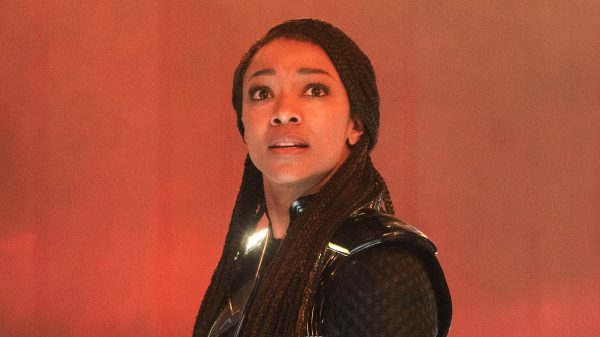
New photos + a sneak peek from the Star Trek: Discovery series finale “Life, Itself”
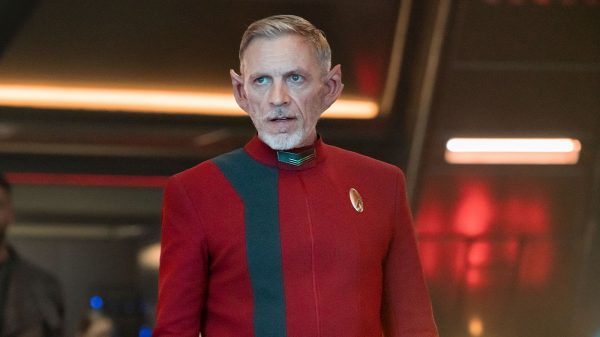
New photos + a sneak peek at Star Trek: Discovery Season 5 Episode 9 “Lagrange Point”
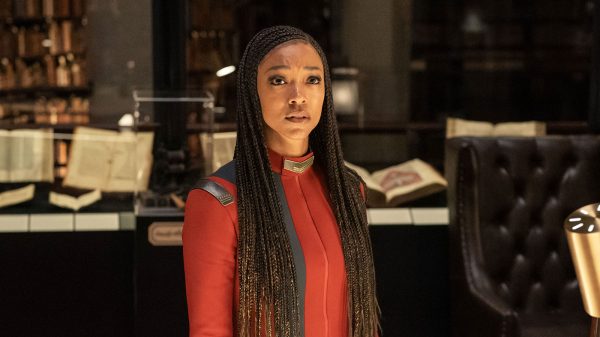
New photos + a sneak peek at Star Trek: Discovery Season 5 Episode 8 “Labyrinths”
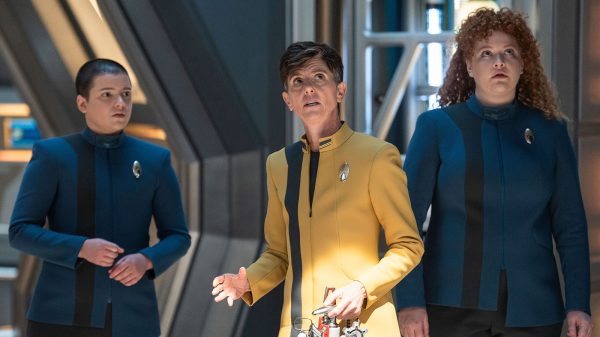
New photos + video preview from Star Trek: Discovery Season 5 Episode 7 “Erigah”
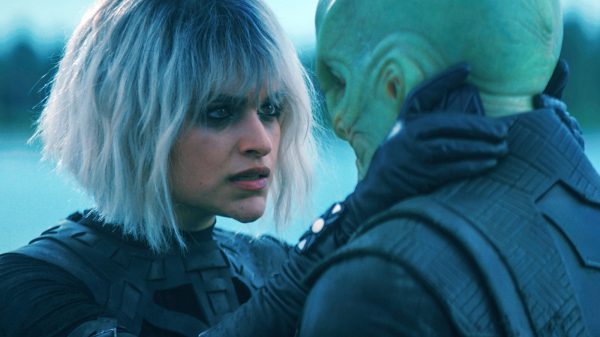
New photos from Star Trek: Discovery Season 5 Episode 4 “Face the Strange”
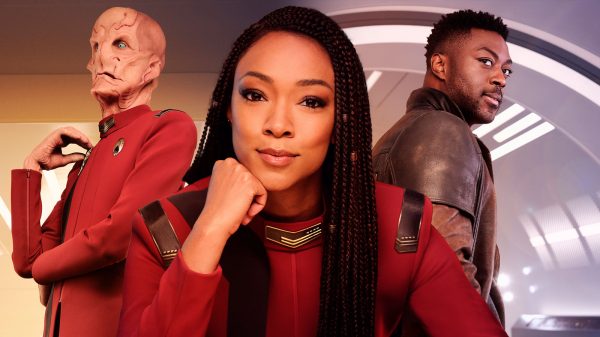
Star Trek: Discovery Series Finale Review: “Life, Itself” An embodiment of Roddenberry’s lofty ideals
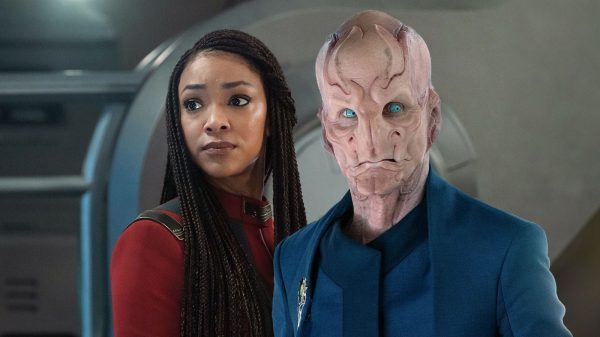
Star Trek: Discovery 509 “Lagrange Point” Review: A Black Hole of Poor Execution
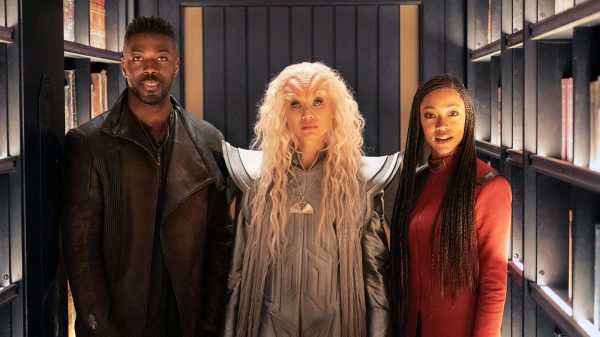
Star Trek: Discovery 508 “Labyrinths” Review: The (Inner) Voyage Home
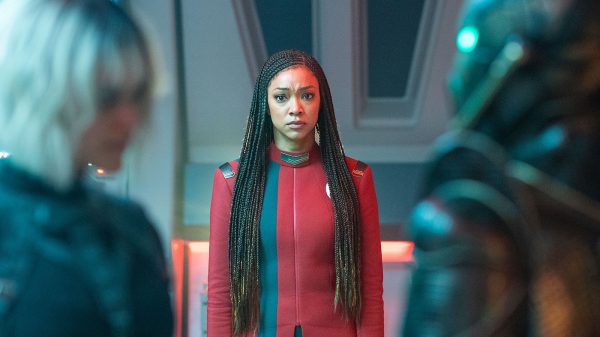
Star Trek: Discovery 507 “Erigah” Review: In the Shadow of War
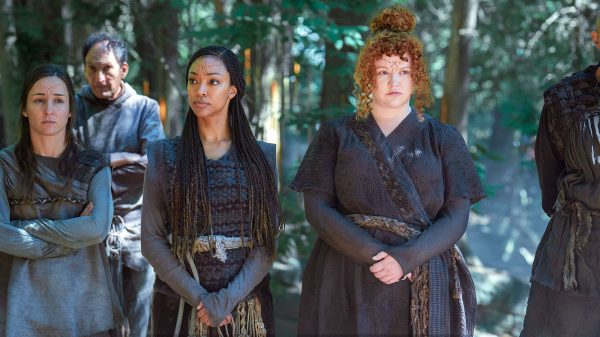
Star Trek: Discovery 506 “Whistlespeak” Review: Decoding the Relationship Between Faith and Technology
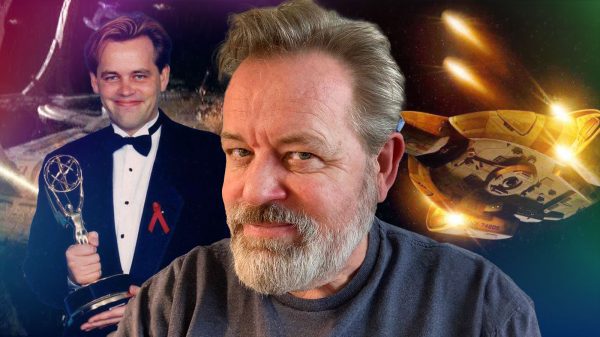
From TNG to Enterprise, Star Trek VFX Maestro, Adam Howard, shares stories from his career
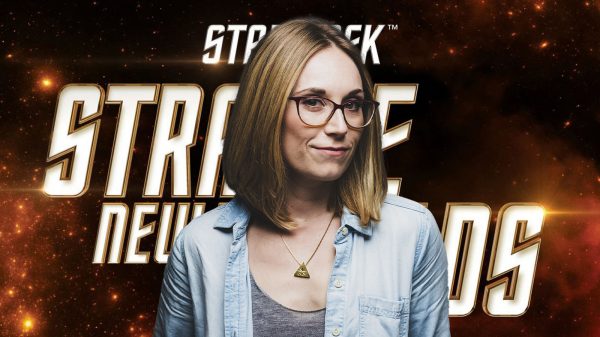
Strange New Worlds director Jordan Canning talks “Charades,” the versatility of the series & Star Trek fandom
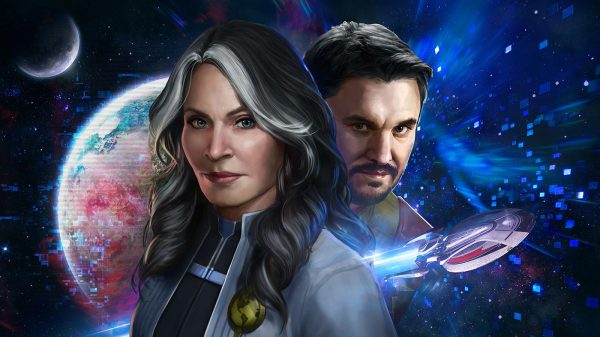
‘Star Trek Online’ lead designer talks the game’s longevity, honoring the franchise, and seeing his work come to life in ‘Picard’

Gates McFadden talks Star Trek: Picard, reuniting with her TNG castmates, InvestiGates, and the Human Condition

Connor Trinneer and Dominic Keating talk ‘Enterprise’, their relationship with Star Trek in 2023 and their first live ‘Shuttlepod Show’

57-Year Mission set to beam 160+ Star Trek guests down to Las Vegas
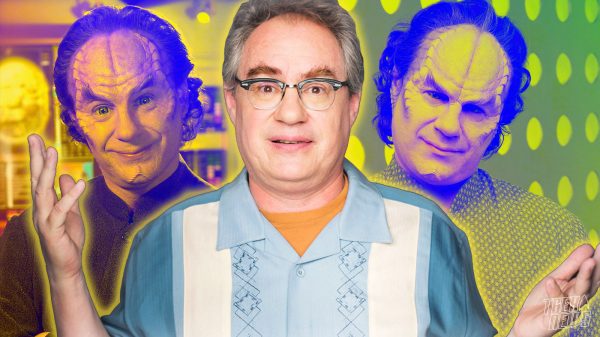
John Billingsley discusses what he’d want in a fifth season of Enterprise, playing Phlox and this weekend’s Trek Talks 2 event
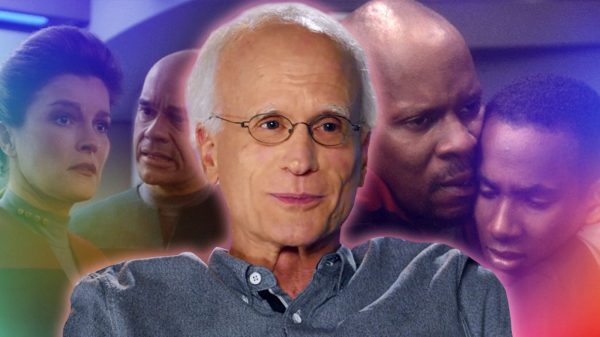
Veteran Star Trek director David Livingston looks back on his legendary career ahead of Trek Talks 2 event
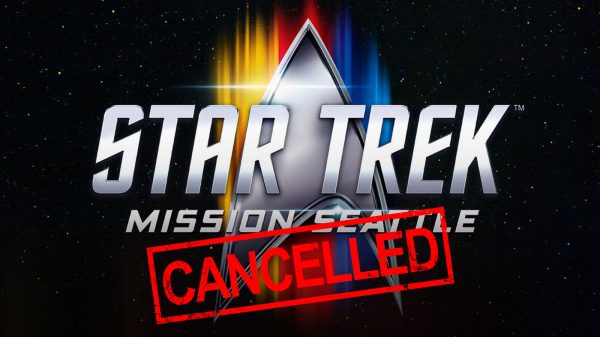
ReedPop’s Star Trek: Mission Seattle convention has been cancelled

56-Year Mission Preview: More than 130 Star Trek guests set to beam down to Las Vegas convention
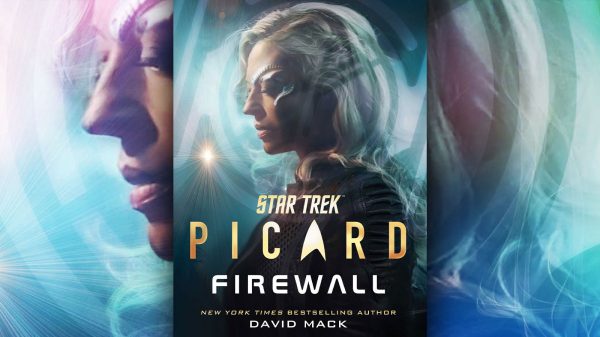
Star Trek: Picard — Firewall Review: The Renaissance of Seven of Nine
![star trek voyager the year of hell 2023: A banner year for Star Trek — here’s why [Op-Ed]](https://treknews.net/wp-content/uploads/2024/01/star-trek-2023-year-in-review-600x337.jpg)
2023: A banner year for Star Trek — here’s why [Op-Ed]
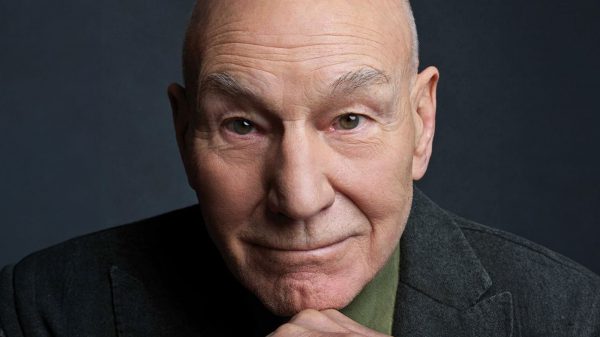
‘Making It So’ Review: Patrick Stewart’s journey from stage to starship
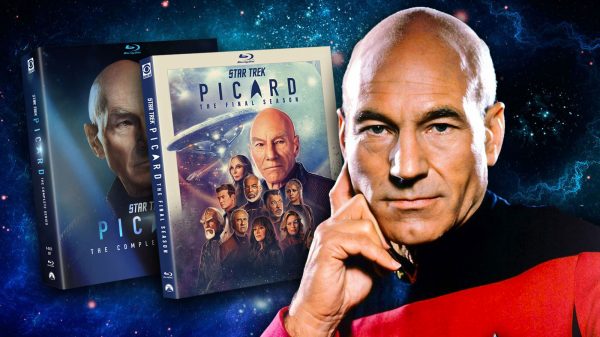
54-Disc Picard Legacy Collection, Star Trek: Picard Season 3, Complete Series Blu-ray box sets announced
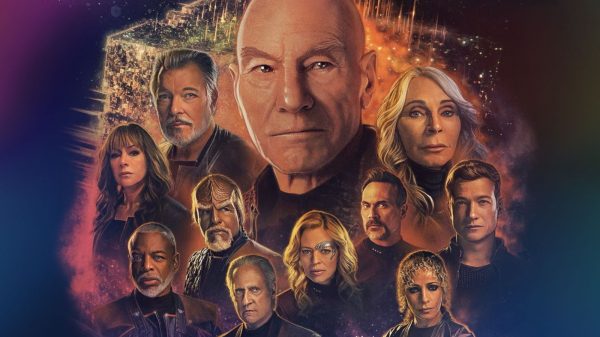
Star Trek: Picard series finale “The Last Generation” Review: A perfect sendoff to an unforgettable crew
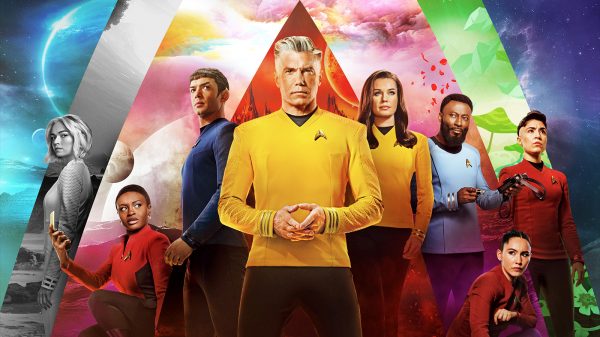
Star Trek: Strange New Worlds arrives on Blu-ray, 4K UHD and DVD this December
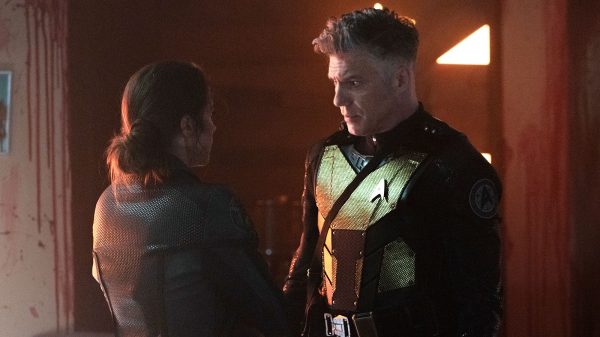
Star Trek: Strange New Worlds “Hegemony” Review: An underwhelming end to the series’ sophomore season
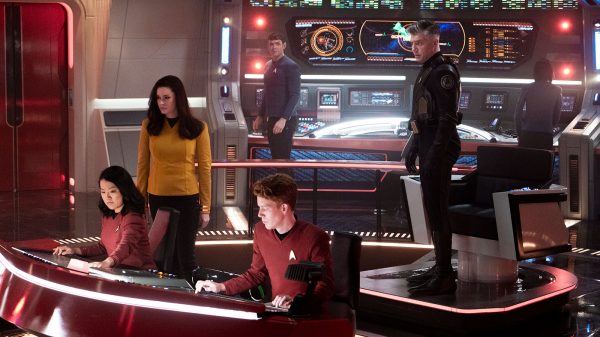
Star Trek: Strange New Worlds season 2 finale “Hegemony” preview + new photos
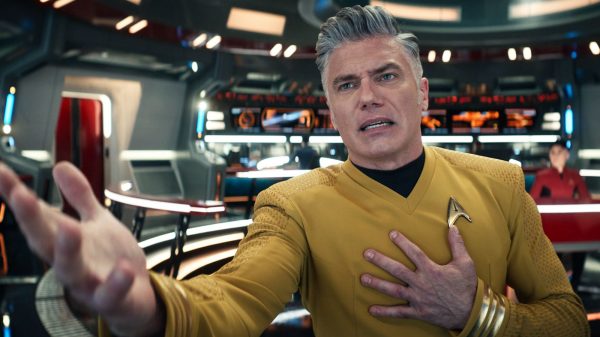
Star Trek: Strange New Worlds 209 “Subspace Rhapsody” Review: All systems stable… but why are we singing?
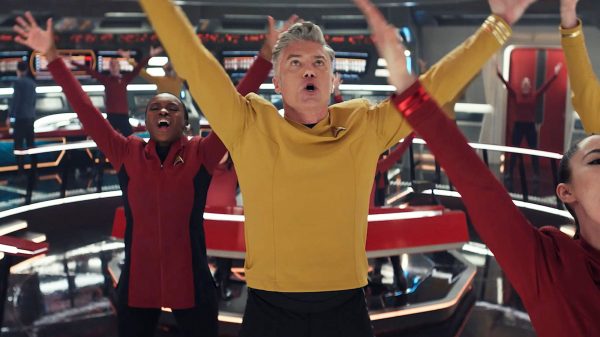
Star Trek: Strange New Worlds “Subspace Rhapsody” preview + new photos
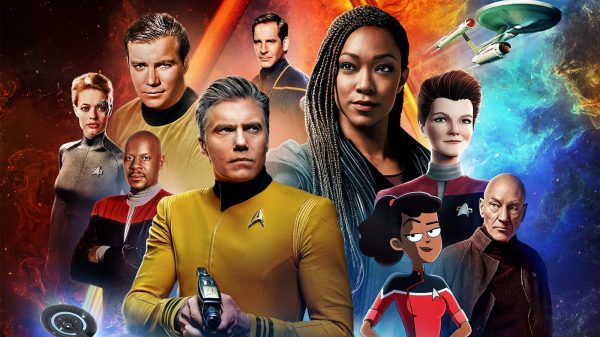
Star Trek Day 2021 to Celebrate 55th Anniversary of the Franchise on September 8 with Live Panels and Reveals

Paramount+ Launches with 1-Month Free Trial, Streaming Every Star Trek Episode
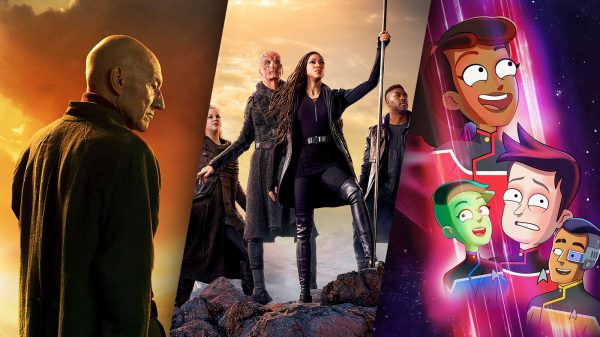
Paramount+ to Officially Launch March 4, Taking Place of CBS All Access
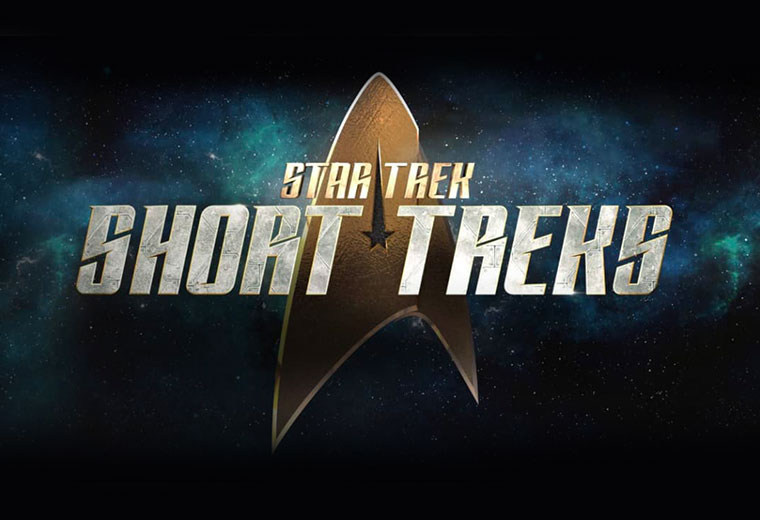
STAR TREK: SHORT TREKS Season 2 Now Streaming For Free (in the U.S.)
![star trek voyager the year of hell [REVIEW] STAR TREK: SHORT TREKS "Children of Mars": All Hands... Battlestations](https://treknews.net/wp-content/uploads/2020/01/review-star-trek-short-treks-children-of-mars.jpg)
[REVIEW] STAR TREK: SHORT TREKS “Children of Mars”: All Hands… Battle Stations
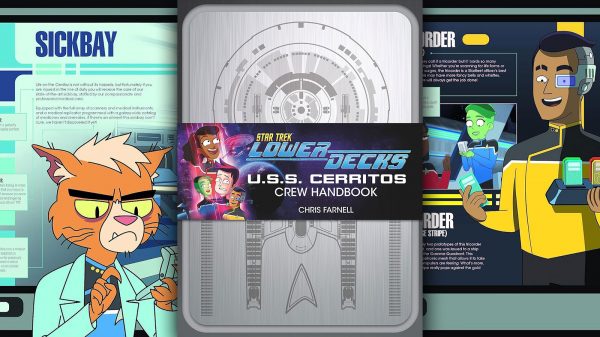
‘U.S.S. Cerritos Crew Handbook’ Review: A must-read Star Trek: Lower Decks fans
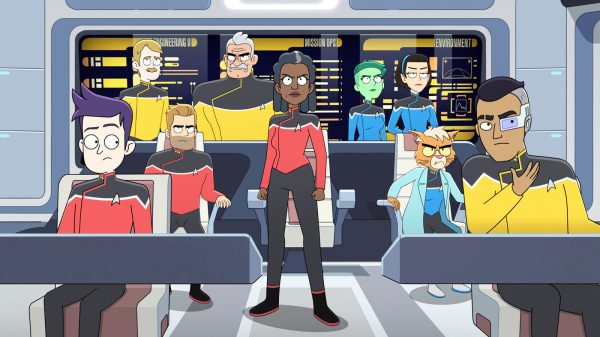
New photos from this week’s Star Trek: Lower Decks season 4 finale
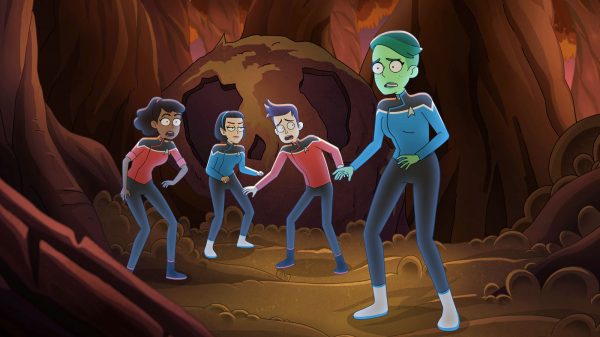
Star Trek: Lower Decks “The Inner Fight” Review: Lost stars and hidden battles
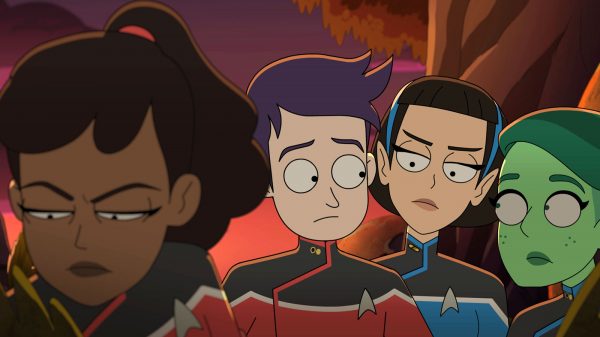
New photos from this week’s episode of Star Trek: Lower Decks
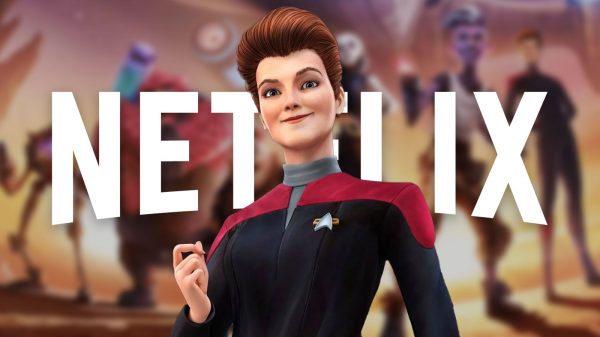
Star Trek: Prodigy begins streaming December 25th on Netflix
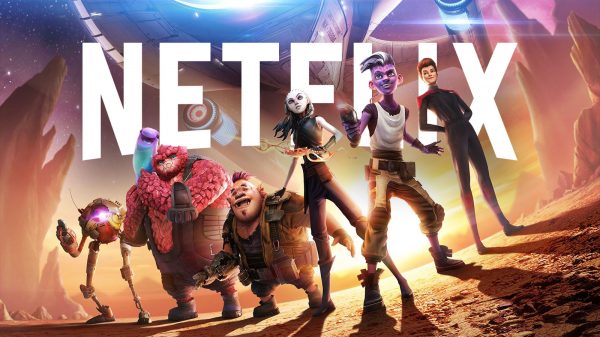
Star Trek: Prodigy lands at Netflix, season 2 coming in 2024
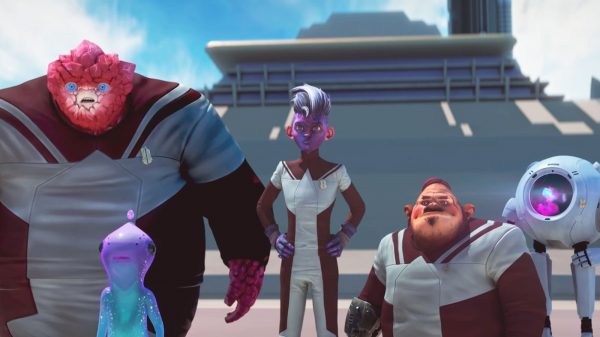
Star Trek: Prodigy Season 2 sneak peek reveals the surprise return of a Voyager castmember
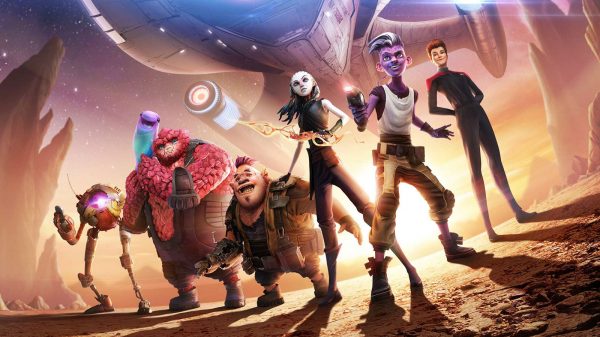
Star Trek: Prodigy canceled, first season to be removed from Paramount+
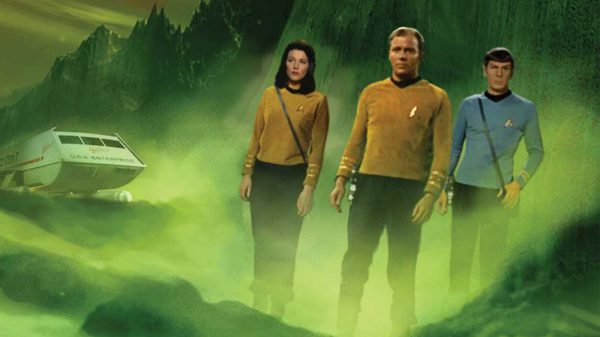
Revisiting “Star Trek: Legacies – Captain to Captain” Retro Review
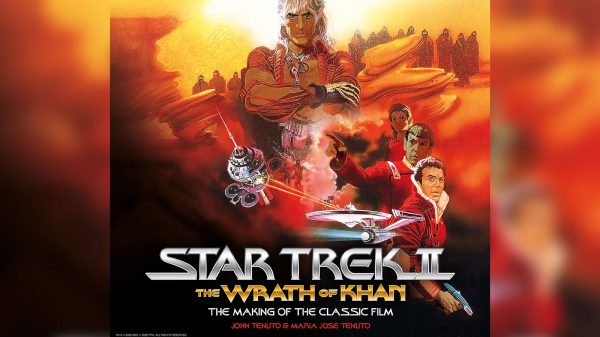
The Wrath of Khan – The Making of the Classic Film Review: A gem for your Star Trek reference collection
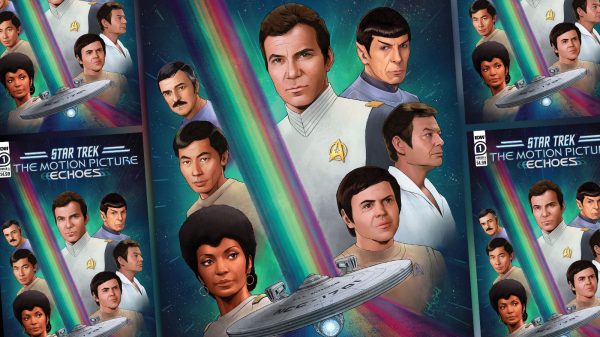
The events of Star Trek: The Motion Picture to continue in new IDW miniseries “Echoes”
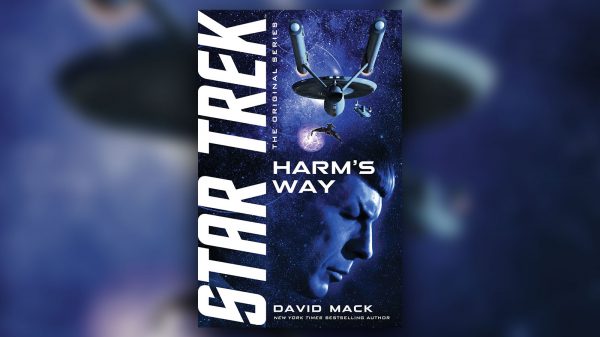
Star Trek: The Original Series “Harm’s Way” Book Review
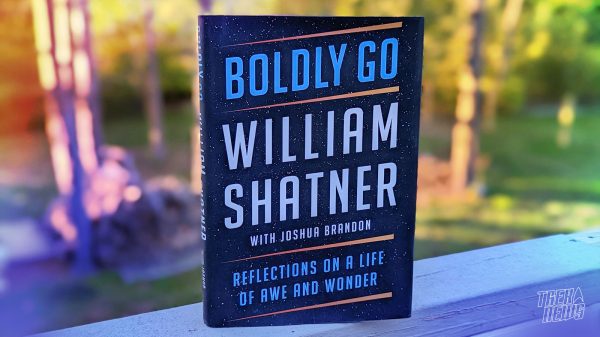
William Shatner’s New Book ‘Boldly Go: Reflections on a Life of Awe and Wonder’ Review: More of a good thing
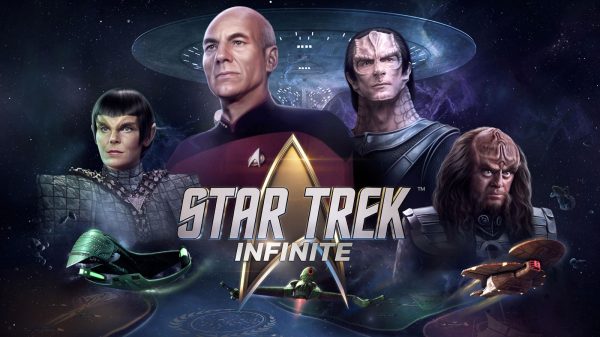
Star Trek: Infinite release date + details on Lower Decks-themed pre-order bonuses
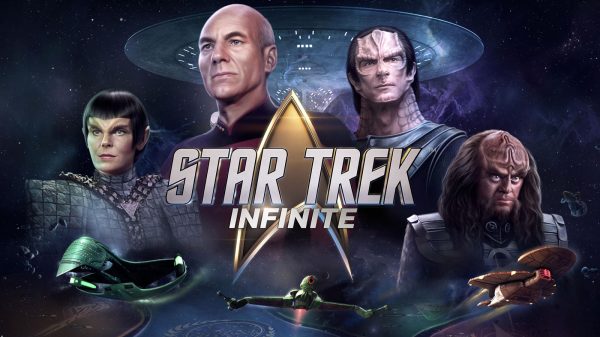
‘Star Trek: Infinite’ strategy game revealed, set to be released this fall
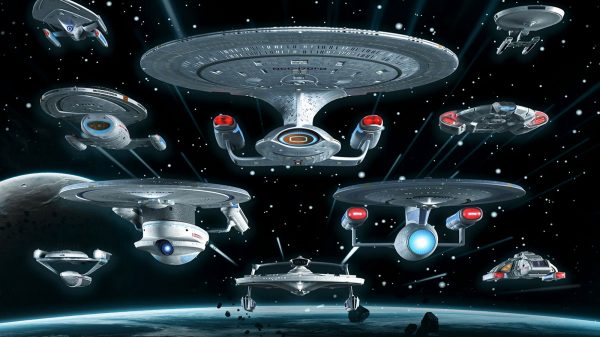
Hero Collector Revisits The Classics in New Starfleet Starships Essentials Collection
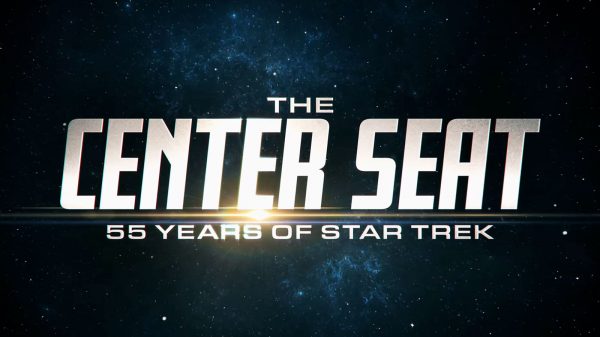
New Star Trek Docuseries ‘The Center Seat’ Announced, Coming This Fall
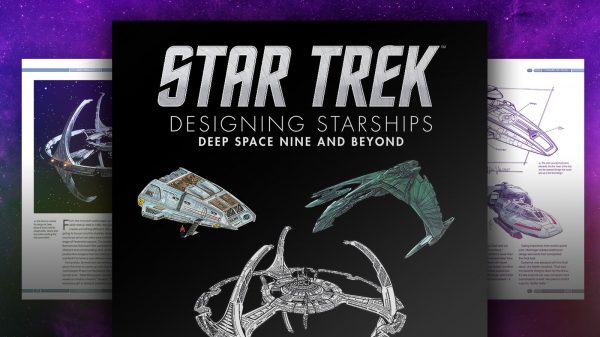
Star Trek Designing Starships: Deep Space Nine & Beyond Review: a Deep Dive Into Shuttlecraft of the Gamma Quadrant
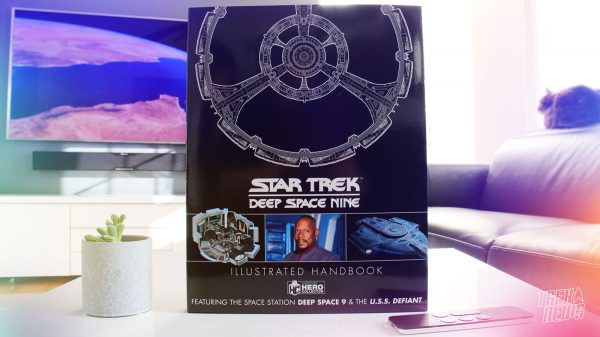
Star Trek: Deep Space Nine Illustrated Handbook Review: Terok Nor Deconstructed in Amazing Detail
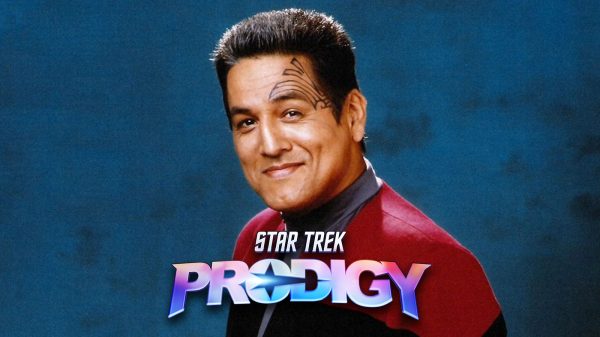
Robert Beltran Is Officially Returning to Star Trek as Chakotay on ‘Prodigy’ + More Casting News
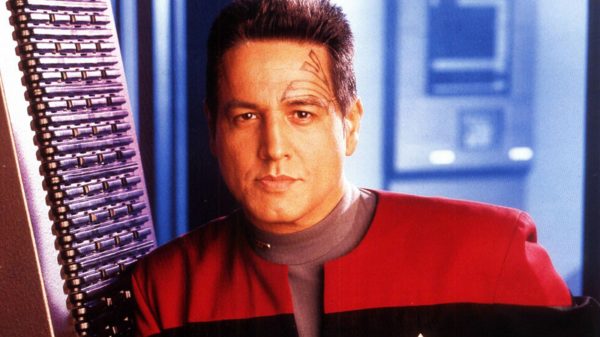
Robert Beltran Says He’s Returning to Star Trek in ‘Prodigy’

John Billingsley Talks Life Since Star Trek: Enterprise, Going to Space and Turning Down Lunch with Shatner and Nimoy
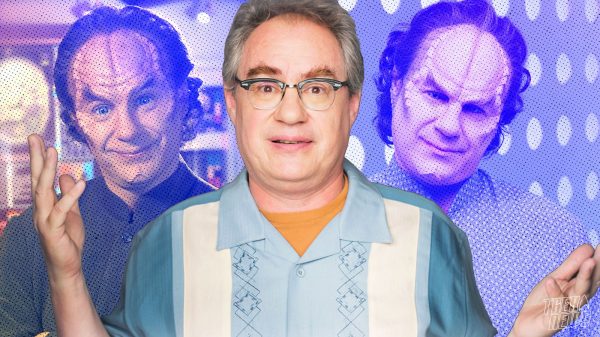
Star Trek: Enterprise Star John Billingsley Talks Charity Work, Upcoming TREK*Talks Event
Review: Star Trek: Discovery Season 5 Episode 10 “Life, Itself”
Star Trek: Discovery delivers an excellent series finale that surpassed our high expectations, as this show ends its five-season journey with one of the most Star Trek messages possible.
Captain Michael Burnham ( Sonequa Martin-Green ) is trapped in the Progenitors’ portal, and it’s a locale that makes thorough use of this show’s famous AR wall. It’s a beautiful location, one that inspires mystery and familiarity, as Burnham views relatable environs throughout the galaxy, presumably created by the Progenitors. After falling into and then struggling to find her way out of a cyclonic environment, she encounters Moll ( Eve Harlow ), who is still hell-bent on finding a way to resurrect her lover, L’ak ( Elias Toufexis ).
After reaffirming she won’t let the Breen or the rogue Moll have the tech before the Federation can safely study it, Burnham finds herself engaged with the desperate ex-courier. This extended imaginative, gravity-defying fight scene ends with the pair calling a truce to find the Progenitors’ tech together. Moreover, Burnham gives Moll her personal assurance that she is looking out for Moll’s interests.

On their path to the bright light they assume indicates the Progenitors’ tech, Burnham notes a major difference between the environment within the portal and the rules of physics enjoyed by those outside the portal. There are pockets of “negative space” in the portal, places that shouldn’t exist. Upon interacting with one of these spaces, Burnham opens the true path to the tech – a jaunt through a field of waist-high flowers amid a pastoral, sunset-kissed area.
The pair run across a rock monument that Burnham deduces was made by the tech’s 24 th -century scientists for their fallen comrade, as referenced in “ Jinaal .” Not surprisingly, as they are right on the cusp of interfacing with the tech, Moll cold-clocks Burnham and tries to take the tech for herself, which leads to her entrapment as the space outside the Progenitors’ portal starts to get all wonky, much to the detriment of Discovery and its crew.
What are Discovery ’s crew up to while Burnham is on the doorstep of the Progenitors’ tech? The Breen dreadnaught that got its shuttle bay absolutely wrecked in the previous episode is more or less out of action, but our protagonists still have issues. Tahal ( Patricia Summersett ) is on her way, and the temporarily disabled dreadnaught near Discovery is harassing our heroes with fighters.
This situation just adds pressure to Commander Rayner’s ( Callum Keith Rennie ) rescue of his captain and the Progenitor tech. To rid themselves of those pesky fighters, Rayner and his bridge crew resurrect the Riker Maneuver from Star Trek: Insurrection (whether they realize it or not) and destroy their pursuers by igniting a plasma field near the black holes. Meanwhile, Cleveland Booker ( David Ajala ) and Doctor Hugh Culber ( Wilson Cruz ) take a shuttle to keep the portal from falling into the black hole.
“Ever since Jinaal, I’ve been trying to figure out what it means, this change inside of me or whatever it is. I’m not sure if this will give me the answers, but it might. And at the very least, I can help him. I know I can.” – Culber to Paul Stamets ( Anthony Rapp ), as the doctor goes with Book into the dangerous space surrounding the Progenitors’ portal.
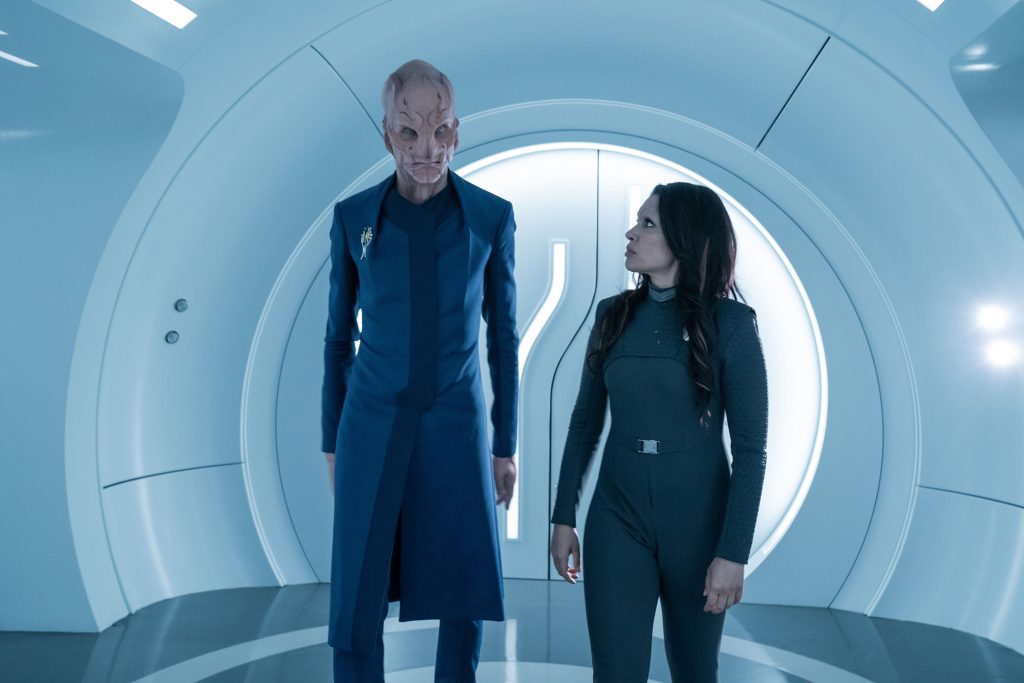
Why is the good doctor on such a dangerous away mission? Before Booker embarks to save Burnham, Culber insists on coming with him, as he instinctively feels he needs to do this. Surprisingly, Culber remembers the precise tractor beam frequency required to grab the Progenitors’ portal, something he has no reason to know; after all, he doesn’t keep any of Jinaal’s memories. Remember, the scientists who studied the Progenitors’ tech, including Jinaal, did indeed make it as far as Discovery ’s crew has, and would thus know how to access the Progenitors’ portal. Why did that particular memory unlock itself when Book needed it? Culber is puzzled by this fortuitous event.
The end of Culber’s metaphysical journey this season is in the shuttle’s cockpit with Book, as the pair hold onto the portal while Burnham is within. Culber never gets an answer to the spiritual journey he experienced this season, but you know what? He’s okay with that. Whereas he thought he might be on the path to answers of life and death, he is content with the mystery of not knowing the answers to such powerful questions. Not knowing, after all, is part of the human condition.
With the Breen dreadnaught coming back online and posing a serious threat to his rescue mission, Rayner needs to eliminate the ship from the playing field. Tasking Paul Stamets to work miracles, the engineer and Adira Tal ( Blu del Barrio ) devise a way to use Discovery ’s Spore Drive to jump the dreadnaught to a different part of the galaxy: the Galactic Barrier. After all, the decades-long trip home for the Breen is more time than the Breen ever gave Rayner’s family during their occupation of his homeworld.
Let’s talk about this plan for a second. Using Discovery ’s trademark Spore Drive technology – which the Pathway Drive recently made outdated, much to Paul’s chagrin – in a way we’ve never seen before is a smart and cool trick for the series finale, and we think Rayner found a clever, harmless way to avenge his family and world while still serving his mission. Seeing Discovery separate its saucer to encase the dreadnaught with a Spore Drive field is such a remarkable sight, and it comes as Burnham is coming face-to-face with a Progenitor.
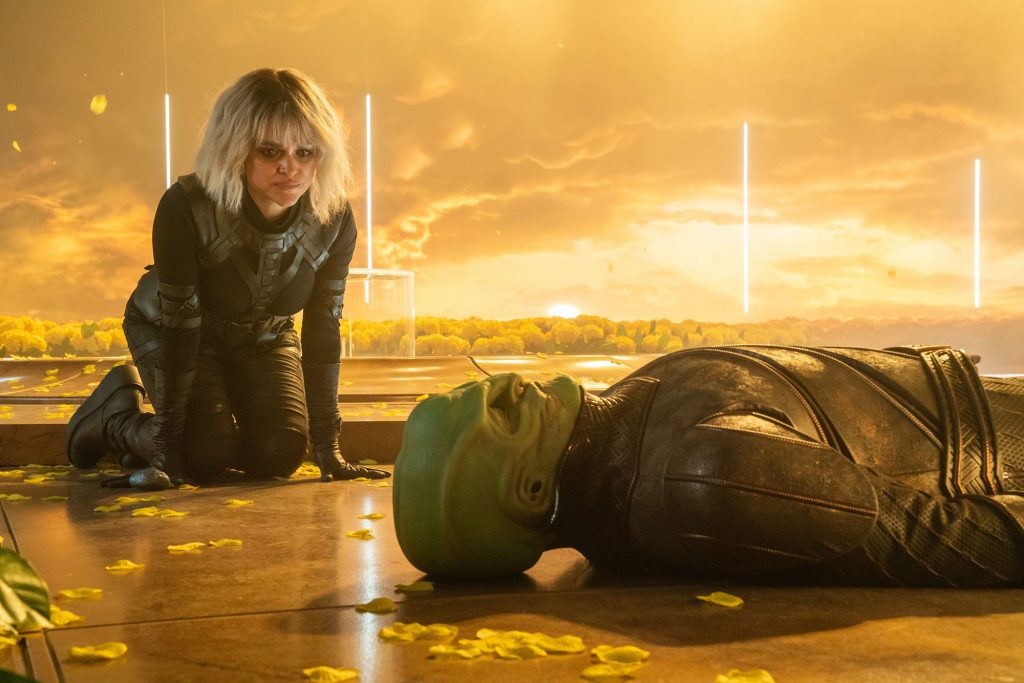
What to do with Ultimate Power?
Remember when we said Moll and Burnham were on the cusp of discovery? We were referring to them being faced with a puzzle. A grouping of nine triangles sits on a table at the center of the Progenitors’ space, and it’s here Burnham figures the hint she received from the mindscape – “Build the shape of the one between the many” – comes into play. As we alluded to earlier, Moll gets a try at the puzzle first, but ends up injuring herself and almost wrecking the space in and around the portal. When its Burnham’s time to try the puzzle, she correctly uses the lessons she learned along the clue path and places the triangles in the proper order – in a way that forms a larger triangle using negative space between the other triangles – which thus unlocks the key to the whole shebang.
Burnham comes face to face with a Progenitor ( Somkele Iyamah ), or at least the semblance of one; after all, Progenitors died out billions of years ago. The Progenitor asserts she is now responsible for showing Burnham how to use the Progenitors’ technology, and that the rate of its life-creating nature can be adjusted for speed and scale. Moreover, the Progenitor surprises Burnham with a weighty reveal: The Progenitors aren’t actually the ones who created life in the galaxy; they found it there and augmented it after arriving. Who are the Progenitors’ predecessors, the ones who the Progenitors assume created them? Who created the creators, and exactly how far back such a creation cycle goes, is a question that may never be answered, but one that’s mighty fascinating to ponder.
“I’m far from perfect. I’m afraid, lost sometimes.” “Every sentient being, myself included, is all of those things. Yet some strive to be the best of themselves. I see that in you.” – Burnham and the Progenitor.
The Progenitor recalls how the only other visitor to the Progenitors’ space, the Betazoid Dr. Derex, asserted the next visitor needed to be better prepared to handle the tech’s enormous responsibility. Having passed all those trials laid by the tech’s scientists, the Progenitor gives Burnham the powerful choice of choosing what should be done with such power.
The climax of Burnham and the Progenitor’s conversation is framed against the actions being taken by Burnham’s friends in pursuit of their shared goal. It’s a powerful, inspiring scene that is interposed with the actions others are taking – including Discovery spore-jumping the Breen ship – in pursuit of the ultimate treasure and Burnham’s rescue. Major kudos to director and Discovery production veteran Olatunde Osunsanmi for crafting such powerful storytelling.
To help Burnham decide what to do with the tech, the Progenitor also asks Burnham what’s most important to her. As the one who proved herself time and again as someone responsible and altruistic, the choice is hers. The Progenitor offers what was important to her and her people. In their time, they were the only sentients in the galaxy, and they wanted to populate the Milky Way with an endless array of diverse beings. Burnham can’t answer the question of what is most meaningful to her immediately – who could, really, without weighing a ton of factors and deep introspection? – so the Progenitor leaves Burnham with the tech and one final gift.
Burnham’s mind conjures a montage of all the things that had to happen to get her to this point in time. The propagation of life on Earth, evolution, discovery, humans reaching for the stars – it’s all there. Returned to the injured Moll with the bad news that she can’t revive L’ak with the Progenitors’ tech, Burnham and Moll are rescued from the Progenitors’ portal by Book and Culber. Thanks to Discovery’s ability to spore-jump the Breen dreadnaught away from the battle zone, and with Saru’s ( Doug Jones ) ability to force Tahal’s fleet to turn around, the day is saved.
Action Saru
Yep, Saru ended up playing a pivotal role in helping his former shipmates. Remember how in the last episode he was tasked with taking a shuttle to intercept Tahal’s fleet and get them to stand down? He embarks on that mission with Nhan ( Rachael Ancheril ), who we’re thankful makes one final appearance in this show besides her wasted role in “ In the Shadow of War .” Nhan volunteers to assist Saru on this possible suicide mission, and they both agree the effort is worth it to save their found family on Discovery .
“Ambassador Saru, are you insane?” “Not to the best of my knowledge.” – Tahal and Saru, as Saru attempts to stop Tahal’s fleet in an unarmed shuttle.
Catching up to Tahal’s fleet as they barrel toward the black holes, Saru gets one of his best moments in recent seasons. First, the Kelpien hails Tahal to try a typical diplomatic overture, including offering her some trade concessions if she were to stand down. But when that approach predictably doesn’t work, Action Saru comes out in full force – but not by him shooting his ganglia. No, he’s more calculating than that.
Saru confidently asserts himself and confronts Tahal, without any hint of deceit in his expression. The Kelpien uses his diplomatic connections made during his absence from the show, and keen observation of Tahal’s behavior and motivations to all but force her to turn her fleet around, lest she encounters trouble from Starfleet’s allies and other Breen. This scene is a masterclass from Doug Jones, who constantly nails how to act while wearing a mountain of prosthetics and makeup. Expect this scene to show up in any future compilation video for Top Badass Star Trek Character Moments.
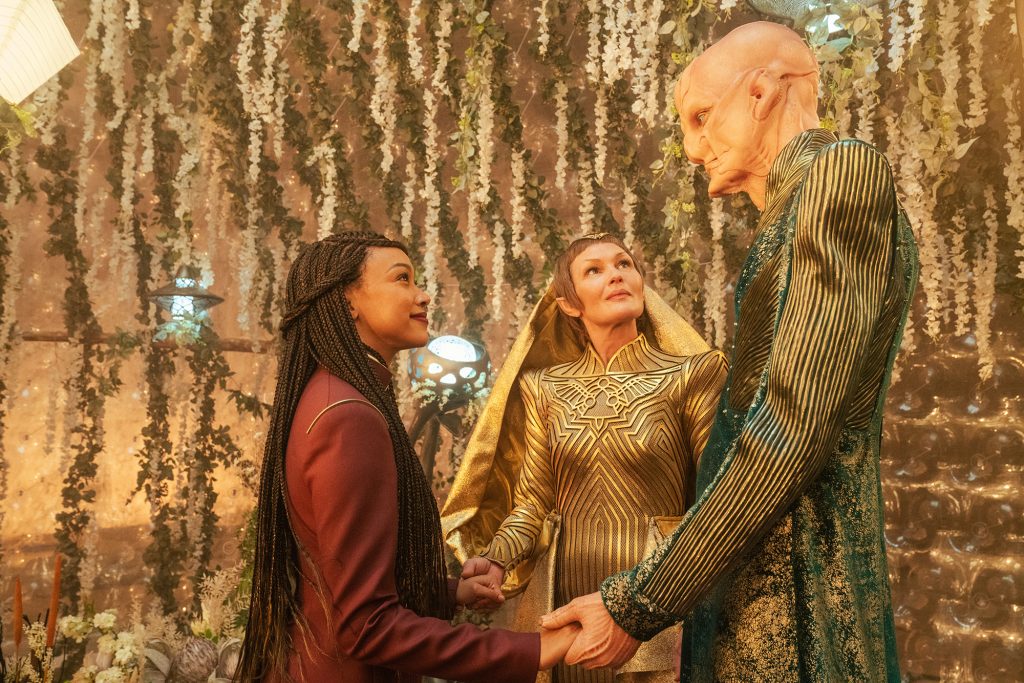
We Are Enough
“I saw the last four billion years… I realized we already have infinite diversity in infinite combinations. There’s no need for this technology anymore.” – Burnham.
With the day saved, it’s time for Burnham to decide what to do with the Progenitors’ tech. Her answer offers the perfect Star Trek- ian message. She orders Discovery to shoot the tech into the event horizon of the nearby black hole, free from discovery of any Milky Way species. Her rationale is beautiful: the people of the 32 nd century already have such a diverse and wonderful array of relationships – “infinite diversity in infinite combinations,” as she says, borrowing a phrase from her Vulcan upbringing – that this renders the Progenitors’ tech unneeded in such an idyllic galaxy. Think about this: Burnham asserts the ultimate power in the galaxy already exists in our shared diversity. How much more Star Trek can you get? We loved this resolution to the season-long question of what Discovery should do with the Progenitors’ technology. It really is quite inspiring.
Stamets, who has been viewing the potential study and utilization of the Progenitors’ technology as a lasting part of his legacy in the wake of his spore drive being rendered obsolete, isn’t so thrilled by this plan. However, he ultimately accepts Burnham’s well-intentioned logic and concedes casting the technology into the black hole is the right thing to do. Offering some words of support to her faux-foster father, Adira reassures Stamets that the crew learned a lot in their pursuit of the Progenitors’ tech, and that gaining knowledge is a good enough outcome. We agree with Stamets when he calls the young Adira “wise” for such a mature observation. What are humans if not their quest for lifelong learning?
“I’ve lived many years, captain, and many lives. I’ve met few who have impressed me but also aggravated me as much as you.” – Kovich to Burnham.
There’s one more surprise in store before the episode proper ends with Saru and T’Rina’s scenic marriage and Book and Burnham heartfully reigniting their relationship before venturing off on another mission. Discovery returns to Federation HQ after the ordeal at the black holes, and Burnham pays one last visit to Doctor Kovich ( David Cronenberg ), who recently requested Moll be transferred to his care for unknown reasons. Burnham’s Red Directive mission is over, and all records about the Progenitors’ tech will be erased.
It’s a sensible outcome for Burnham, who, let’s remember, had her 23 rd -century activities erased from official records, but it’s clear she harbors questions about who or what Kovich really is. Every time Kovich was on screen since his introduction in season three, there’s been more to him than meets the eye. Luckily, Discovery wouldn’t let the show end without revealing a big surprise to Enterprise fans.
You might see where this is going if you watched Scott Bakula’s four-season early-2000s Star Trek show. Burnham gets Kovich to finally formally introduce himself to her: Agent Daniels of the USS Enterprise and “other places.” Kovich is a codename for the time-traveling agent seen in a handful of Enterprise episodes, and his extra-temporal nature explains why he not only has access to legitimate pen and paper, as seen earlier in the season, but a collection of memorabilia from across the timeline. On his office shelves, we see artifacts such as what’s presumably Geordi LaForge’s VISOR, Ben Sisko’s baseball, and a bottle of Chateau Picard. It’s Easter egg city for Star Trek fans in this scene, and it’s a relief knowing this show had a cool plan for Kovich all along.
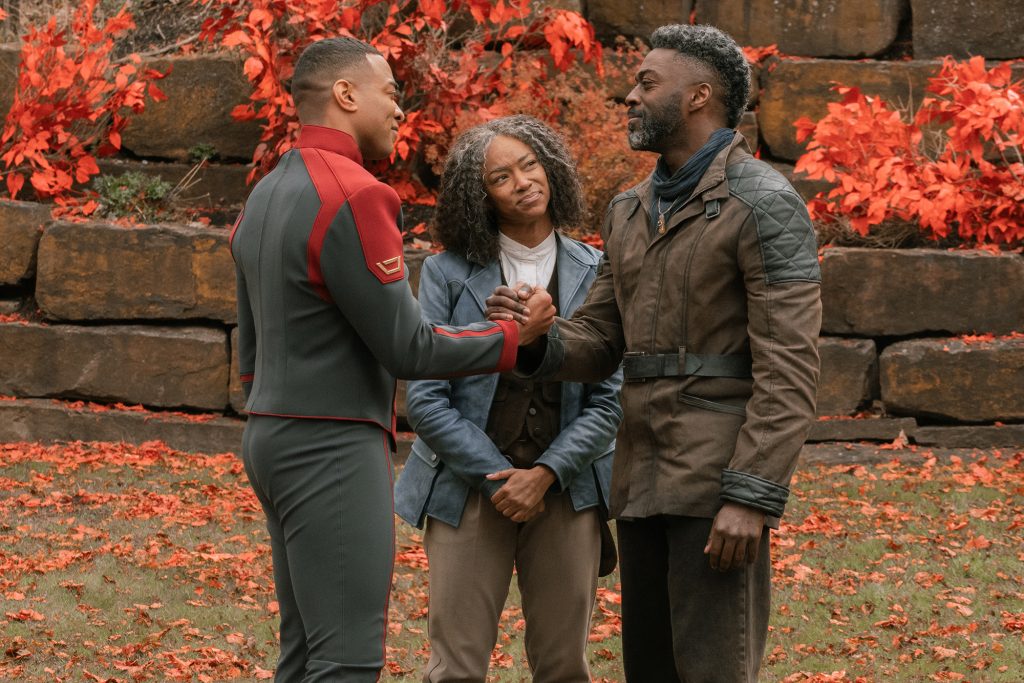
Such would be a great place to leave this season if we were expecting its return next year, but of course, this show’s cast and crew had to return for additional shooting after news of Discovery ’s cancellation broke more than a year ago. For the last 15 minutes of “Life, Itself” director Jonathan Frakes closes out the story of our inspirational protagonist. In a sequence set decades after the events of the Progenitor search, Burnham, who seems to have retired on Sanctuary Four with Book, has one final mission: escorting her son, played by Sawandi Wilson , to Federation HQ for him to assume his own captaincy.
“A long time ago, someone asked me what was most meaningful to me… At the end of the day, every member of your crew has to find their own sense of meaning.” “So, do you know how you answer that question now?” “Yeah… just being here. You know. Sometimes life itself is meaning enough.” – Admiral Burnham to her son.
Burnham and her son share a heartfelt conversation about the importance of captaincy and the even greater importance of finding meaning in one’s life. It’s a tender discussion, and neatly puts a bow on one of this series’ most prominent themes: finding family. Burnham asserts her time aboard Discovery and making the close connections she did was one of the most impactful aspects of her life.
Besides the prideful mission of bringing her son to his first command, Starfleet has one more mission for Admiral Burnham. She is to lead Discovery and its resident artificial intelligence, Zora ( Annabelle Wallis ), to coordinates quite a ways from home. Zora’s Red Directive mission? Await a “craft” – but Burnham doesn’t know if that refers to a ship or a person. We know, however, that Craft is a person, someone who is destined to visit Discovery in the far future as Zora lives a solidary existence as the sole resident of the ancient Starfleet ship. Finally, we get a direct link to the 2018 (yes, six years ago!) Short Trek episode “ Calypso .”
Before sending Zora on her way, Burnham lives in the past a bit as she sits in her captain’s chair one last time. The aged Burnham disappears briefly, replaced by her younger 32 nd -century self, as the admiral remembers her found family from Discovery . Thanks to Burnham’s vivid imagination, we see the entire cast on the bridge one last time. Luckily, both Keyla Detmer ( Emily Coutts ) and Joann Owosekun ( Oyin Oladejo ) make one final appearance, after basically being absent this season.
As far as nostalgic family gatherings go, this one, scored by a heartbreaking soundtrack that really pulls at your heartstrings, is a great one. The scene is imminently appropriate considering Burnham just told her son the most important thing to her was family, and we’re saying goodbye to this cast we’ve grown to love over the last seven years.
Discovery , getting its “last dance,” as Burnham wistfully says to herself,gets the Babylon 5 -esque farewell treatment as the ship, newly de-graded to appear as it did before its jump to the future, is saluted by rows and rows of Starfleet vessels as Burnham and Zora lead the ship into its lonely future. Fin .
Of course, we think this show deserves more than just the relatively quick, albeit well-executed epilogue delivered due to the show’s surprise cancellation. Extended farewells to certain cast members would have been welcomed, but perhaps we haven’t seen the end of this crew’s adventures in the 32 nd century. Who knows if books, comics, or other media can pick up stories left untold. The possibilities for continued storytelling using Discovery ’s powerful ethos and 32 nd century worldbuilding are endless, and it’d be a shame if the final minutes of “Life, Itself,” as good as they are, were indeed the end of the line for these characters.
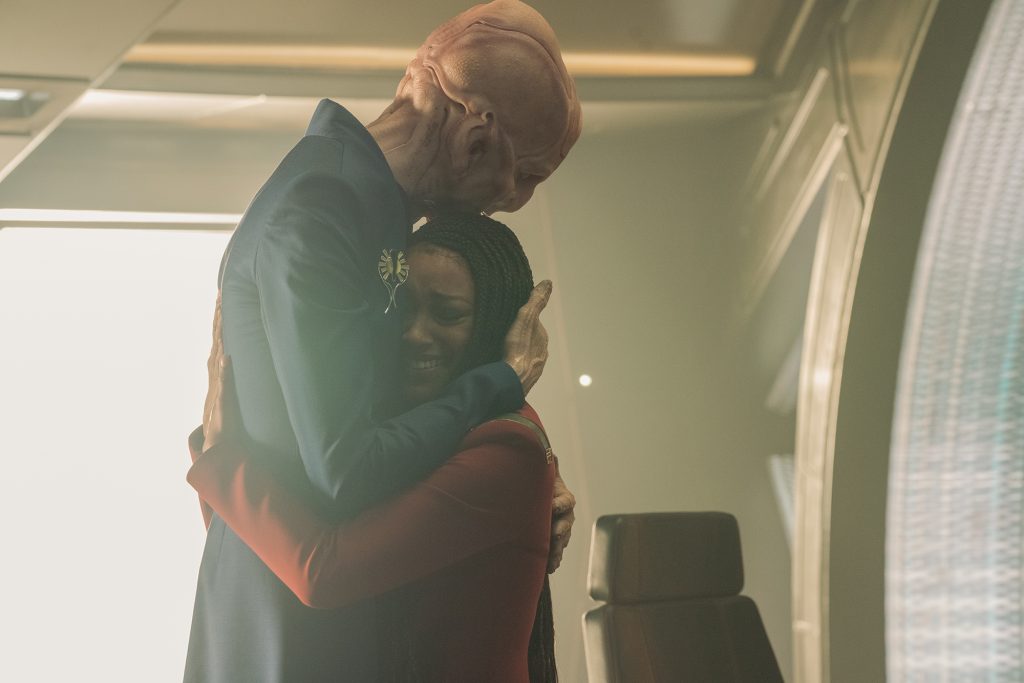
Sticking the Landing
“Life, Itself” serves as a fantastic finale for the season-long Progenitor mystery, tying together the scientists’ clue trail and associated tests of character with masterful storytelling and emotional depth. Burnham’s decision to cast the Progenitors’ tech into the black hole is a remarkable reflection of how strongly and powerfully Discovery upholds Star Trek ‘s timeless ideals of galactic cooperation and the power of diversity. By choosing to trust in the strength of “infinite diversity in infinite combinations,” Burnham embodies the essence of Roddenberry’s vision, reminding us that true power lies in the unity and diversity of life across the galaxy. If only this lesson was followed in the present day.
Burnham’s resolution, combined with stunning visual spectacles throughout the episode, Culber’s acceptance of the mystery of life, the reveal of Kovich as Daniels, the touching glimpses of Burnham’s future, and a heartfelt sendoff for her crew, solidifies “Life, Itself” as one of Discovery ’s best entries. This show has delivered a series finale that not only meets but exceeds expectations.
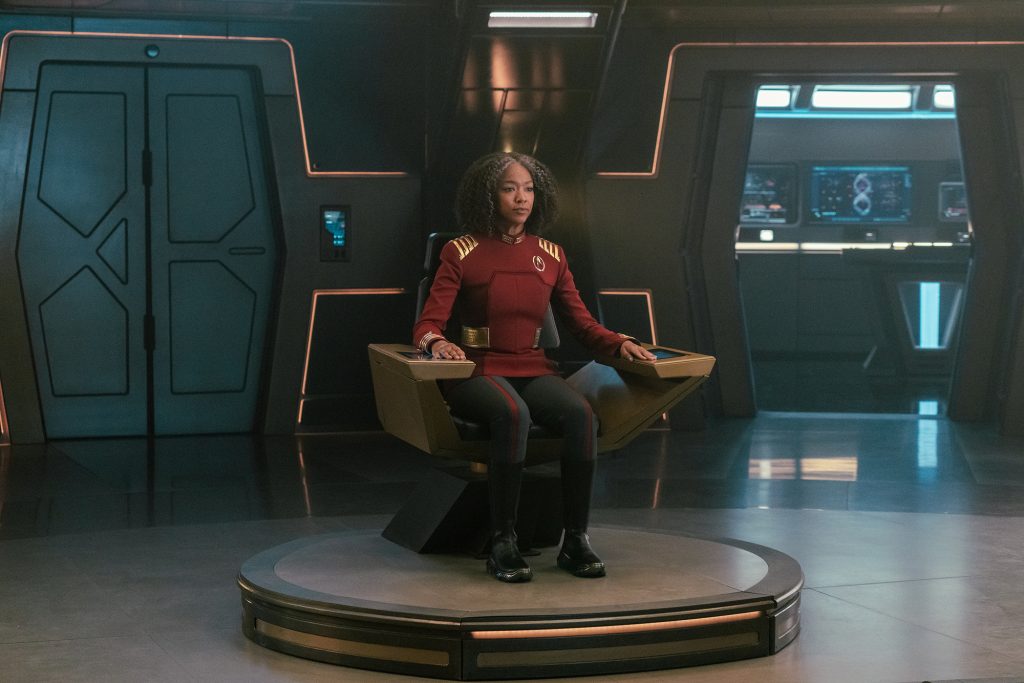
Stray Thoughts:
- Here’s a neat statistic from the fine folks over at TrekRanks : “Life, Itself” makes Discovery the longest-running Star Trek series ever. This show, from premiere date to today, is 11 days longer than the time between TNG ‘s airdates for “Encounter at Farpoint” and “All Good Things.”
- Why was Moll fighting Breen while in the portal? The Breen who were sucked in before her should have been deferential to their new commander, no?
- Burnham really should have warned Moll she was going to programmable-matter a dermal regenerator into her hand, as Moll could and should have easily taken the surprise tool in Burnham’s hand as a weapon.
- We see almost 20 Breen fighters pursuing Discovery . Why can’t such a large taskforce disable one ship?
- Culber gets to utter a version of the increasingly rare classic Trek line by saying, “I know I’m a doctor, not a physicist, but…,” and we’ll be damned if that didn’t put a smile on our face.
- Pay attention to Jörg Hillebrand on X , who will undoubtedly turn his eagle-eye toward identifying all the mementos in Kovich’s office.
- After voicing her opinion earlier in the season that Starfleet Academy was missing a key element, Tilly realizes in this episode that a one-on-one mentorship program is what the Academy needs. So, expect to see such a program play a role in the upcoming Starfleet Academy show.
- Book notes to Burnham that he planted the World Root, which was given to him by the Eternal Gallery and Archive in “ Labyrinths ,” on Sanctuary Four, the planet seen in “ That Hope is You, Part 1 .” In the epilogue for “Life, Itself,” we see a strong, mighty tree near Burnham and Book’s house that is likely the spawn of the World Root.
- Burnham seems to have named the pretty sci-fi deer on Sanctuary Four “Alice,” perhaps a reflection of how Alice’s Adventures in Wonderland played a role in Burnham’s upbringing.
- Did you notice how there’s a Starfleet insignia in Burnham’s backyard, which serves as an indicator of sorts of where the shuttle should pick up the admiral? Remember in the series pilot how Burnham and Georgiou traced a Starfleet insignia in the sand to indicate to Shenzhou where to pick them up. The symmetry is just *chef’s kiss*.
The complete Star Trek: Discovery series is now available to stream on Paramount+ . Season 5 stars Sonequa Martin-Green (Captain Michael Burnham), Doug Jones (Saru), Anthony Rapp (Paul Stamets), Mary Wiseman (Sylvia Tilly), Wilson Cruz (Dr. Hugh Culber), David Ajala (Cleveland “Book” Booker), Blu del Barrio (Adira) and Callum Keith Rennie (Rayner). Season five also features recurring guest stars Elias Toufexis (L’ak) and Eve Harlow (Moll).
Stay tuned to TrekNews.net for all the latest news on Star Trek: Discovery , Star Trek: Prodigy , Star Trek: Strange New Worlds , Star Trek: Lower Decks , and more.
You can follow us on X , Facebook , and Instagram .

Kyle Hadyniak has been a lifelong Star Trek fan, and isn't ashamed to admit that Star Trek V: The Final Frontier and Star Trek: Nemesis are his favorite Star Trek movies. You can follow Kyle on Twitter @khady93 .

May 31, 2024 at 1:58 pm
Great ending of Discovery!!! Hopefully a movie will come soon!
Your email address will not be published. Required fields are marked *
Trending Articles

Preview: Star Trek: Discovery 509 “Lagrange Point” With the finale of Star Trek: Discovery just over a week away, today we have a clip...

Review: Star Trek: Picard – Firewall Seven of Nine, a heroine who has resurged in popularity thanks to Jeri Ryan’s return to the franchise...
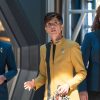
Preview: Star Trek: Discovery 507 “Erigah” The seventh episode of Star Trek: Discovery’s fifth and final season “Erigah” premieres this Thursday, May 9th. The...

Preview: Star Trek: Discovery 508 “Labyrinths” As we near the end of Star Trek: Discovery’s fifth and final season, the 8th episode “Labyrinths” will...

IMAGES
VIDEO
COMMENTS
Obsessed with restoring the Krenim Imperium, no matter the cost, a Krenim military temporal scientist creates changes in history that all but destroy Voyager. Day 1 A perfect day on a class M planet. An advanced civilization lives here, evidenced by a sprawling and technologically advanced metropolis. Suddenly, in the sky above, a tremendously large weapon appears. It fires a beam of energy at ...
Year of Hell. " Year of Hell " is a two-part episode from the fourth season of the American science fiction television series Star Trek: Voyager which aired on UPN in November 1997. It aired in two parts, on November 5 and November 11, 1997. Part I was directed by Allan Kroeker and Part II by Mike Vejar; it was written by Brannon Braga and Joe ...
Year of Hell: Directed by Allan Kroeker. With Kate Mulgrew, Robert Beltran, Roxann Dawson, Robert Duncan McNeill. Voyager comes across a Krenim timeship that's wiping whole species from existence to change the existing timeline.
Year of Hell, Part II: Directed by Michael Vejar. With Kate Mulgrew, Robert Beltran, Roxann Dawson, Robert Duncan McNeill. A year after Voyager encounters the Krenim time ship, a badly damaged Voyager with a skeleton crew leads an armada of interplanetary ships against them.
Throughout its seven seasons, the series "Star Trek: Voyager" became notorious for pushing the reset button. One moment, however, will likely always stand out in the minds of fans: when Captain Janeway declared "Time's up," ramming the starship Voyager into the Krenim weapon ship and negating the alternate timeline known as the "Year of Hell."
Janeway knows how to get the job done: stick together, lean on your values, and make allies. But this is the "Year of Hell", the season four two-parter where Voyager is so constantly under siege that Janeway has forgotten what month it is, let alone that it's her birthday. StarTrek.com. After 200 years, Annorax has pushed past the barrier ...
The temporal weapon to wipe out a species is a tad far-fetched for me, even within the paradigm of Trek sci-fi. Kind of reminds me of the Genesis weapon in Wrath of Khan, which was more believable and had some pseudo-science behind it. "Year of Hell, Part I" deserves a 3-star rating.
The legend continues with Star Trek: Voyager, the newest chapter in the franchise. Catapulted into the distant sector of the galaxy, the Federation's first female captain and her crew encounter strange new worlds in their quest to return home. ... Year Of Hell, Part 1. A disruption in the space-time continuum forces the crew to evacuate Voyager ...
The Krenim Imperium is attempting to return to its former glory by using a temporal weapon ship that can erase entire species of their enemies from existence.
The "Year of Hell" season. The season four episode "Year of Hell," written by Braga and Menosky, is considered one of the Voyager's best.In the two-parter, the crew was split apart and ...
The Voyager Transcripts - Year of Hell. Year of Hell Stardate: 51268.4 - 51252.3 Original Airdate: 5 + 12 November 1997. Day 1. [Krenim Timeship - Bridge] (Above a city built on the usual grid system with travel tubes in mid air, a spaceship with six projections is hanging. The projections hold a massive 'jewel' at one end, which magnifies the ...
After a year of loss, a beat up voyager leads a fleet to combat the time ship to try and put back history that has been manipulated again and again.http://ww...
Anyone who's watched Star Trek: Voyager knows that there's a 2-part episode called the Year of Hell. (Season 4, Episodes 8 & 9) ... and how we wanted to be creative storytellers playing with the Star Trek toy box. "Year of Hell" is such a fascinating point in Voyager history." As for why Deep Space Nine didn't have the same struggle ...
A former writer and co-producer of Star Trek: Voyager shares how a two-part episode almost became the basis for the whole season. ... he shared how the two-part Season 4 entry "Year of Hell ...
Exactly what the show should have been all along 😆⚠️ Technical Notes ⚠️So, everybody knows - at least in Trekkerdom - that the 'Voyager' DVD set is the rema...
Year of Hell, Pt. 1. Available on Paramount+ with SHOWTIME, Prime Video, iTunes, Paramount+. S4 E8: The Krenim Imperium is attempting to return to its former glory by using a temporal weapon ship that can erase entire species of their enemies from existence. Sci-Fi Nov 5, 1997 45 min.
It does what it says on the tin - a trailer for the season four episode "Year of Hell". I think the music is from the Troy soundtrack.
VOYAGER - The Year of Hell. The 2 part episodes really make no sense... bear with me before disputing this query. In a previous episode when Kes experienced her life in reverse steps, she became fully aware and explained to Captain Janeway and the doctor about the Krenim and the 1.47 phase variance, so they had the information to prepare for ...
Krenim leader Annorax hopes to change history, and save his people, by turning back time, but the Voyager crew has other plans.
9. Nov. 12, 1997. 8.6. The "Year of Hell" is a two-part episode that, according to Star Trek Voyager: A Celebration, could've lasted for an entire season. The episode centers on a new species called the Kremin, who developed a "timeship" that could erase entire civilizations from history.
3. Scorpion. When it comes to Star Trek: Voyager 's two-part episodes, there are a lot of reasons we recommend fans watch (or re-watch) "Scorpion." First, this is the episode that brings the Borg ...
Krenim leader Annorax hopes to change history and save his people by turning back time, but the Voyager crew has other plans.
Seven of Nine got a drink named after her because of Star Trek: Picard, not Star Trek: Voyager.The crew of the USS Voyager were hailed as heroes upon their return to the Alpha Quadrant, but Seven of Nine was regarded with suspicion and outright discrimination as an ex-Borg. Despite being completely severed from the Borg Collective, Seven of Nine's application to join Starfleet was rejected ...
New research shows that a planet spotted around the real-life star 40 Eridani A, famous for hosting Dr. Spock's fictional home world in 'Star Trek', may have been an optical illusion all along.
Working with only a skeleton crew, Captain Janeway desperately attempts to repair Voyager in order to stop Annorax.
Working with only a skeleton crew, Captain Janeway desperately attempts to repair Voyager in order to stop Annorax.
Review: Star Trek: Discovery Season 5 Episode 10 "Life, Itself" Star Trek: Discovery delivers an excellent series finale that surpassed our high expectations, as this show ends its five-season ...